 |
||
|
HOME
|
US Navy -
ships
|
US Navy - air
units
|
USMC - air
units
|
International
Navies
|
Weapon Systems
|
Special Reports |
||
|
US Navy - Guided Missile Cruiser CG 73 - USS Port Royal |
||
|
||
| 09/24 | ||
|
Type,
class: Guided Missile Cruiser (CG); Ticonderoga
class Builder: Ingalls Shipbuilding, Pascagoula, Mississippi, USA STATUS: Awarded: February 25, 1988 Laid down: November 20, 1991 Launched: November 20, 1992 Commissioned: July 4, 1994 (Savannah, Georgia) Decommissioned: September 29, 2022 Fate: laid up at Naval Inactive Ship Maintenance Facility (NISMF), Pearl Harbor, Hawaii Namesake: the Battle of Port Royal, South Carolina (American Civil War 1861) Ships Motto: THE WILL TO WIN Technical Data: see: INFO > Ticonderoga class Guided Missile Cruiser - CG |
||
| images | ||
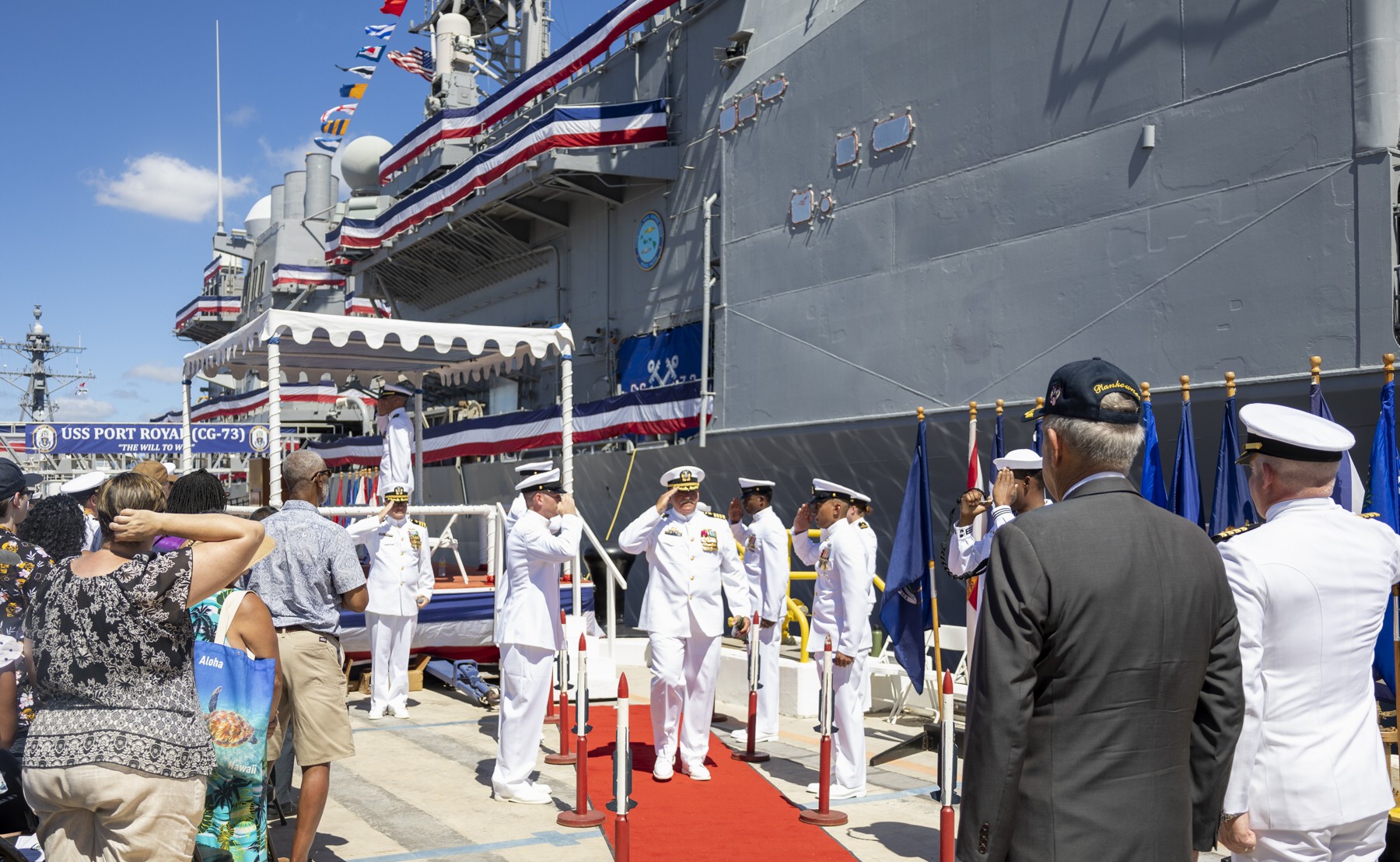 decommissioning ceremony at Joint Base Pearl Harbor-Hickam, Hawaii - September 29, 2022 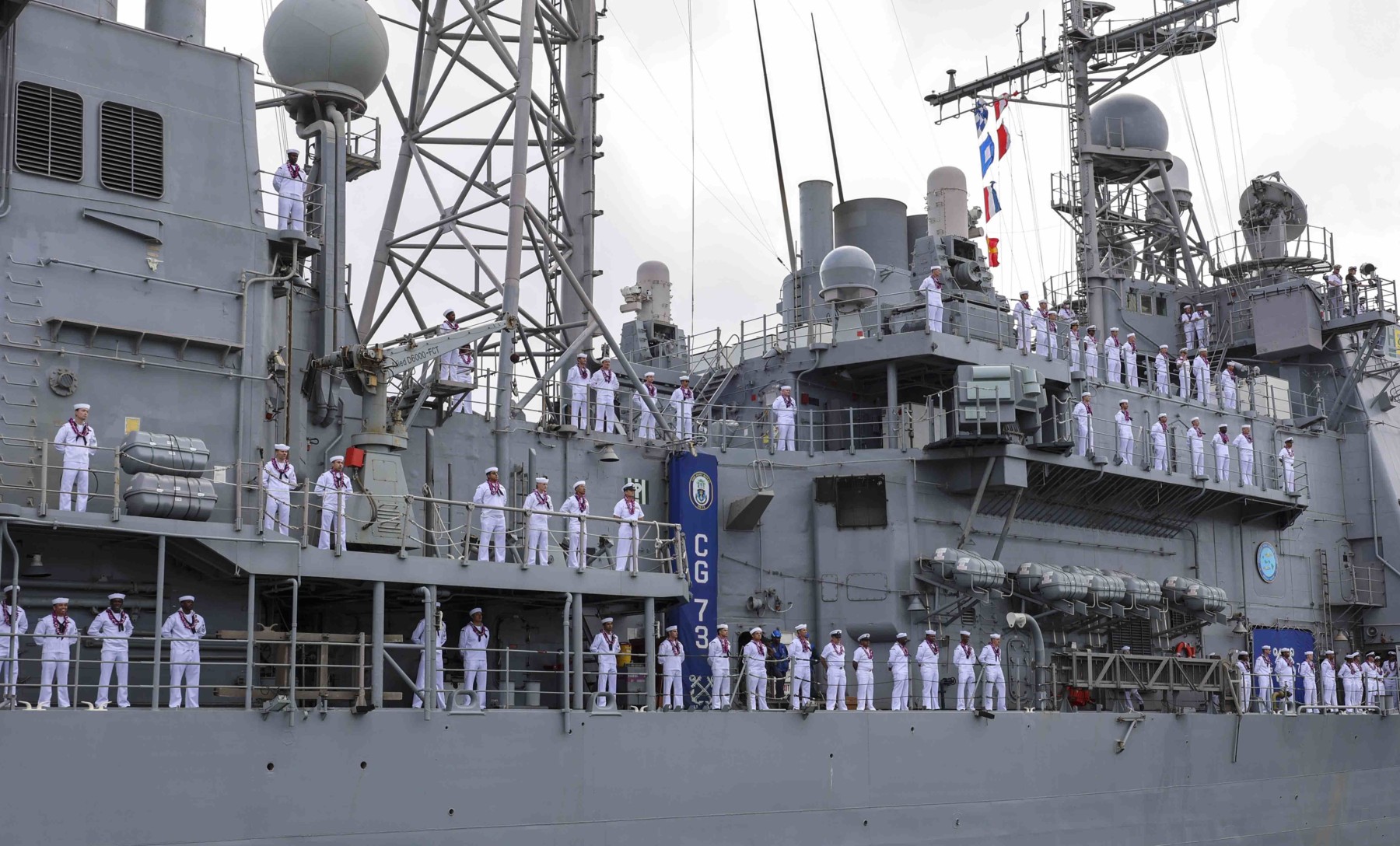 returning to Joint Base Pearl Harbor-Hickam, Hawaii - July 2022 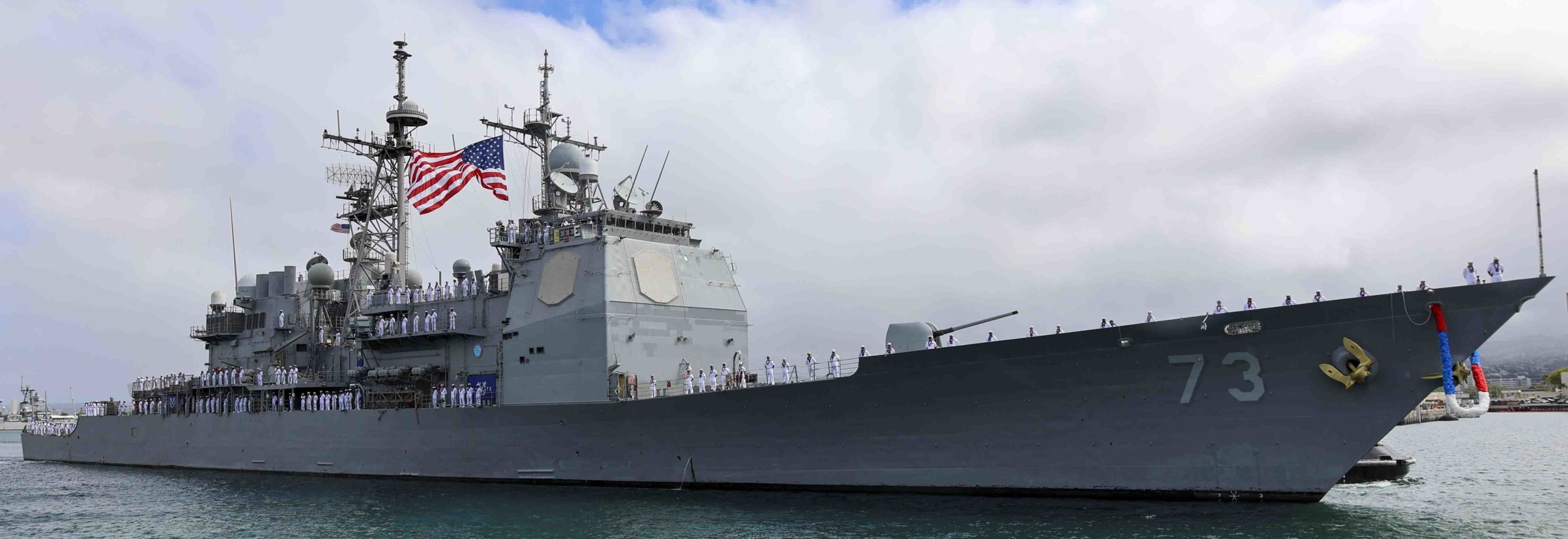 returning to Joint Base Pearl Harbor-Hickam, Hawaii - July 2022 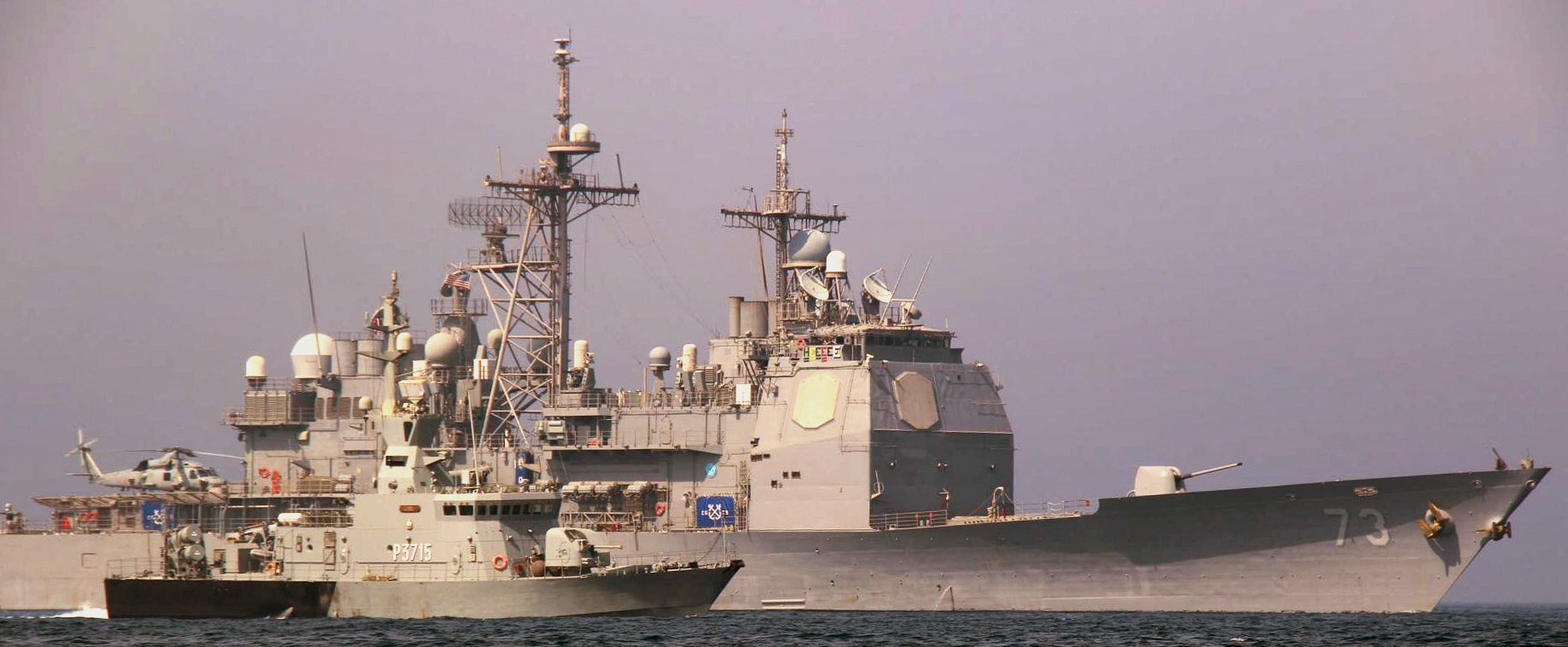 Arabian Gulf - June 2022 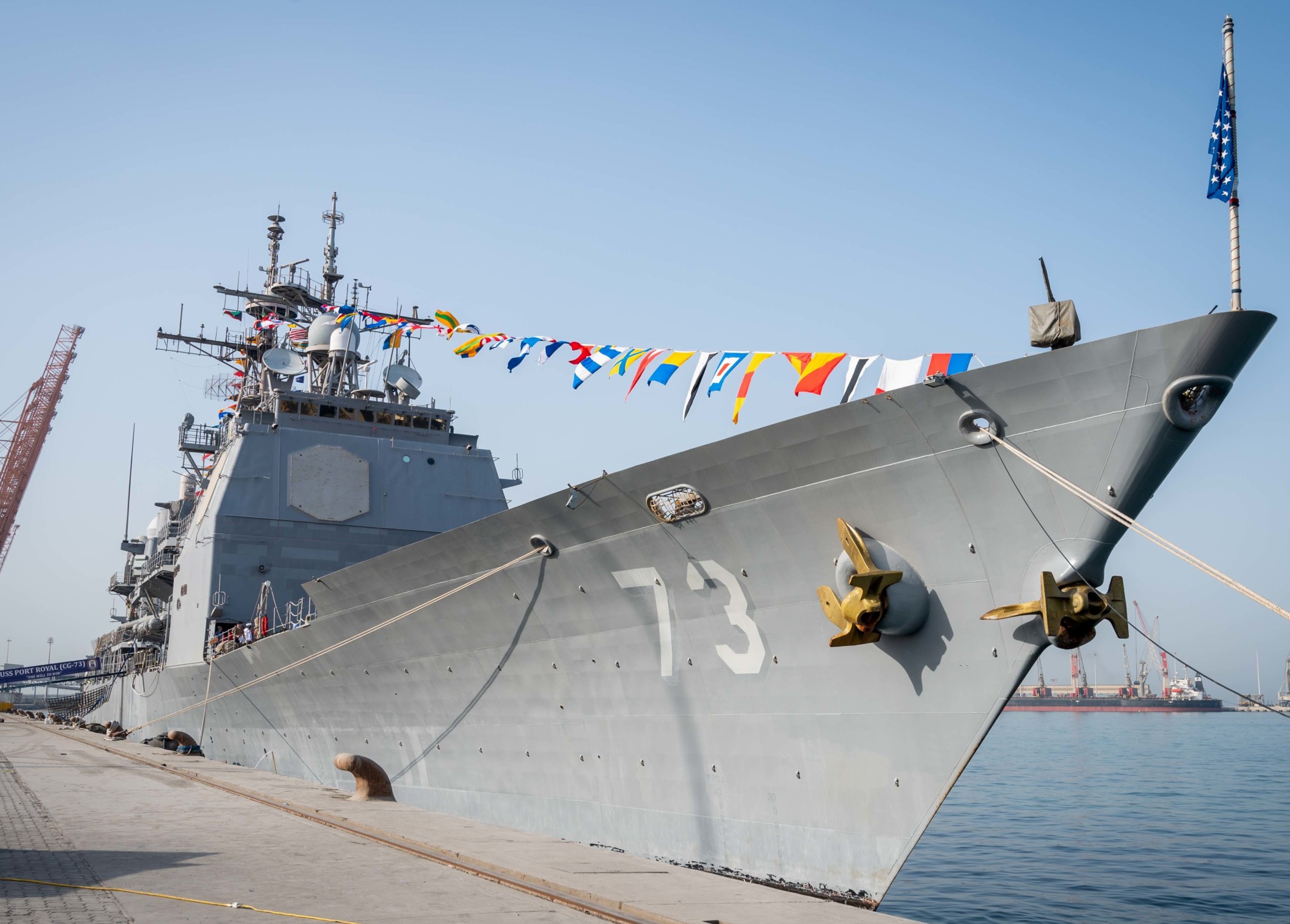 Port of Shuaiba, Kuwait - June 2022 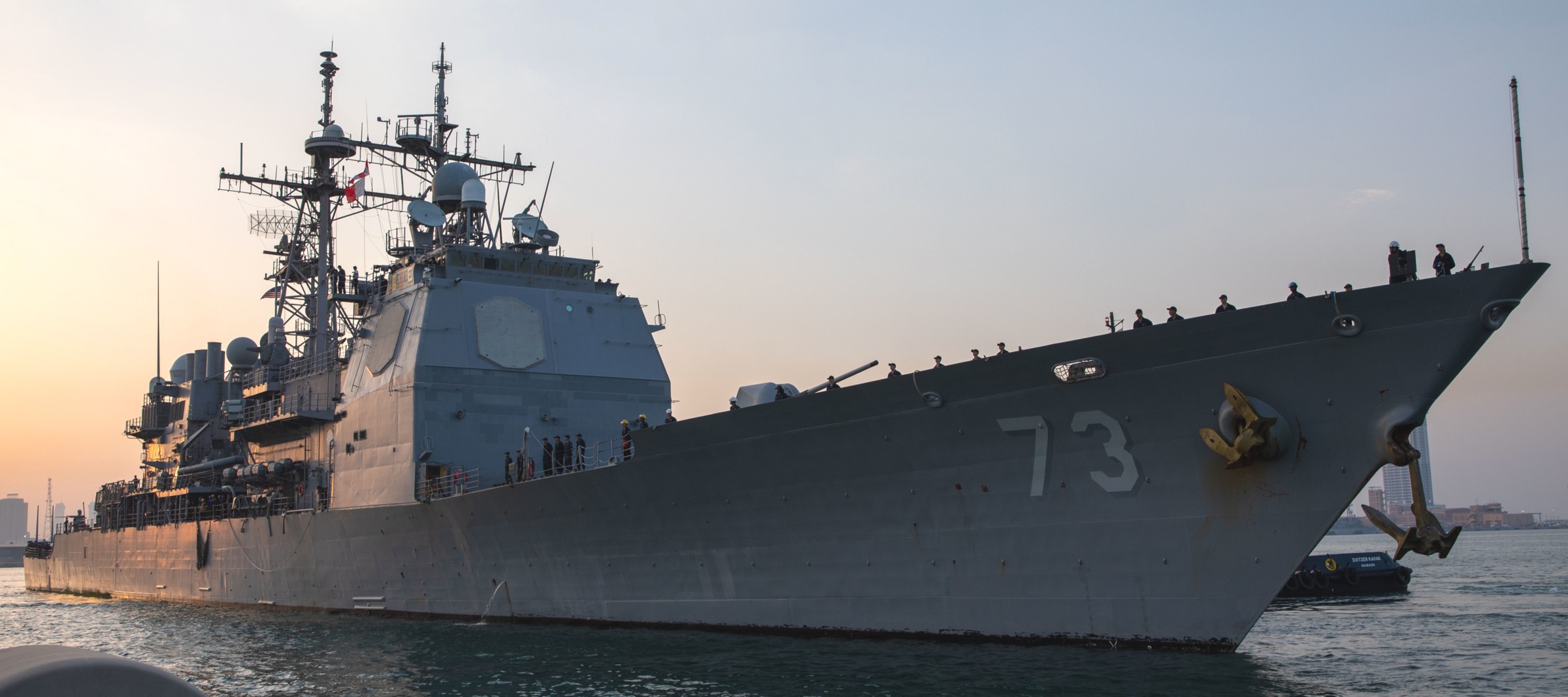 Manama, Bahrain - June 2022 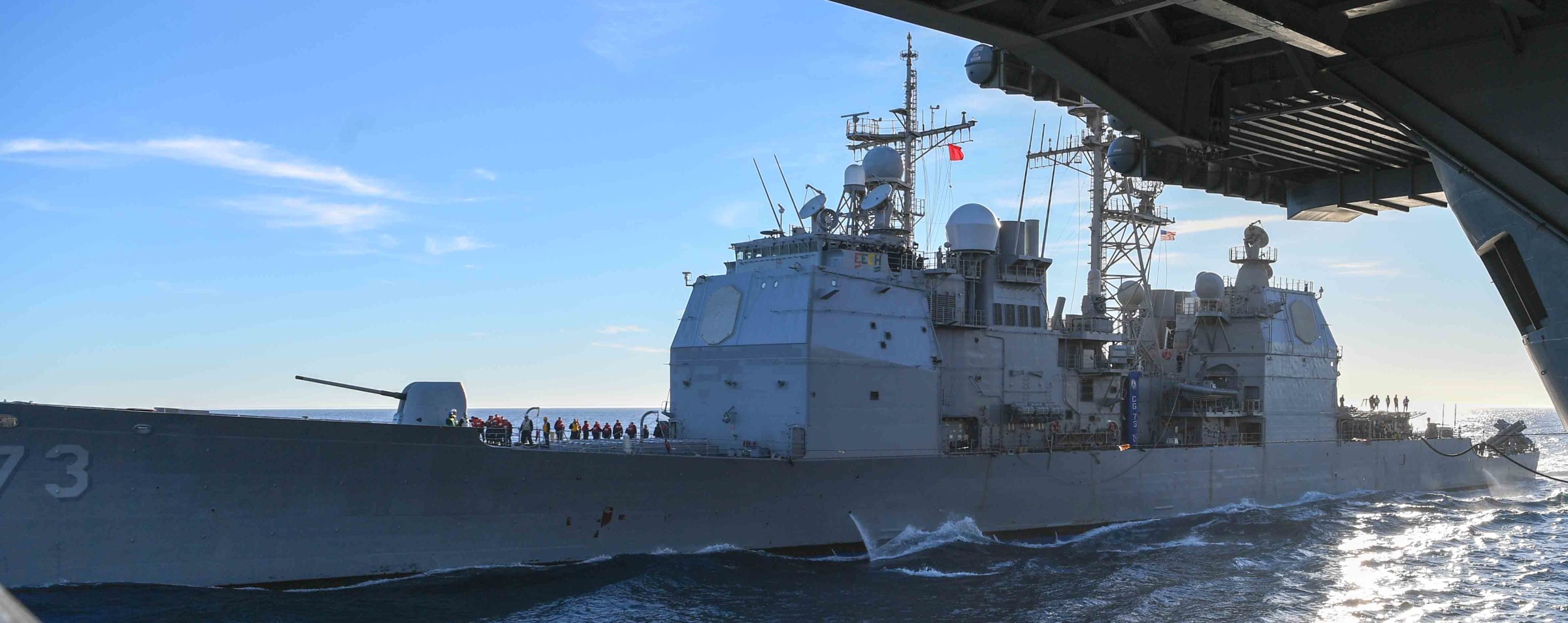 Pacific Ocean - November 2021 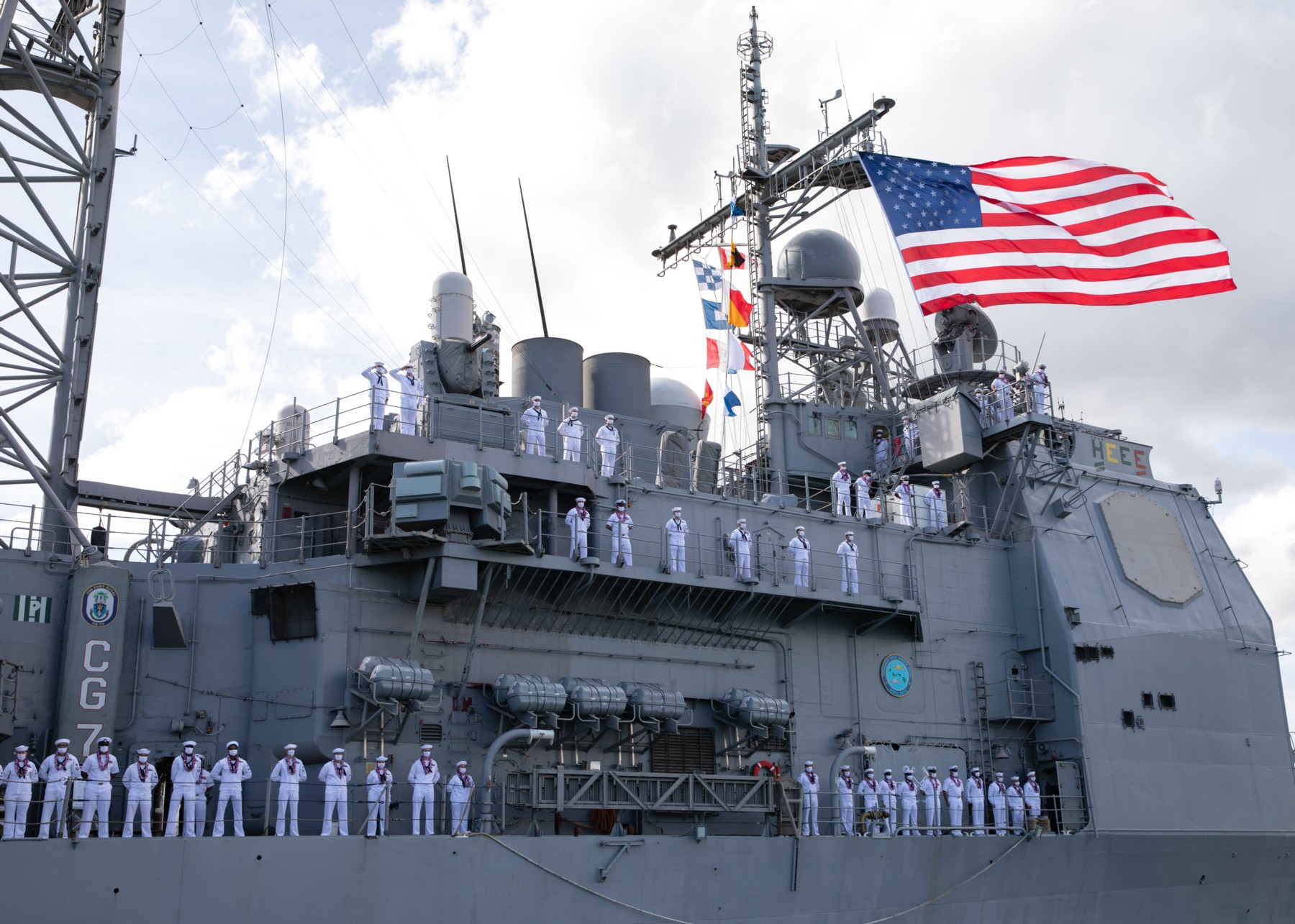 returning to Joint Base Pearl Harbor-Hickam, Hawaii - April 2021 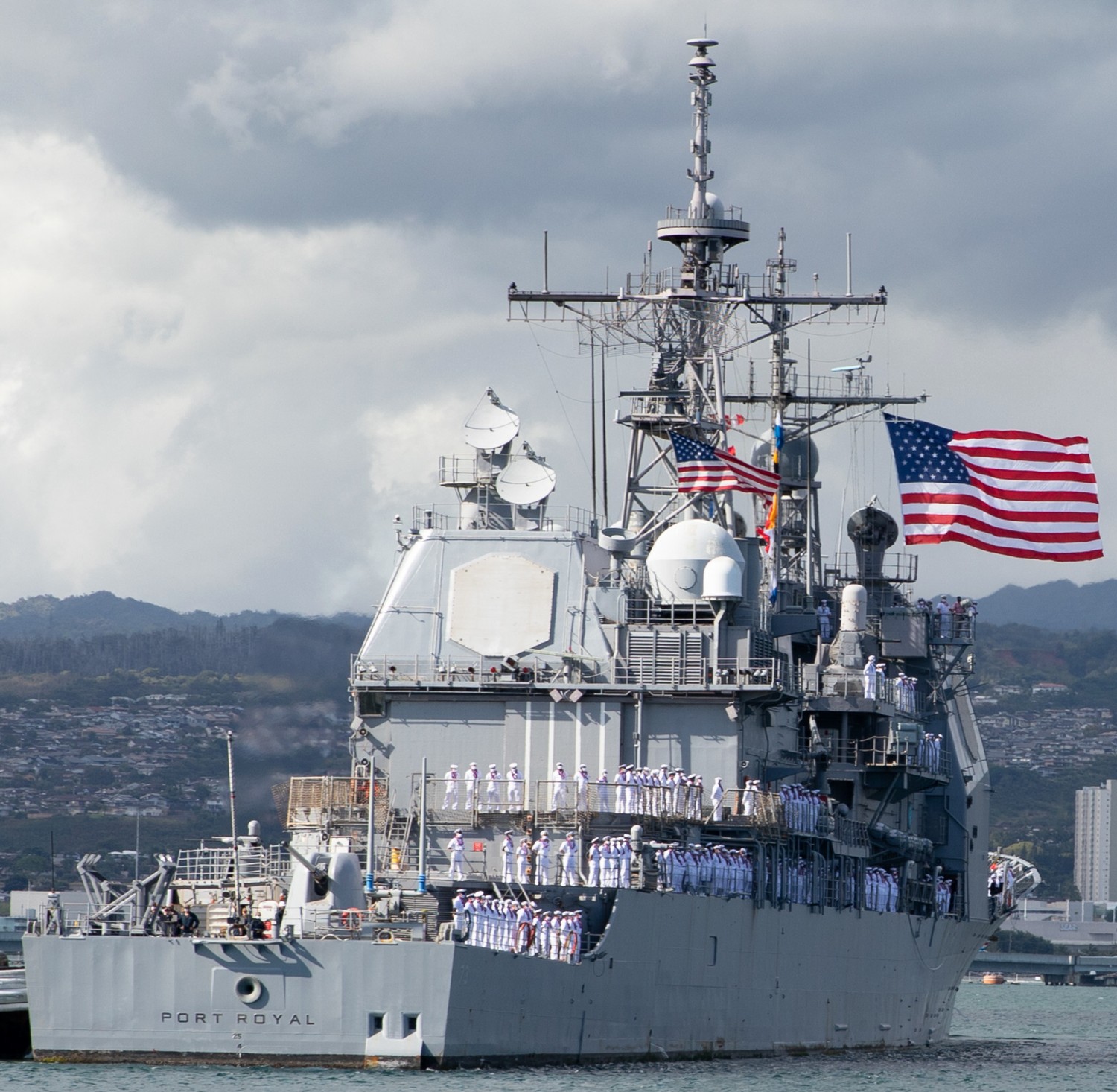 returning to Joint Base Pearl Harbor-Hickam, Hawaii - April 2021  returning to Joint Base Pearl Harbor-Hickam, Hawaii - April 2021 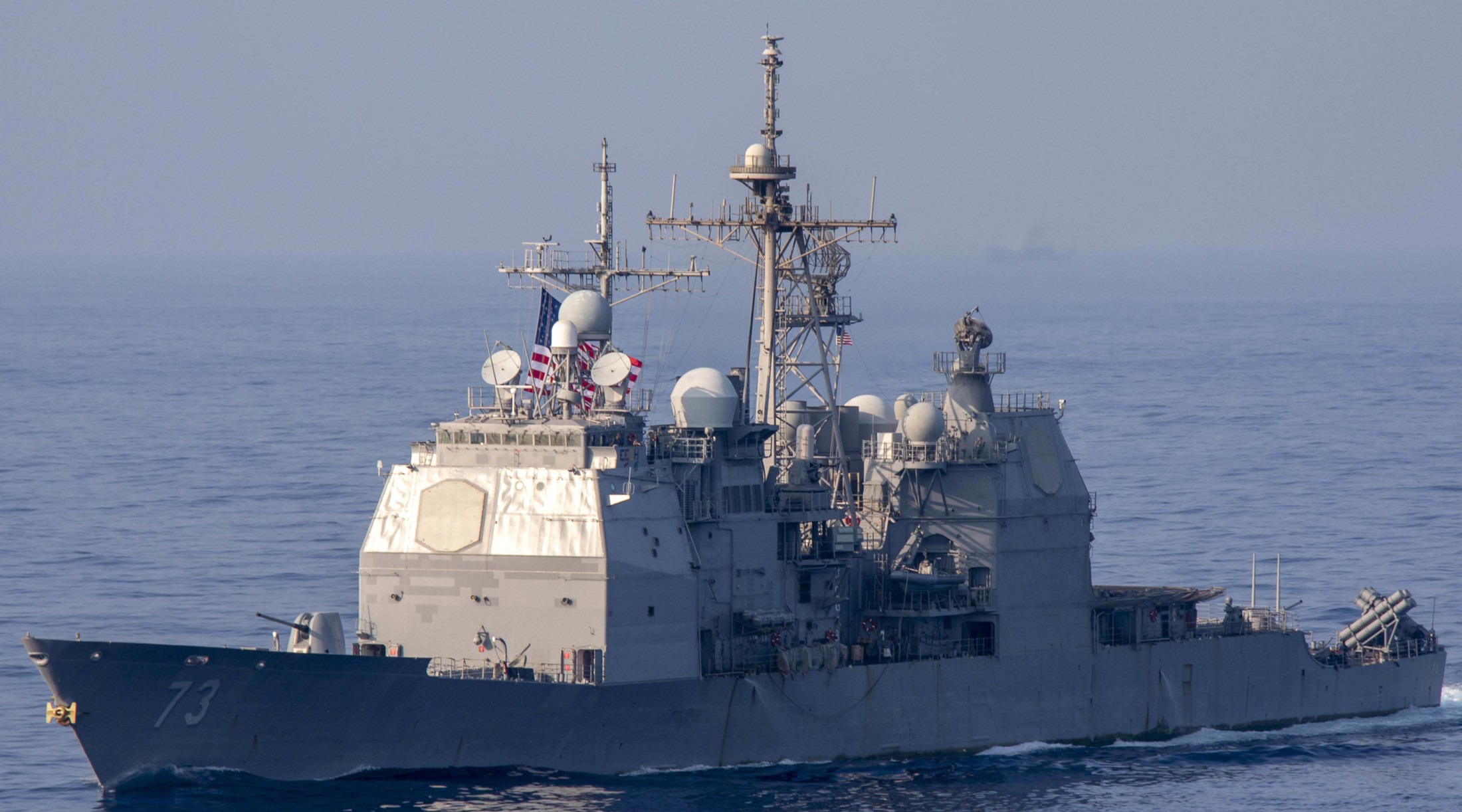 South China Sea - April 2021 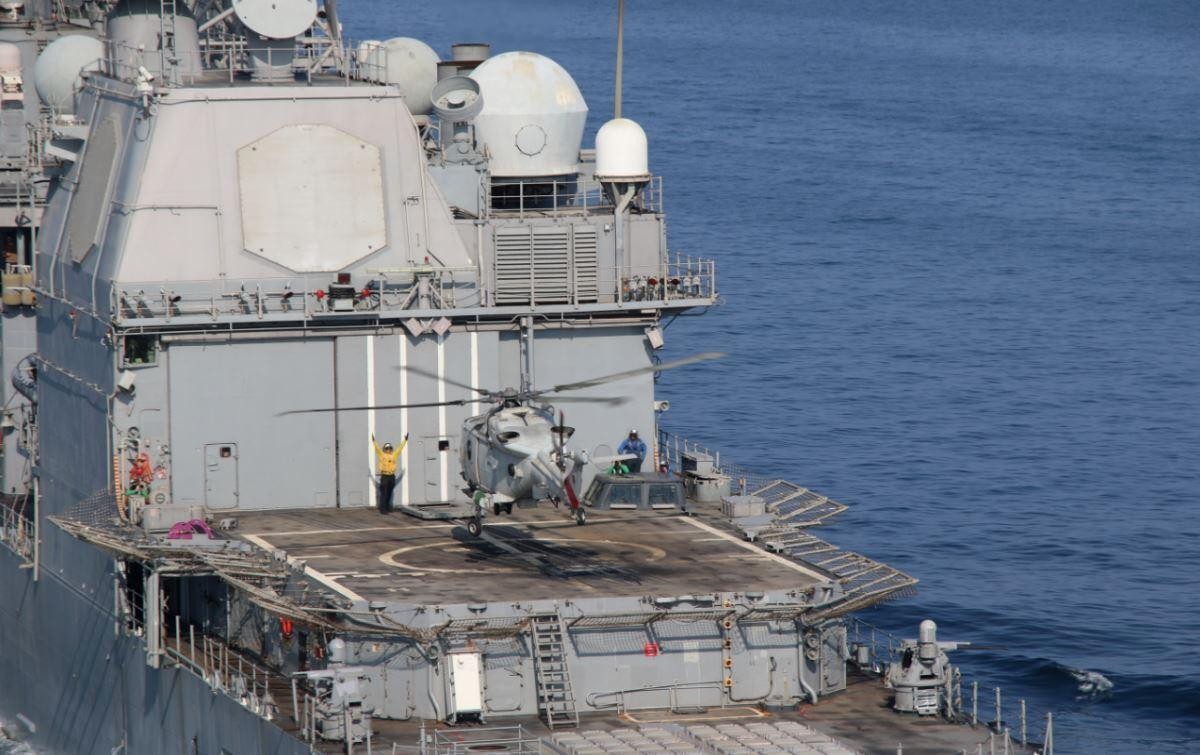 Sea of Oman - February 2021 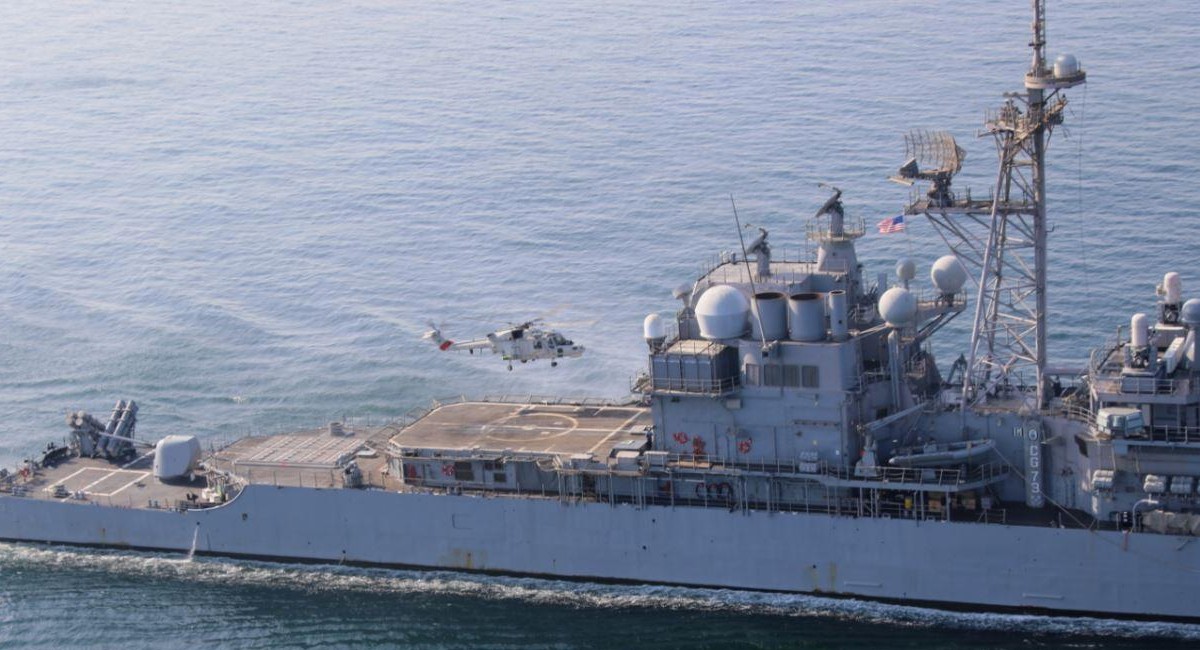 Sea of Oman - February 2021  Sea of Oman - February 2021 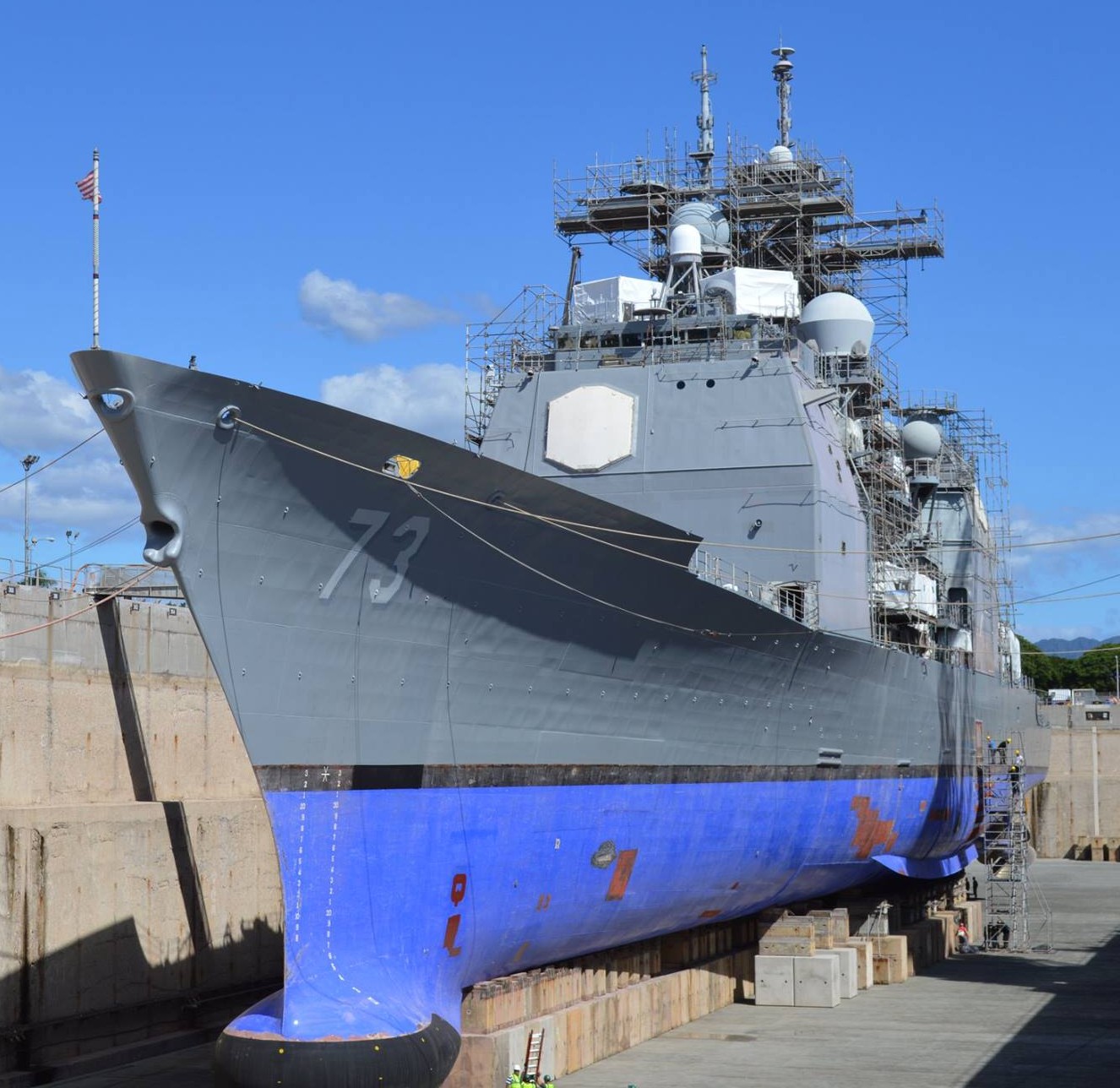 in dry dock at Pearl Harbor Naval Shipyard, Hawaii - January 2019 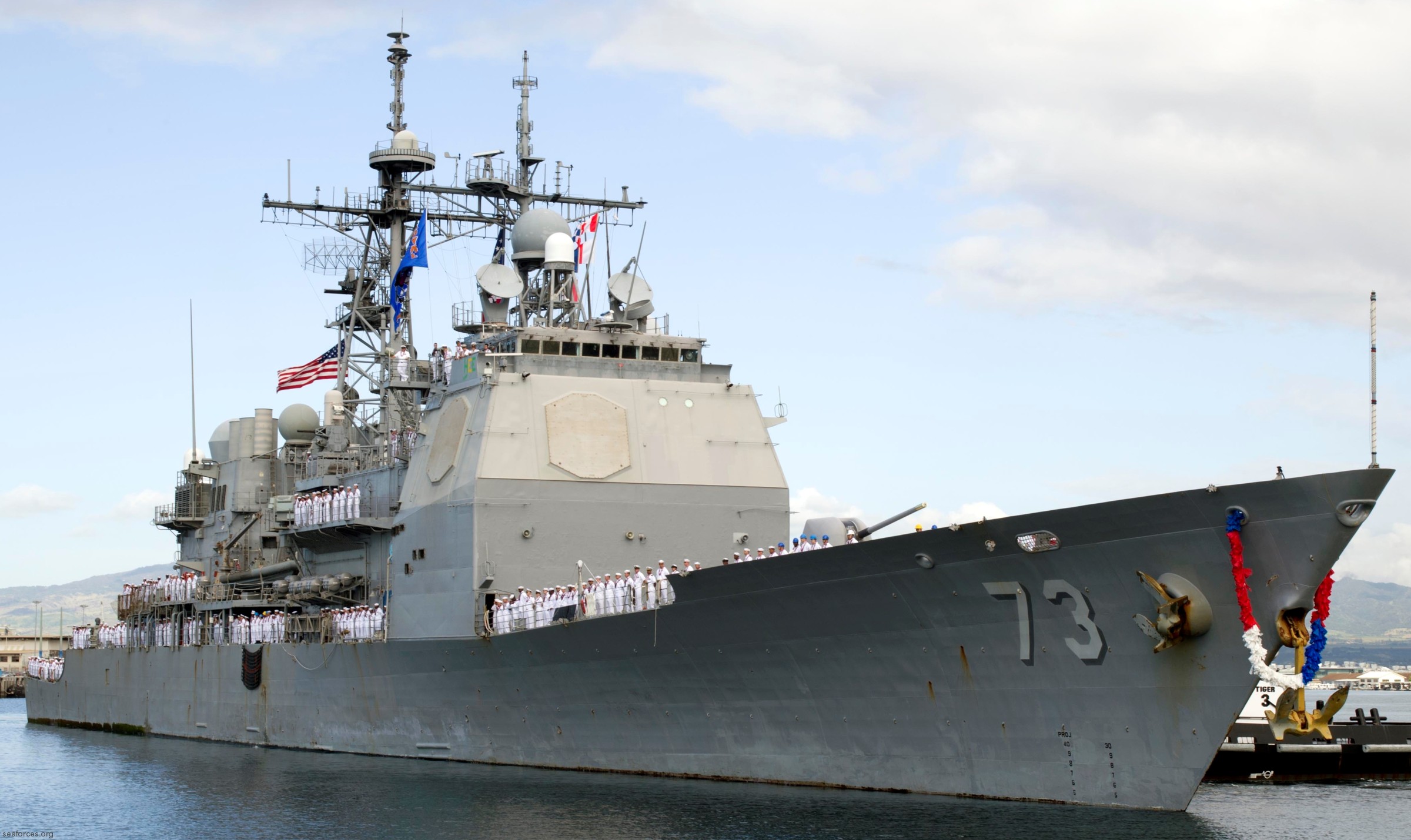 returning to Joint Base Pearl Harbor-Hickam, Hawaii - March 2017 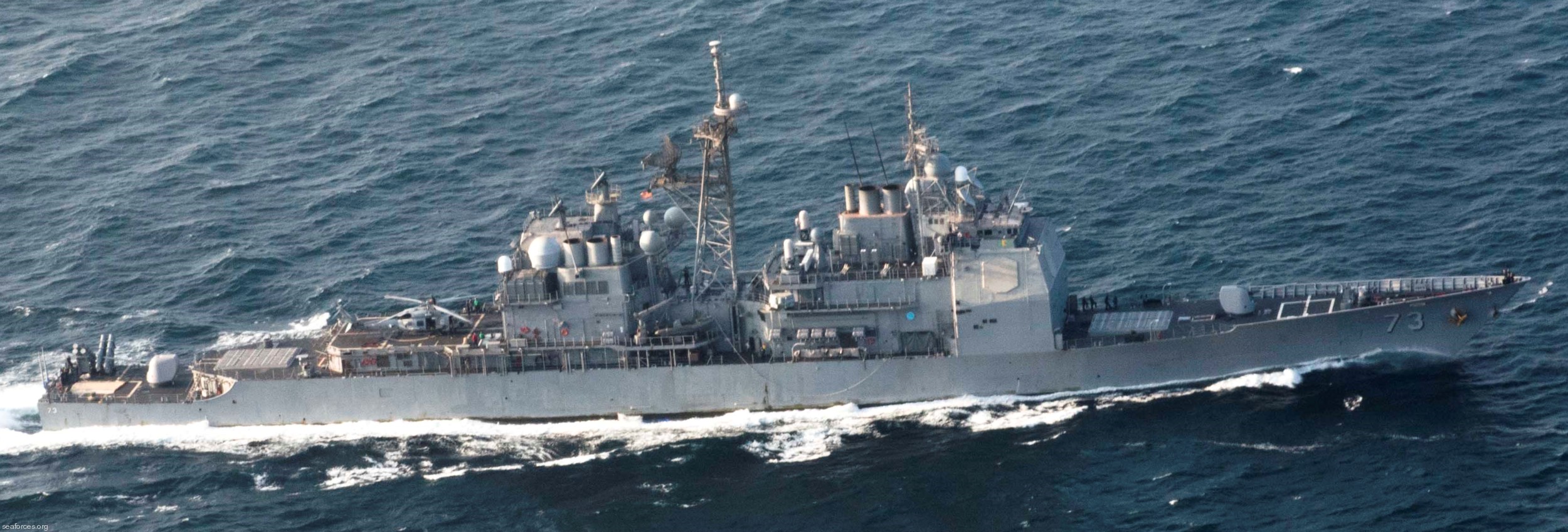 5th Fleet AOR - November 2016 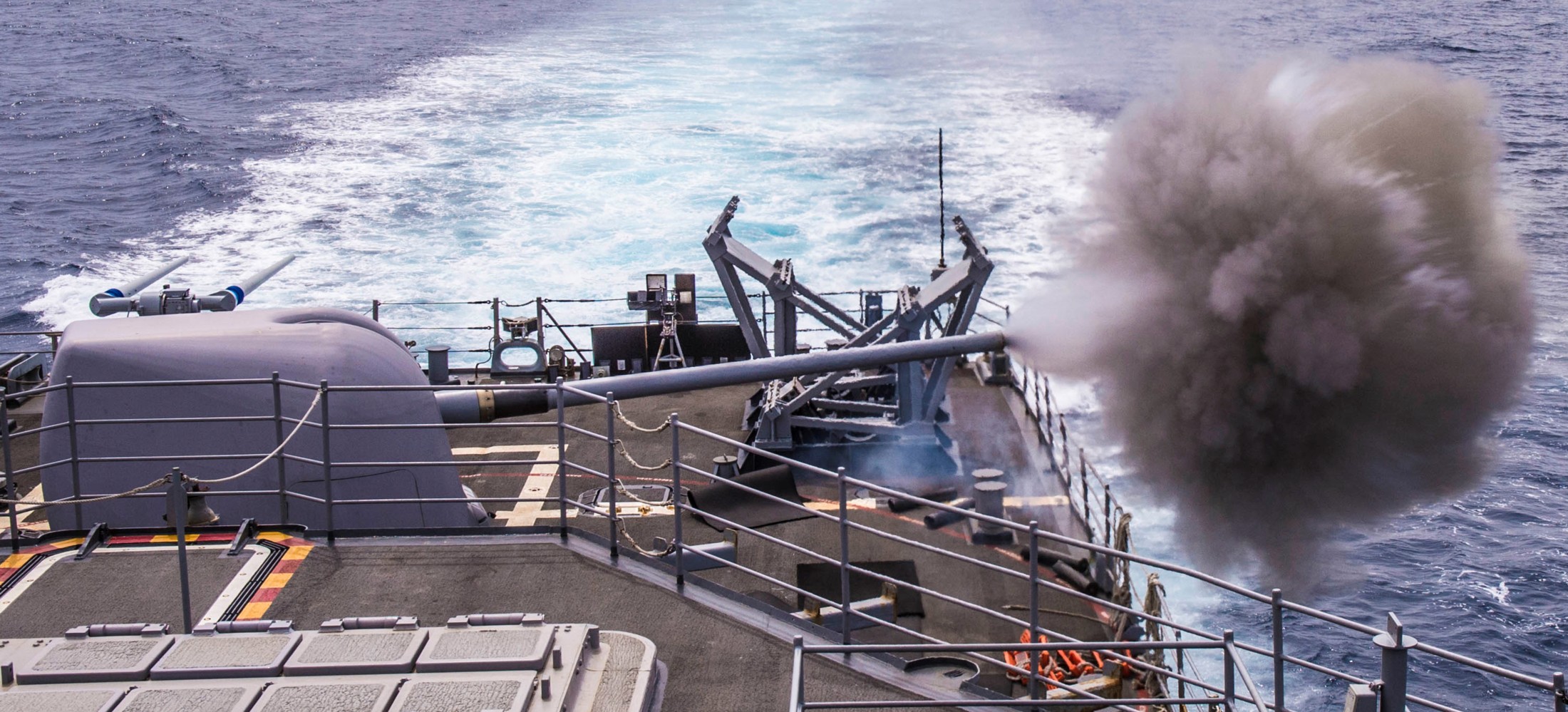 aft Mk-45 gun fire exercise - Pacific Ocean - April 2016 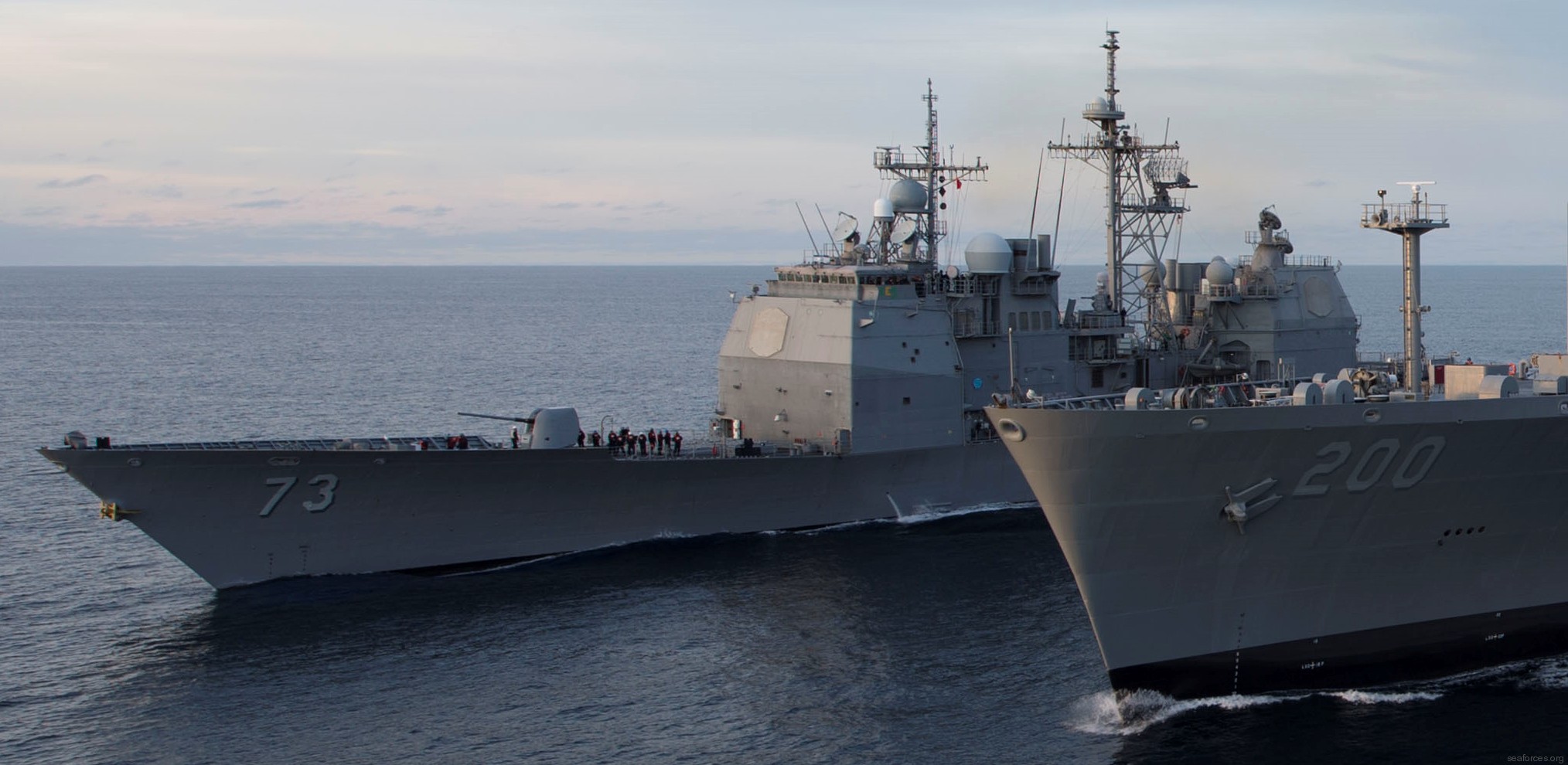 Pacific Ocean - January 2016 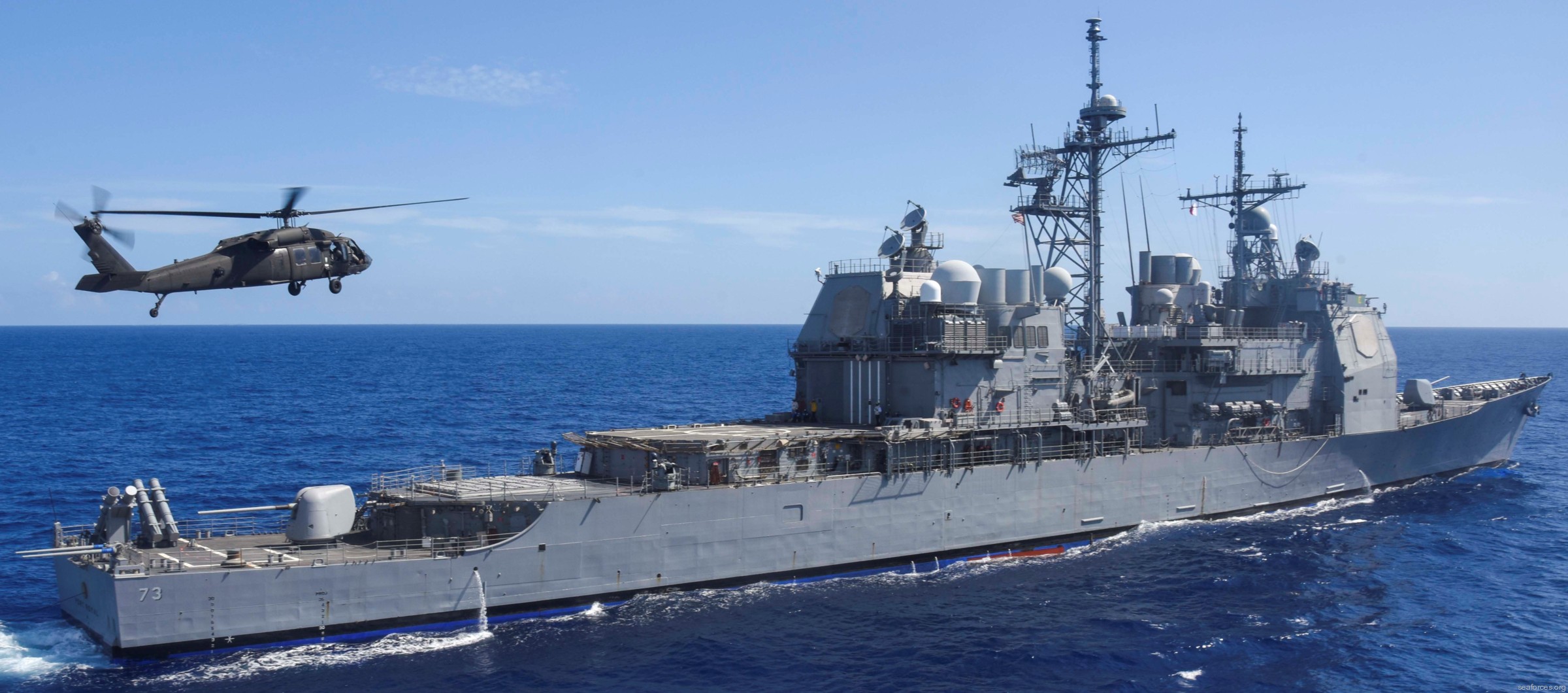 Pacific Ocean - August 2015 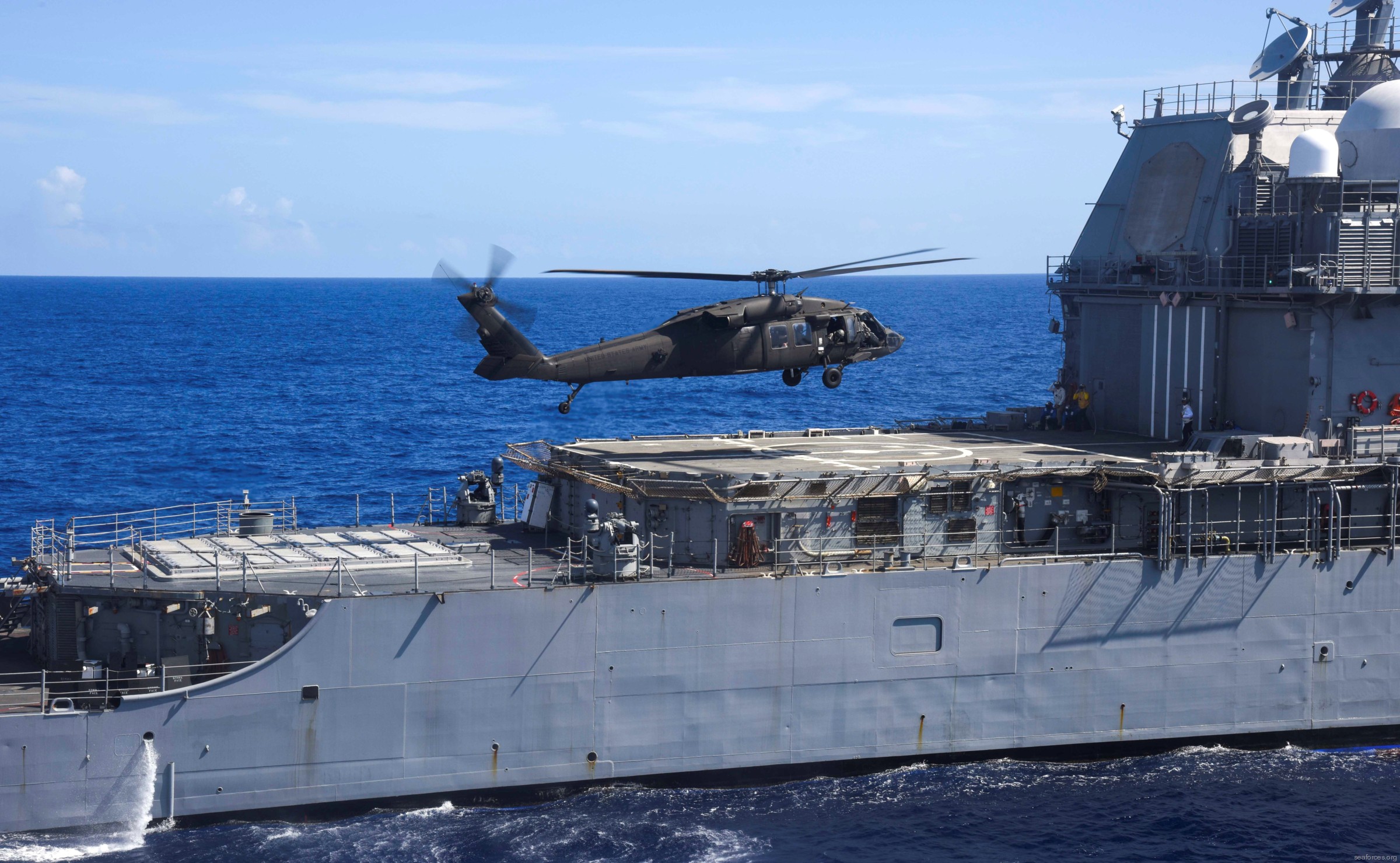 Pacific Ocean - August 2015 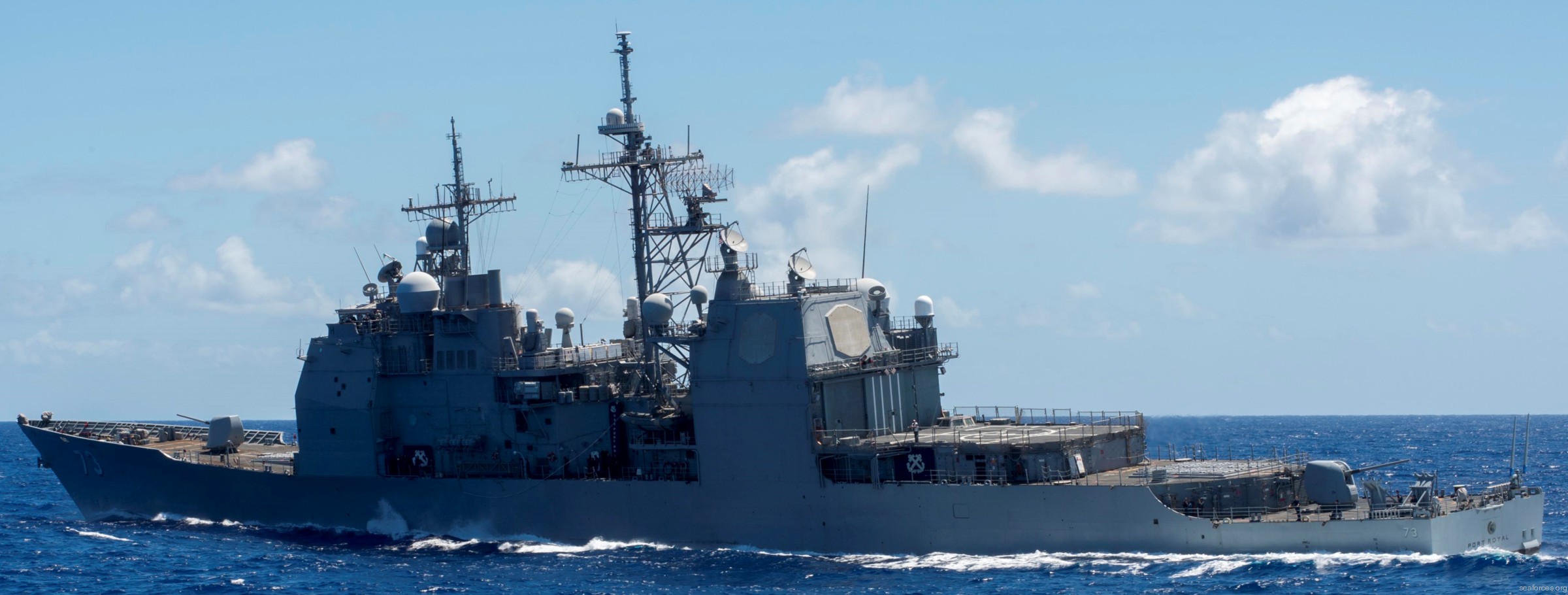 during exercise RIMPAC 14 - Pacific Ocean - July 2014 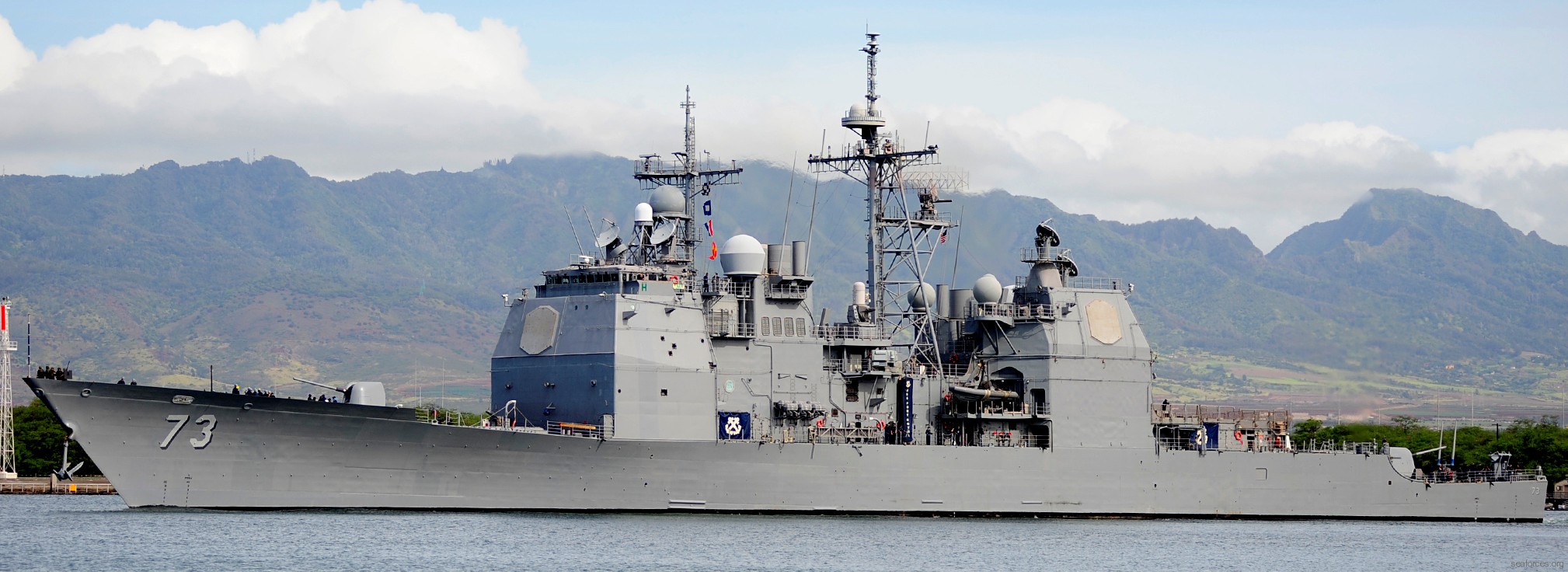 Pearl Harbor, Hawaii - July 2014 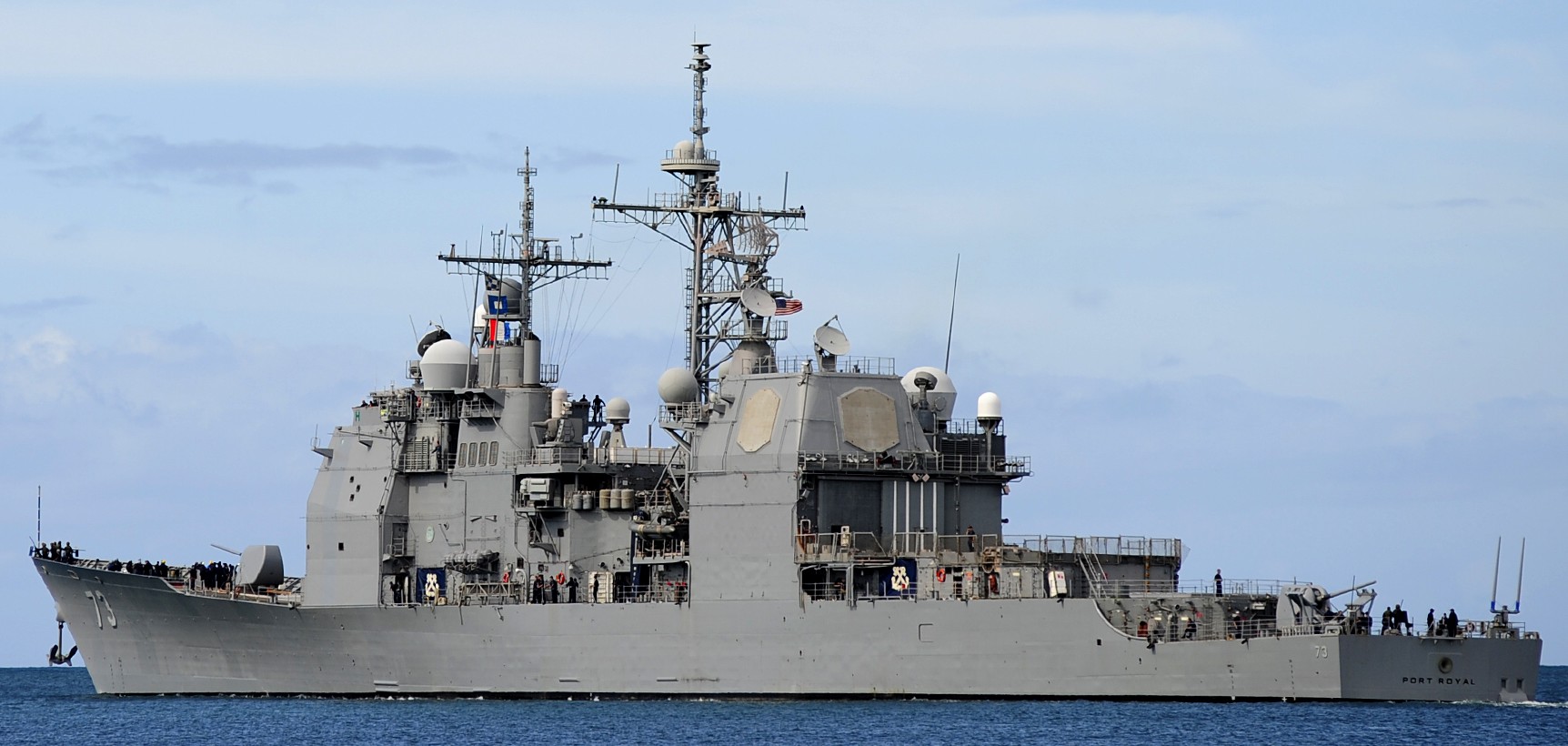 Pearl Harbor, Hawaii - June 2014 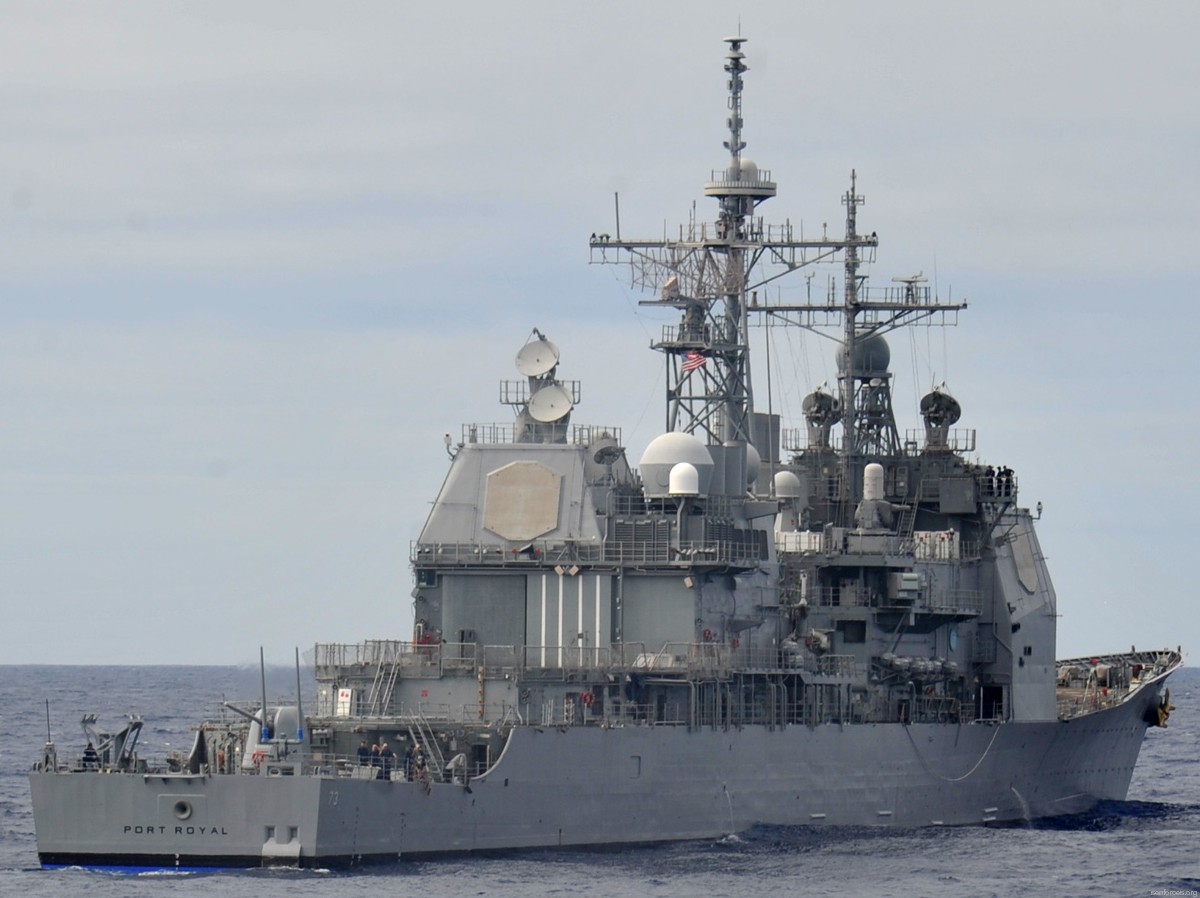 during exercise Koa Kai 14-1 - Pacific Ocean - January 2014 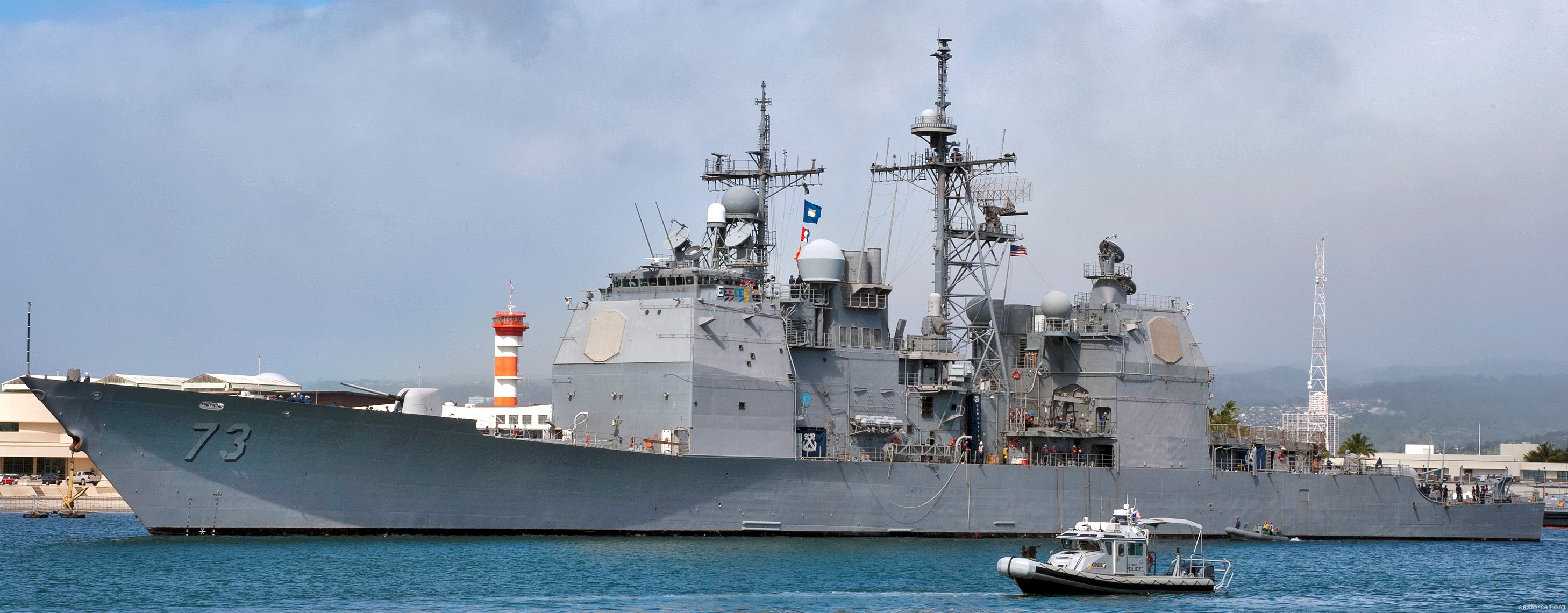 Pearl Harbor, Hawaii - February 2013 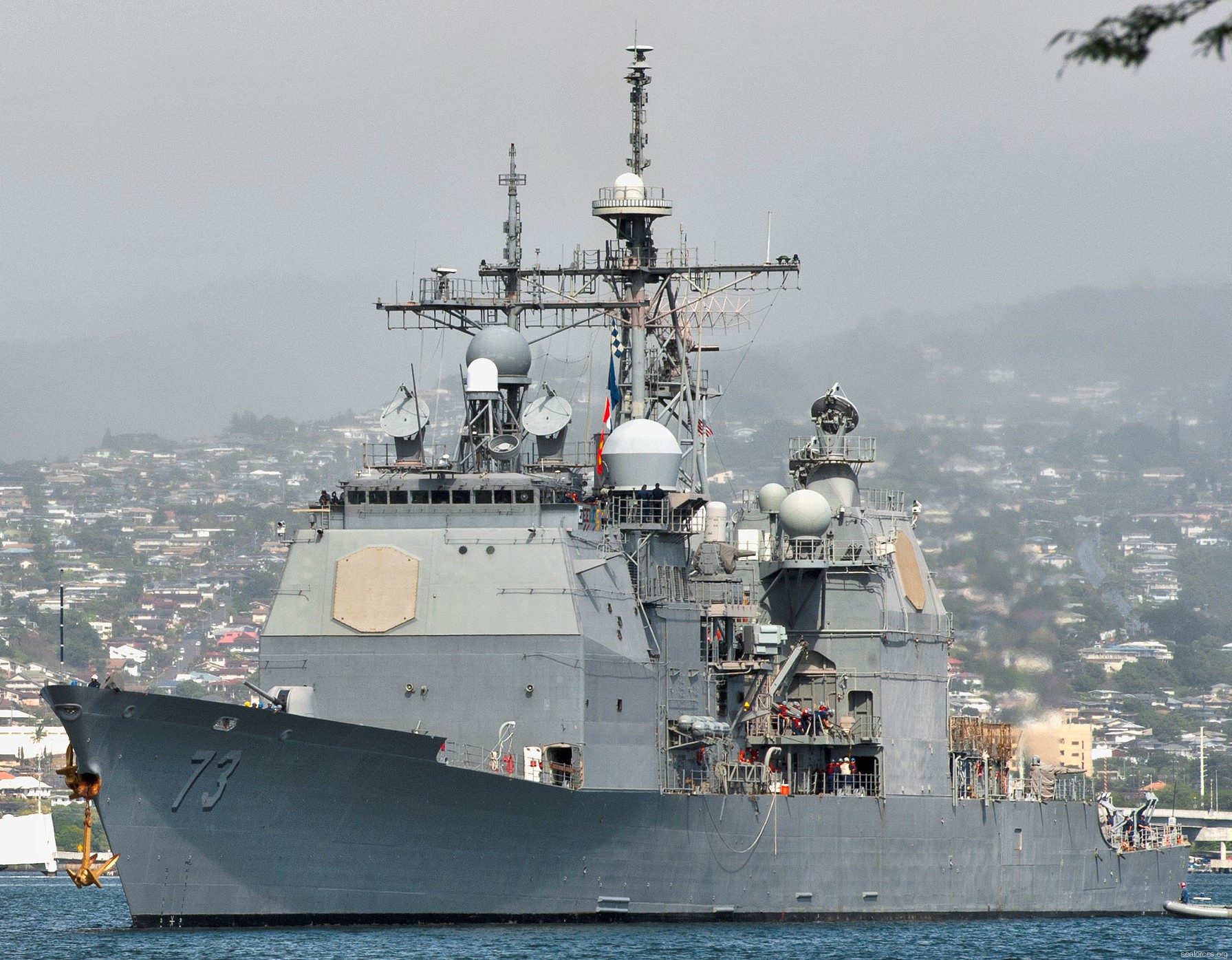 Pearl Harbor, Hawaii - February 2013  departing Joint Base Pearl Harbor-Hickam, Hawaii for exercise RIMPAC - July 2012 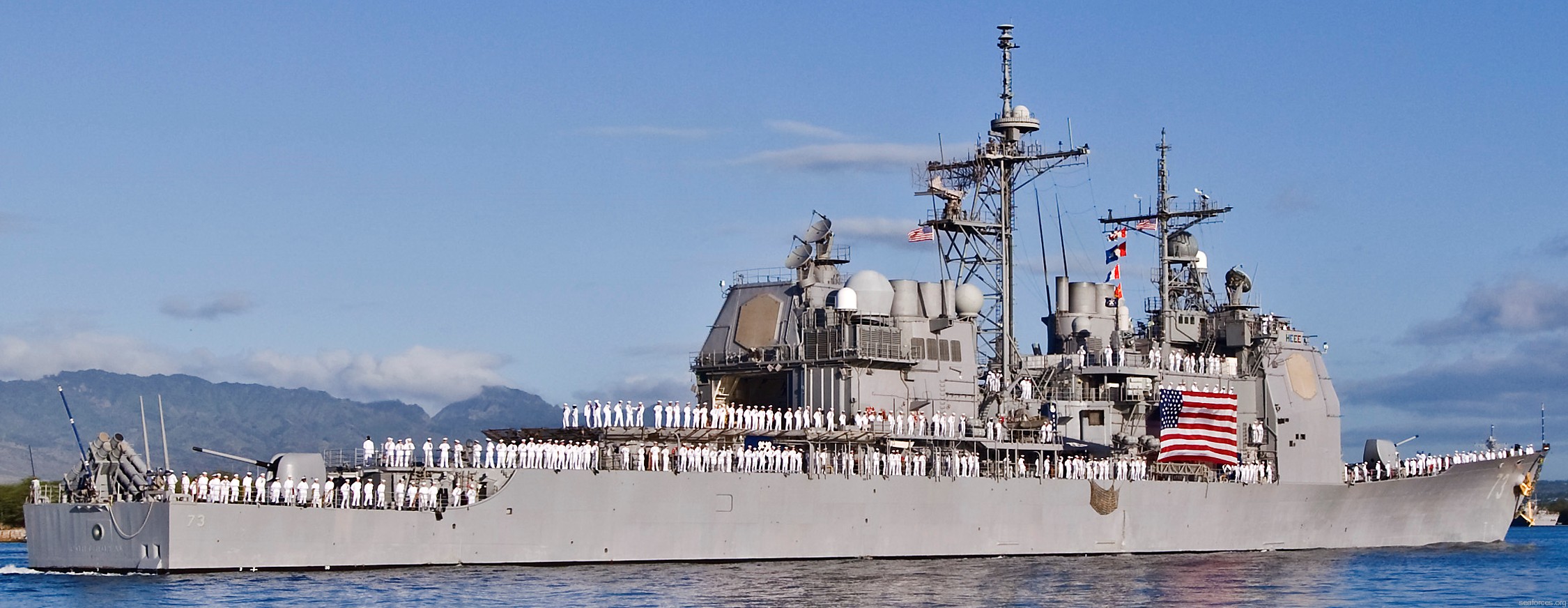 returning to Joint Base Pearl Harbor-Hickam, Hawaii - February 2012  departing Joint Base Pearl Harbor-Hickam, Hawaii - June 2011 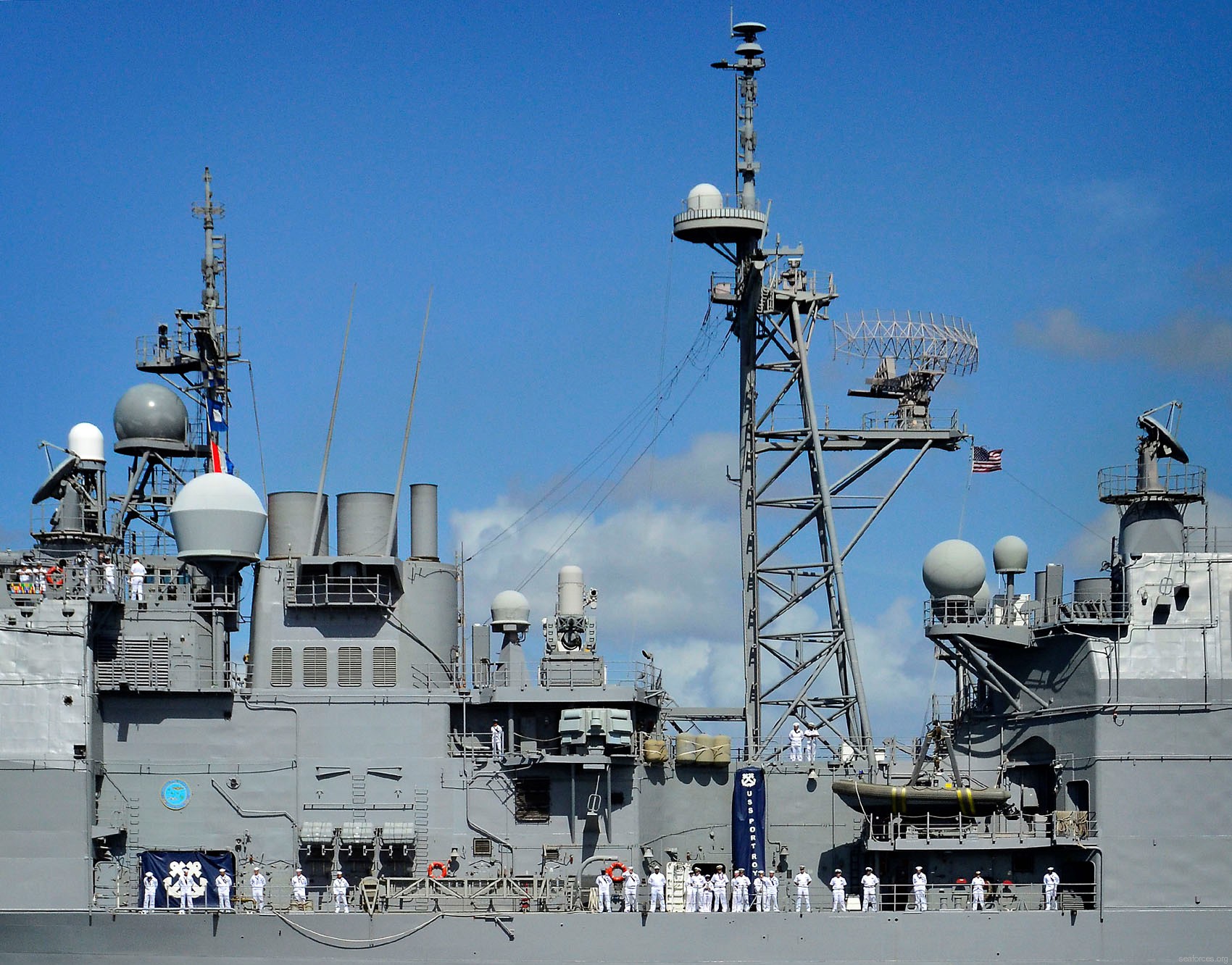 departing Joint Base Pearl Harbor-Hickam, Hawaii - June 2011 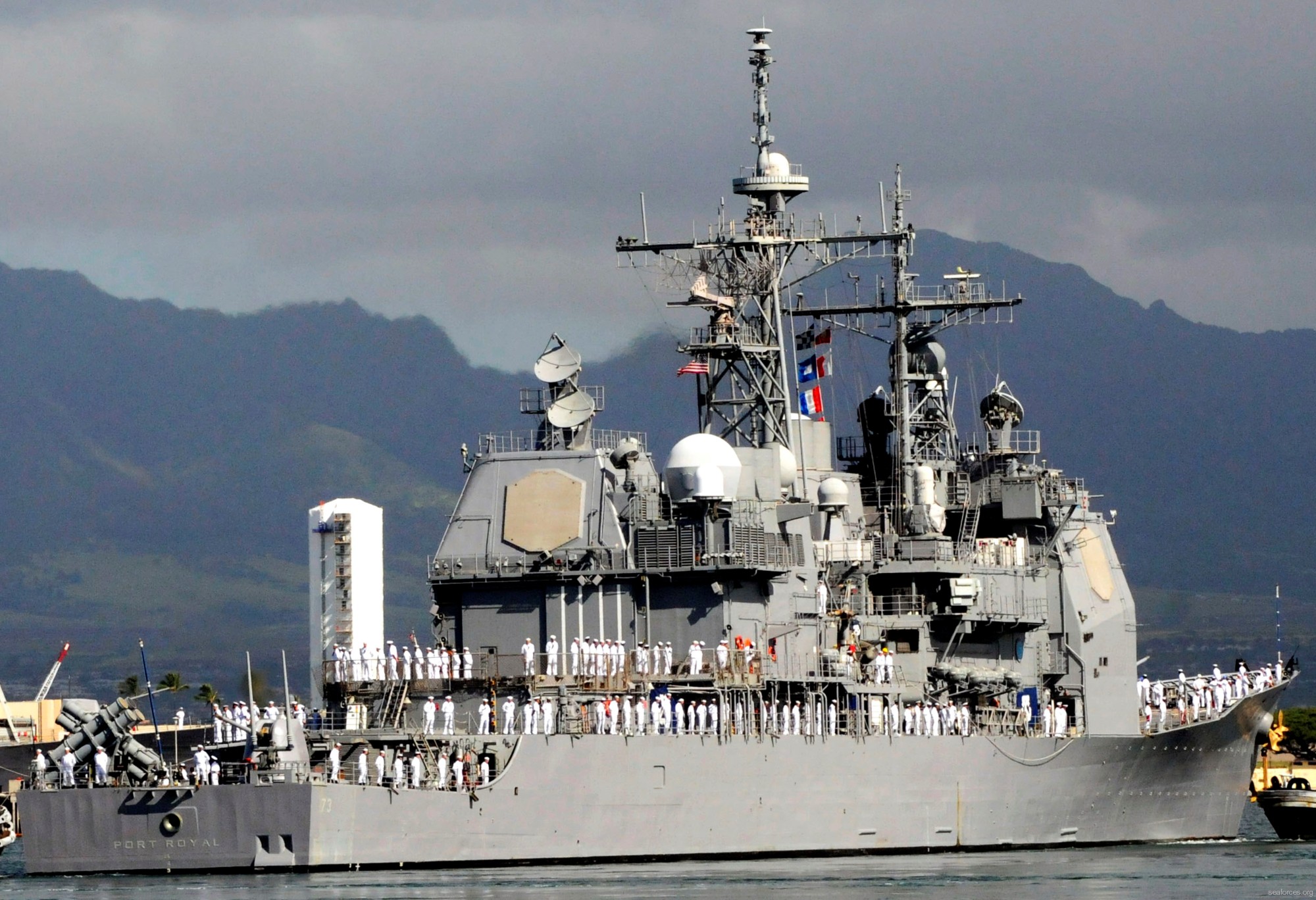 departing Joint Base Pearl Harbor-Hickam, Hawaii - June 2011 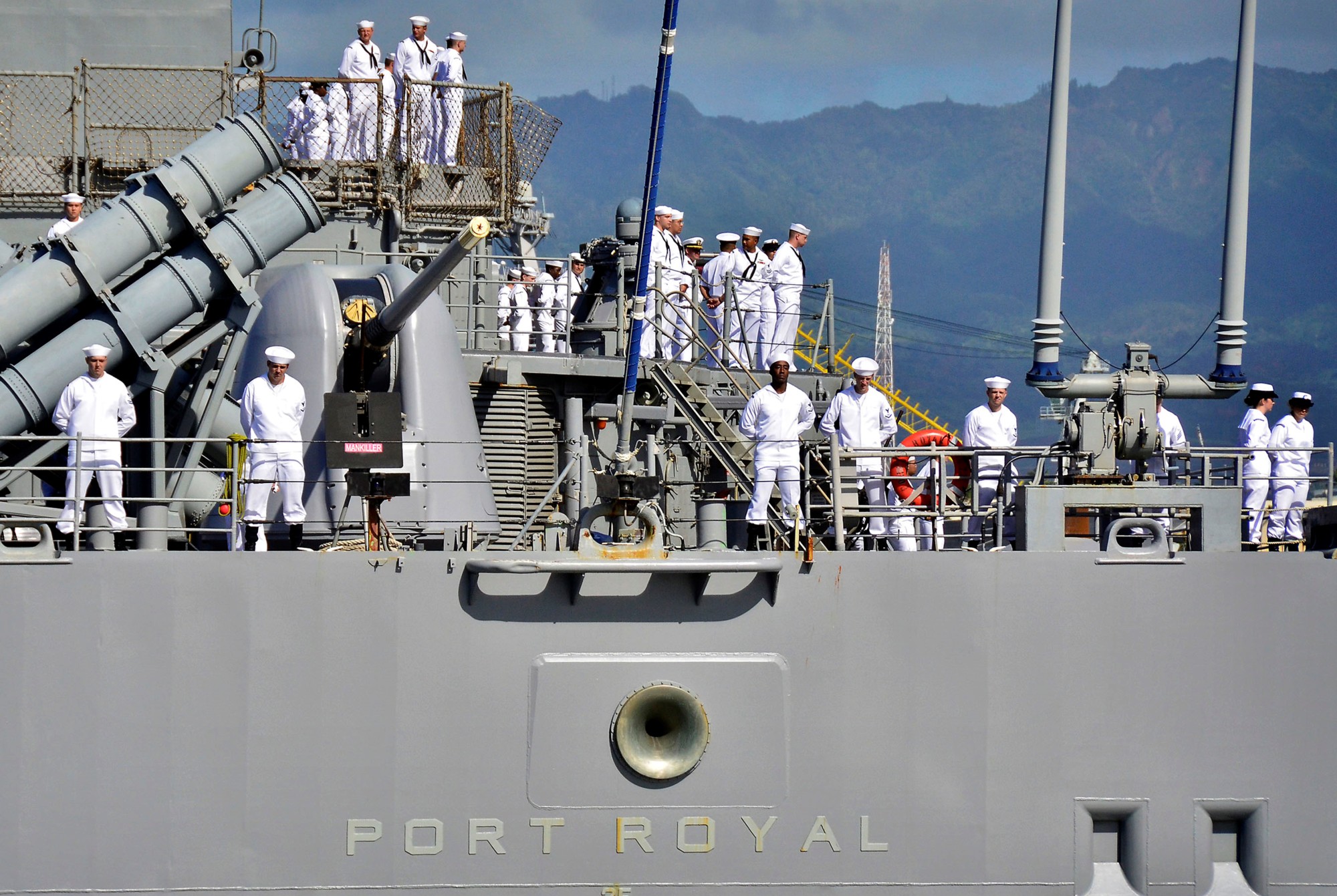 Joint Base Pearl Harbor-Hickam, Hawaii - June 2011 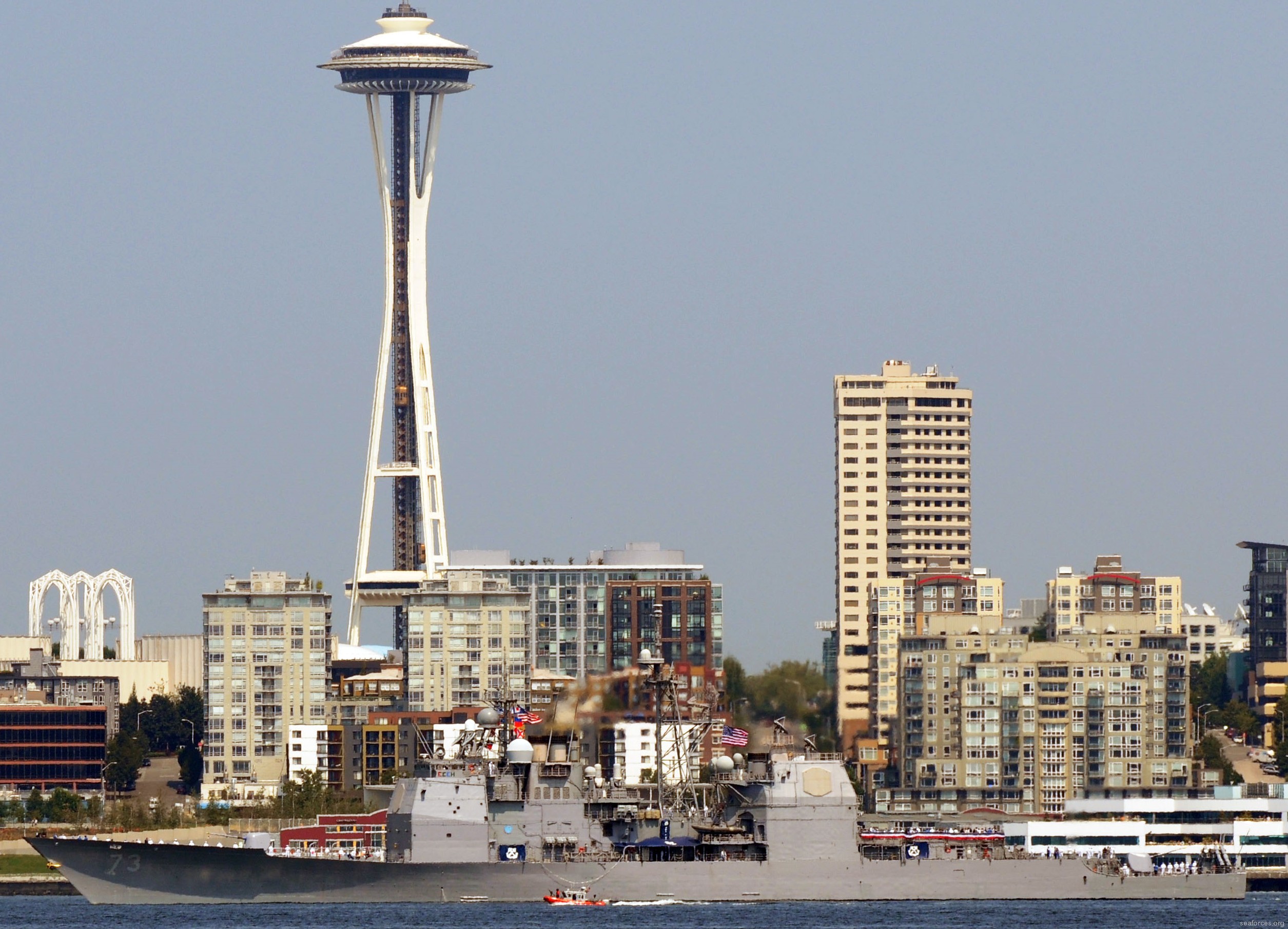 Seafair Navy Fleet Week - Seattle, Washington - August 2010 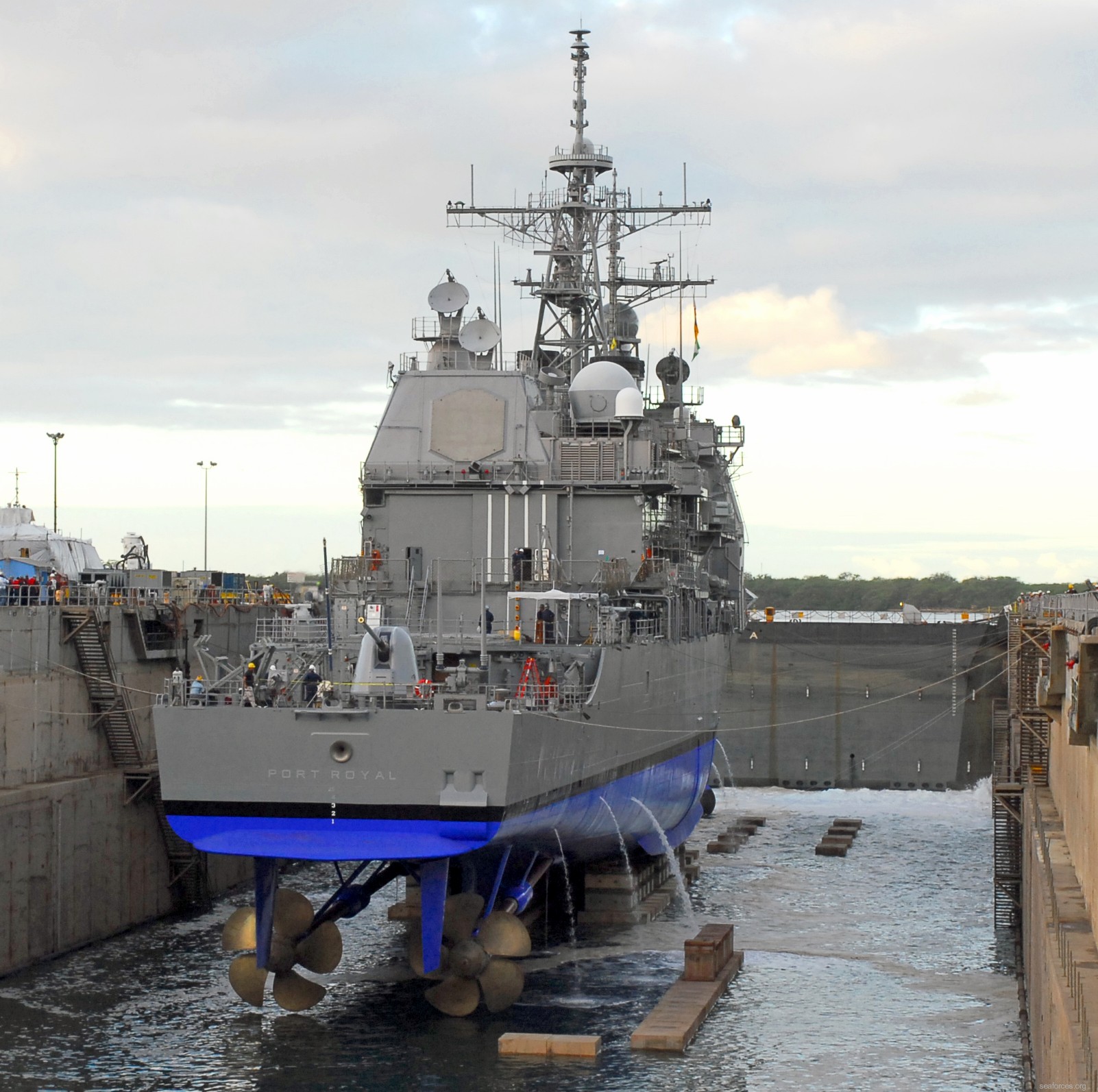 undocking from dry dock at Pearl Harbor Naval Shipyard, Hawaii - September 2009 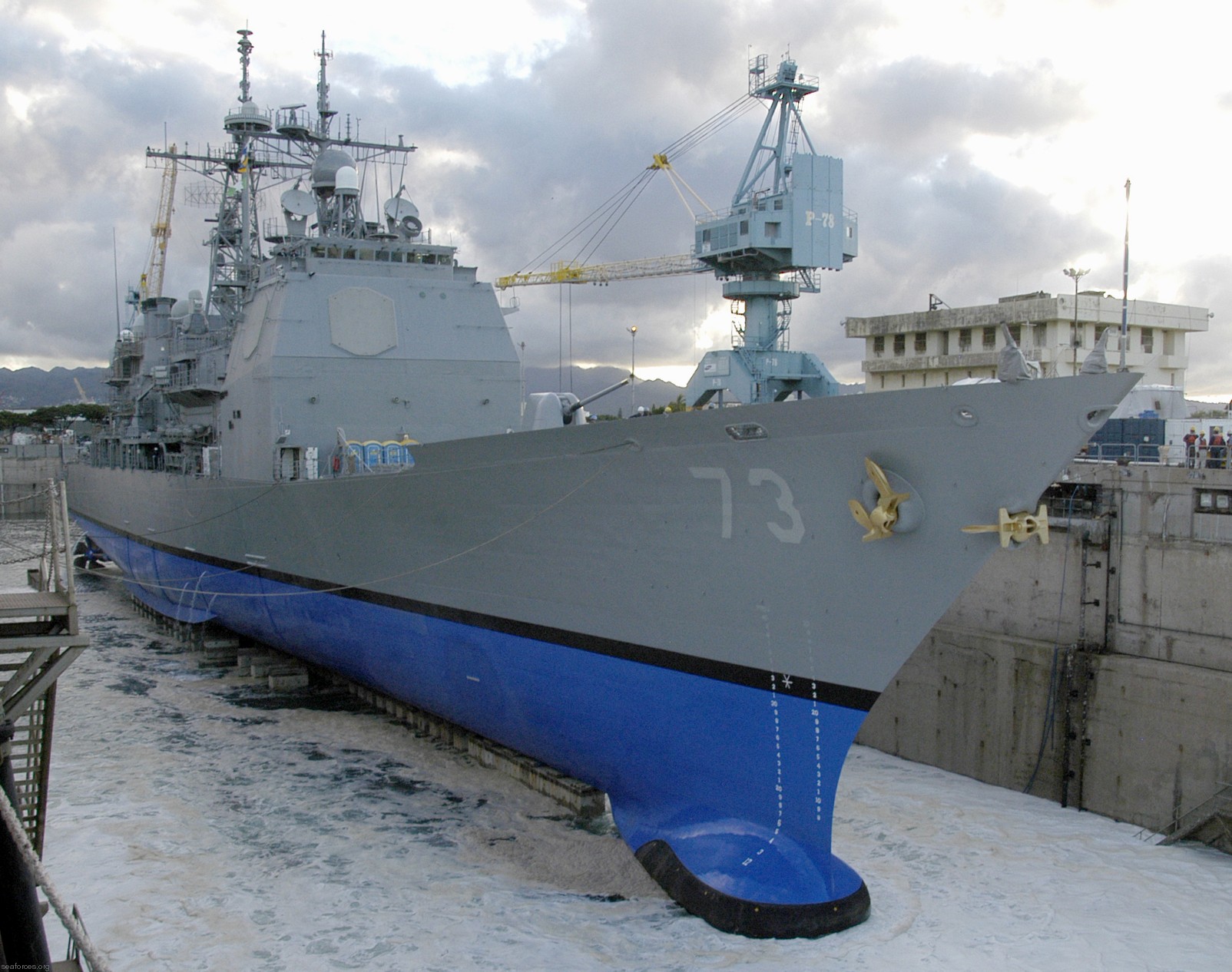 undocking from dry dock at Pearl Harbor Naval Shipyard, Hawaii after repairs - September 2009 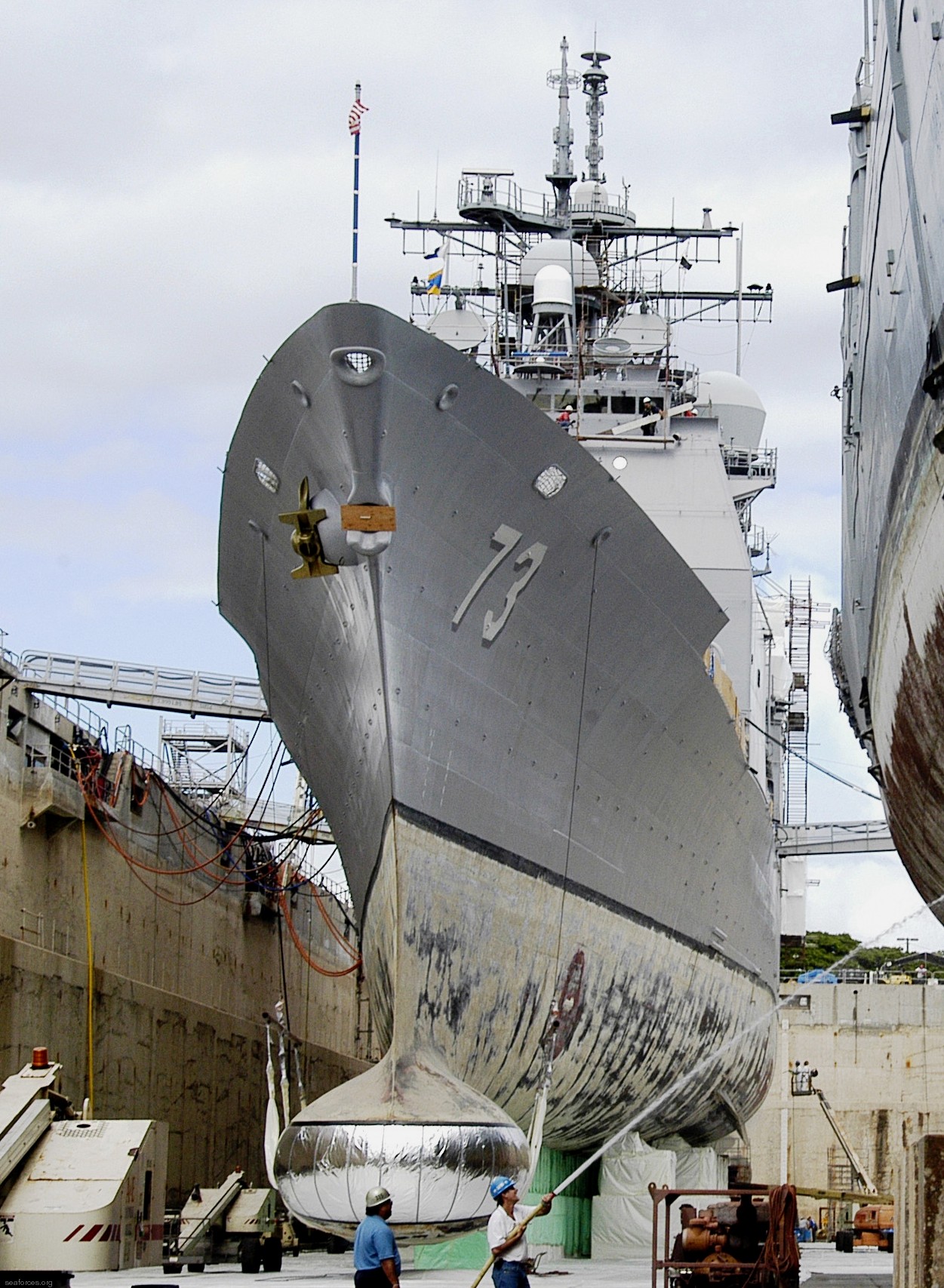 in dry dock at Pearl Harbor Naval Shipyard, Hawaii - October 2008 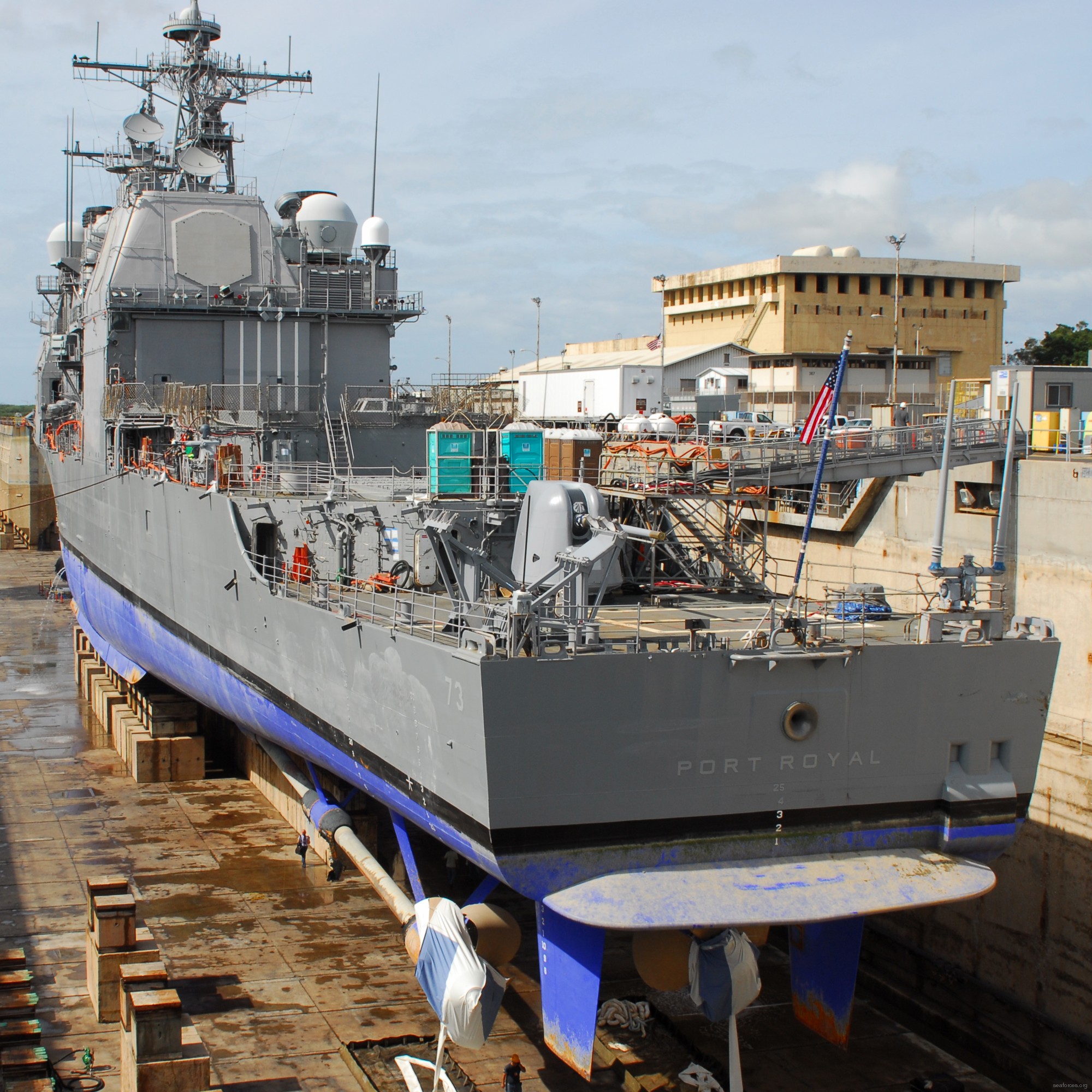 in dry dock at Pearl Harbor Naval Shipyard, Hawaii after grounding off Honolulu on February 5 - February 2009 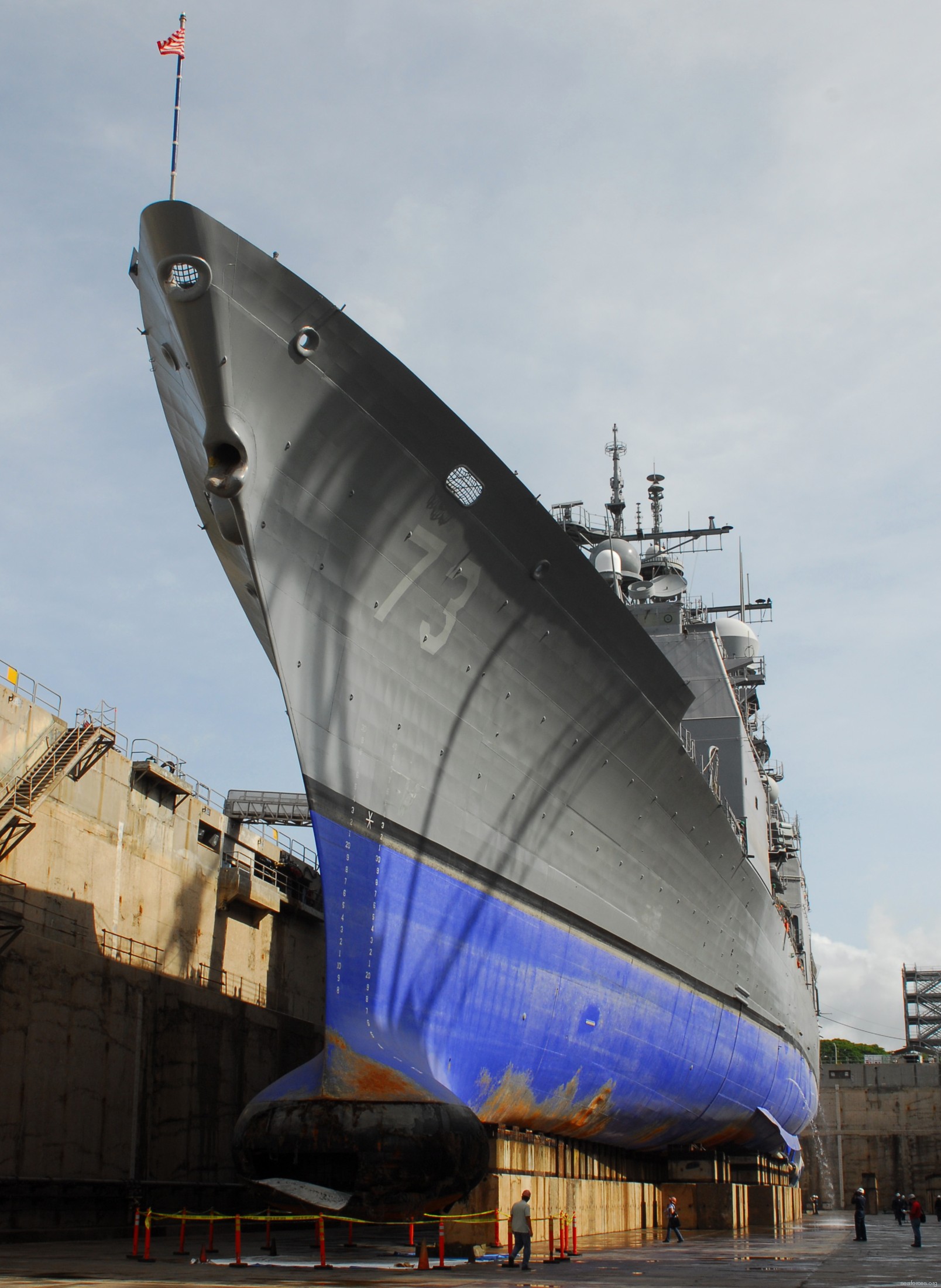 in dry dock at Pearl Harbor Naval Shipyard, Hawaii after grounding off Honolulu on February 5 - February 2009 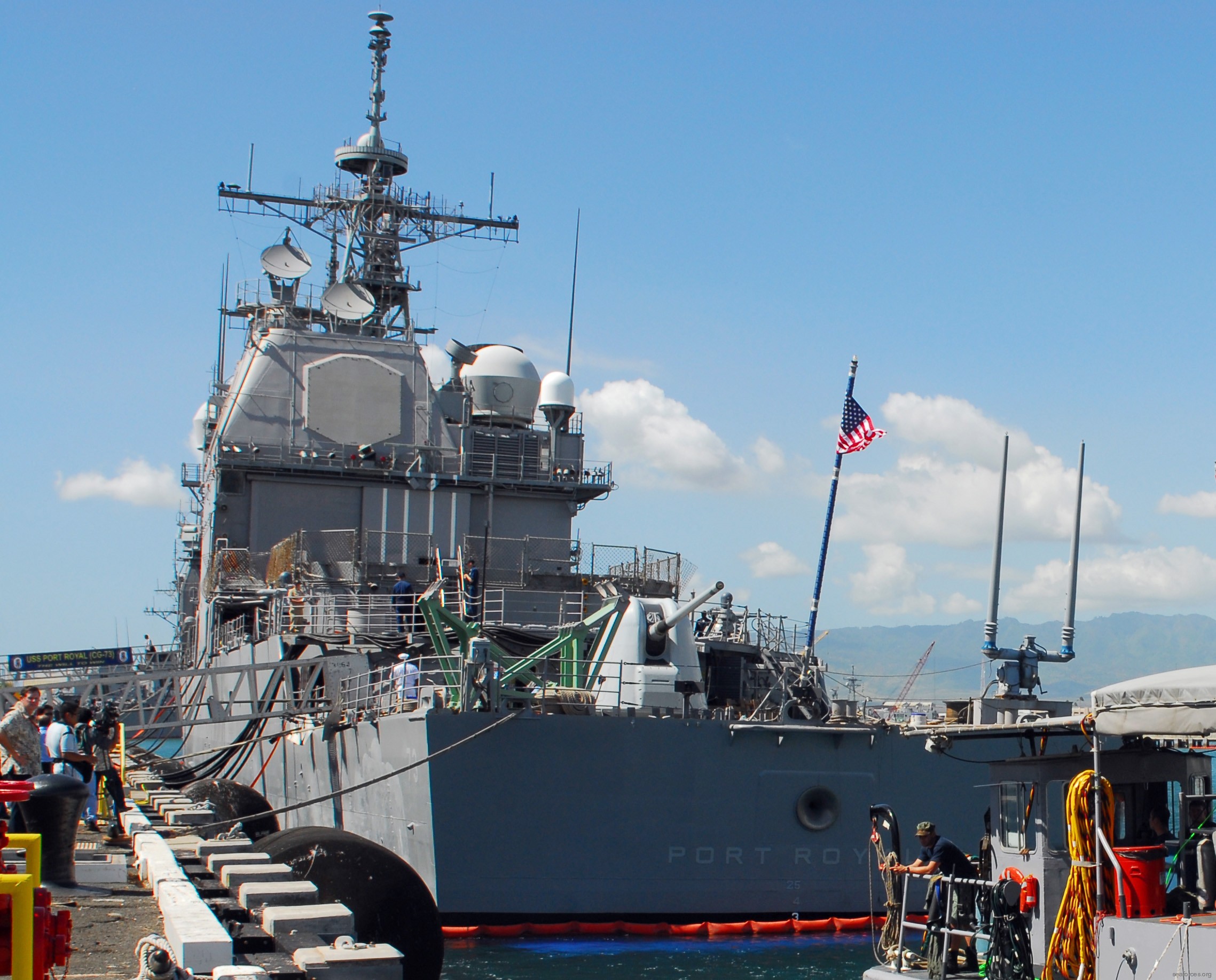 Pearl Harbor Naval Shipyard, Hawaii - February 2009 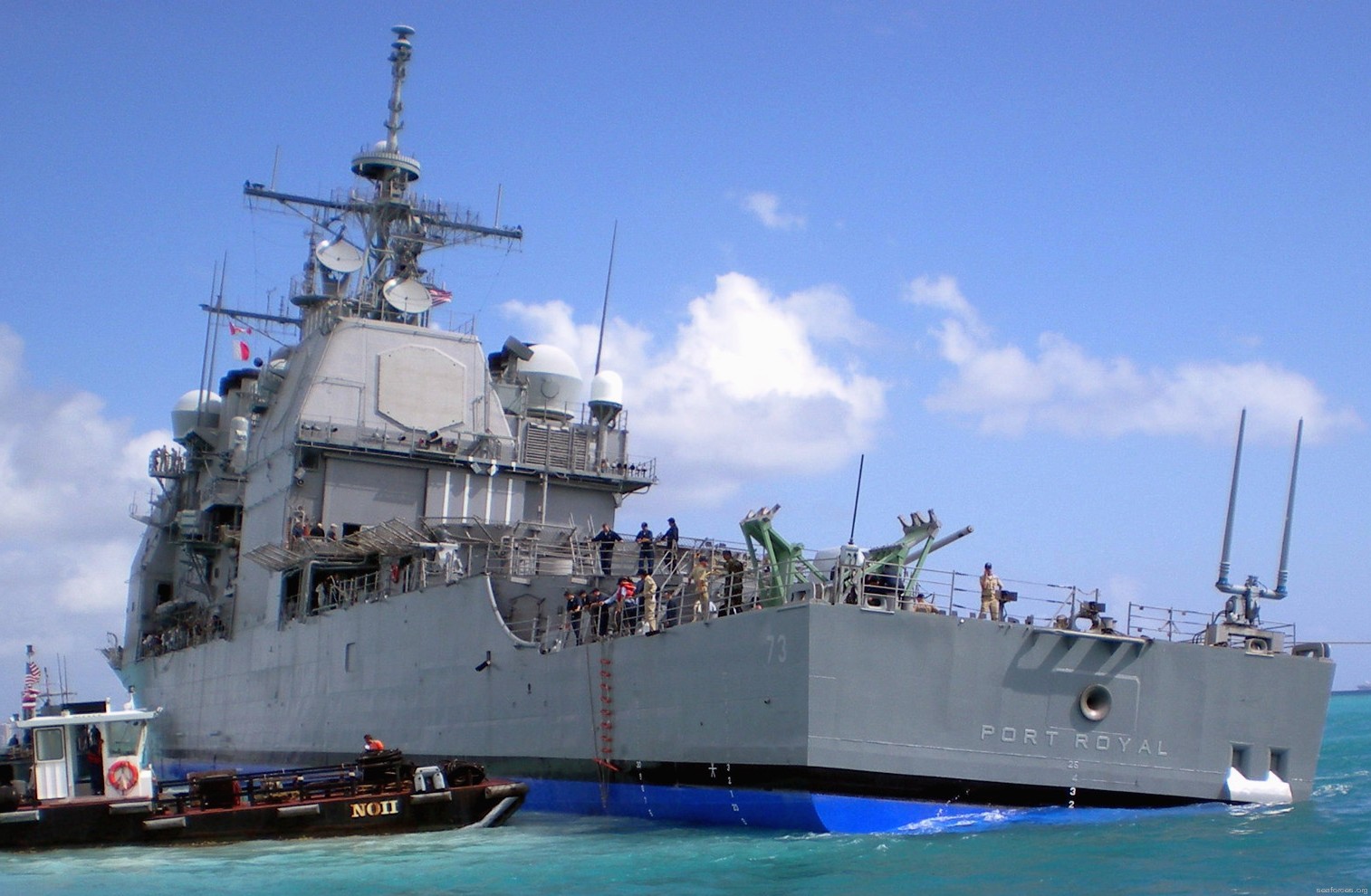 USS Port Royal ran aground about a half mile south of the Honolulu airport on February 5 - February 7, 2009 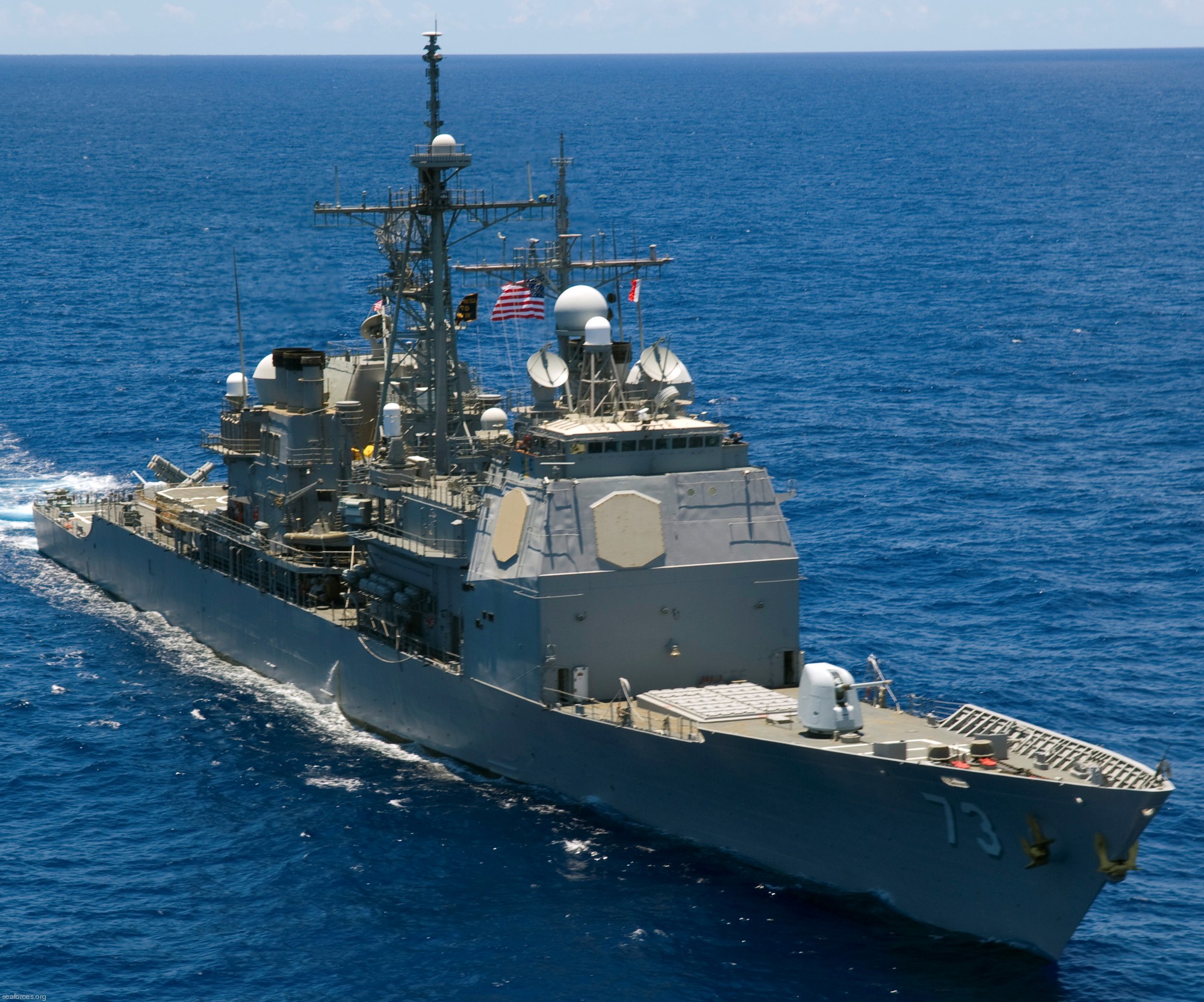 during exercise RIMPAC 08 - Pacific Ocean - July 2008 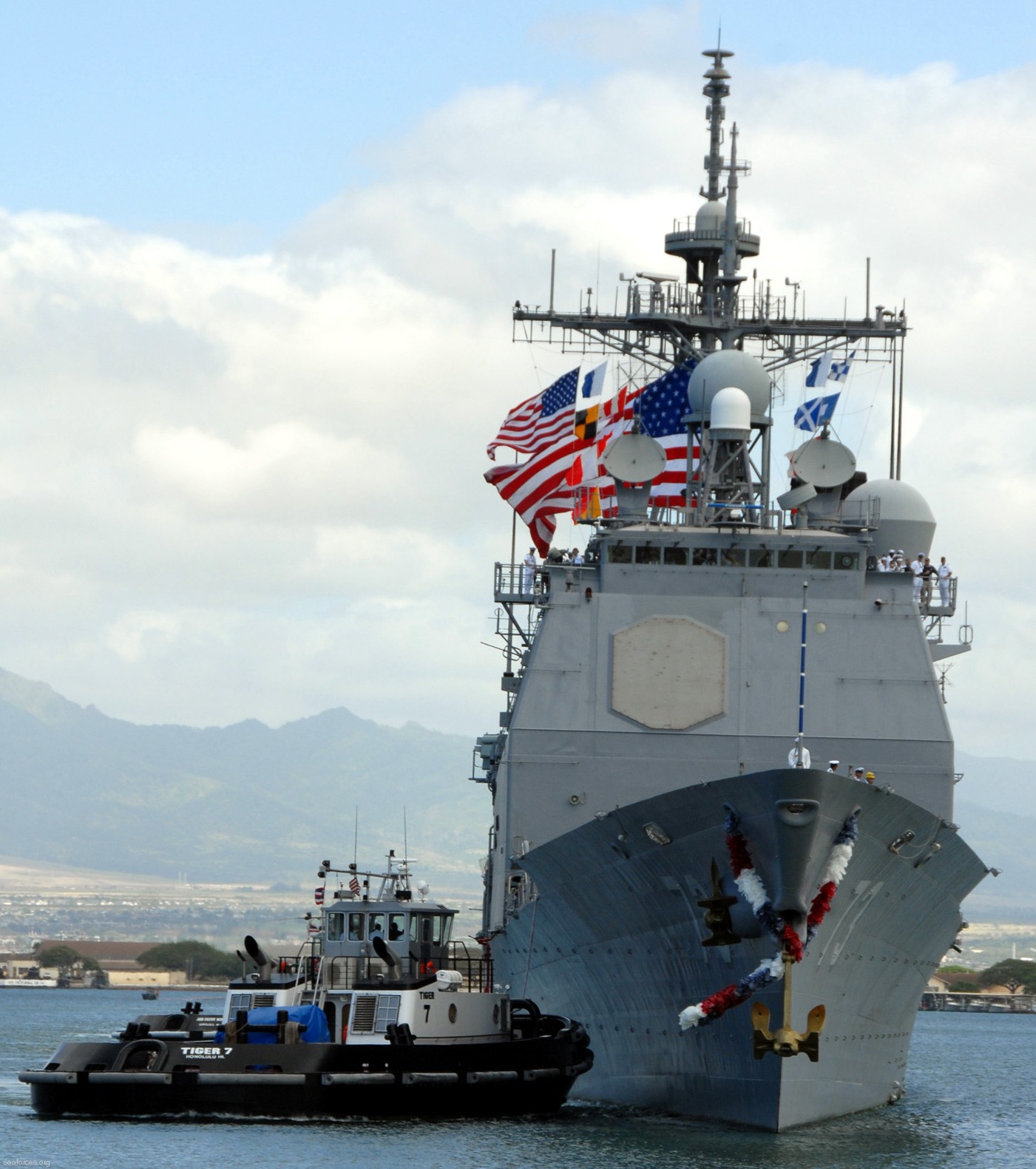 Naval Station Pearl Harbor, Hawaii - May 2008 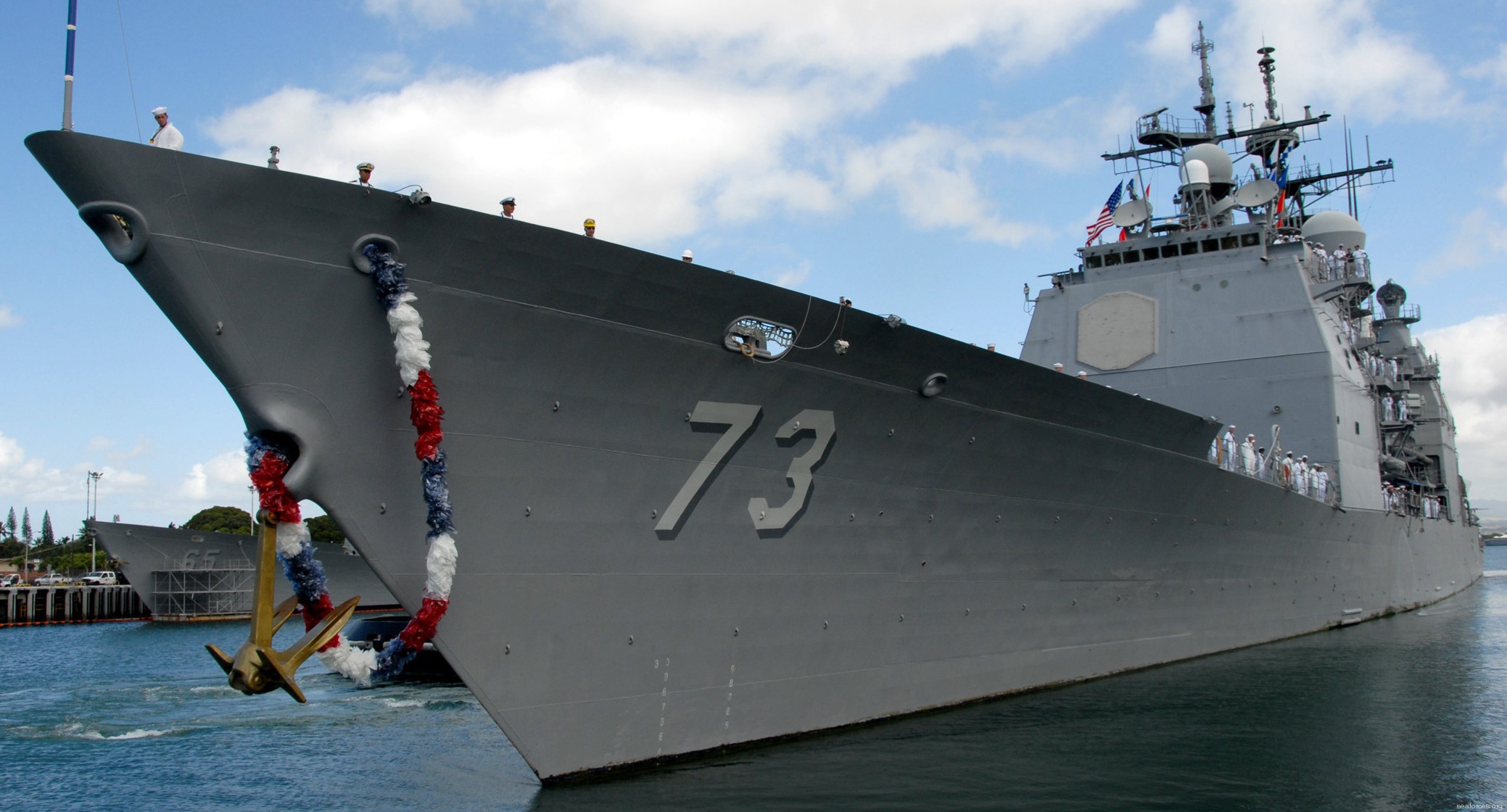 Naval Station Pearl Harbor, Hawaii - May 2008 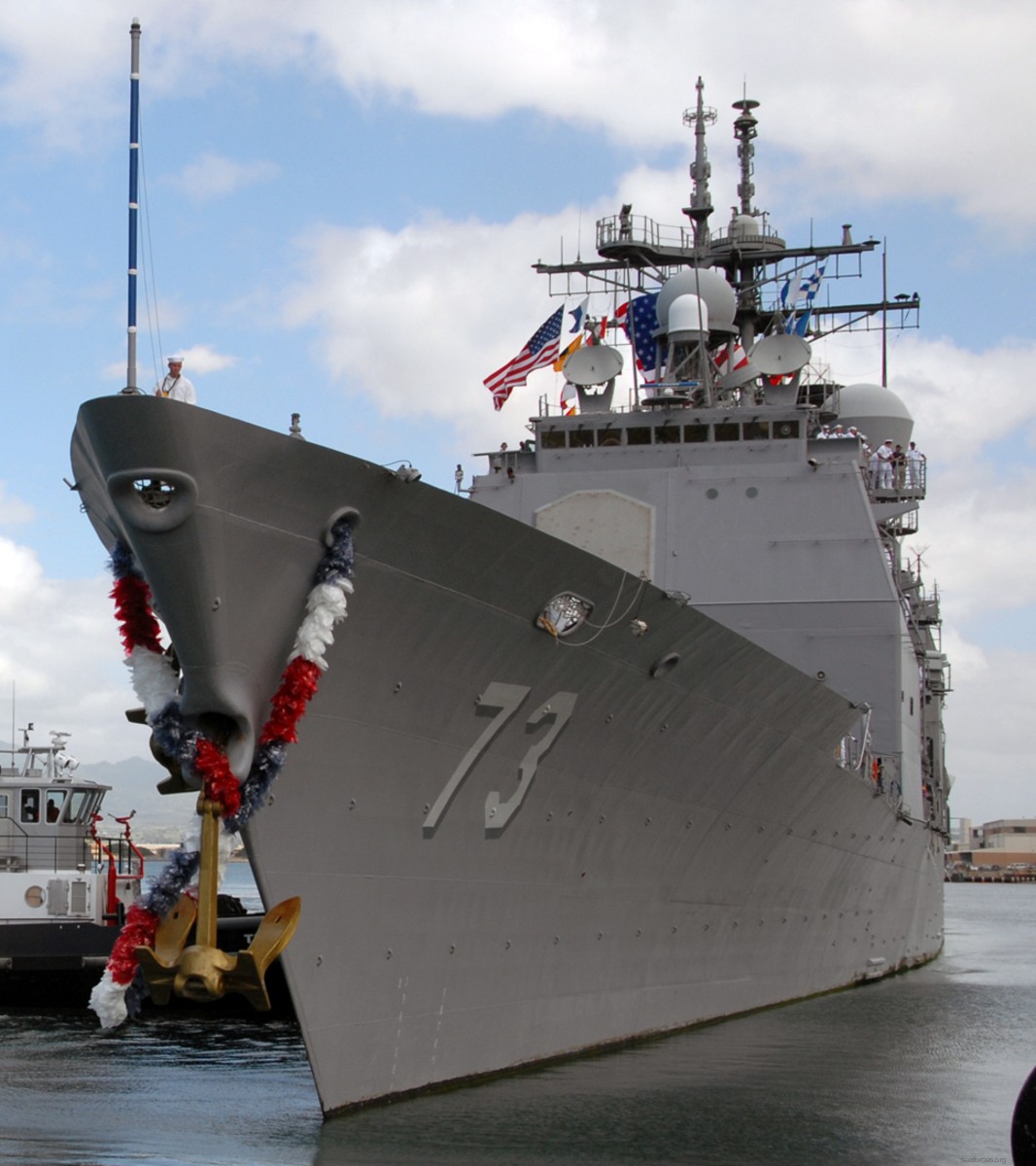 Naval Station Pearl Harbor, Hawaii - May 2008 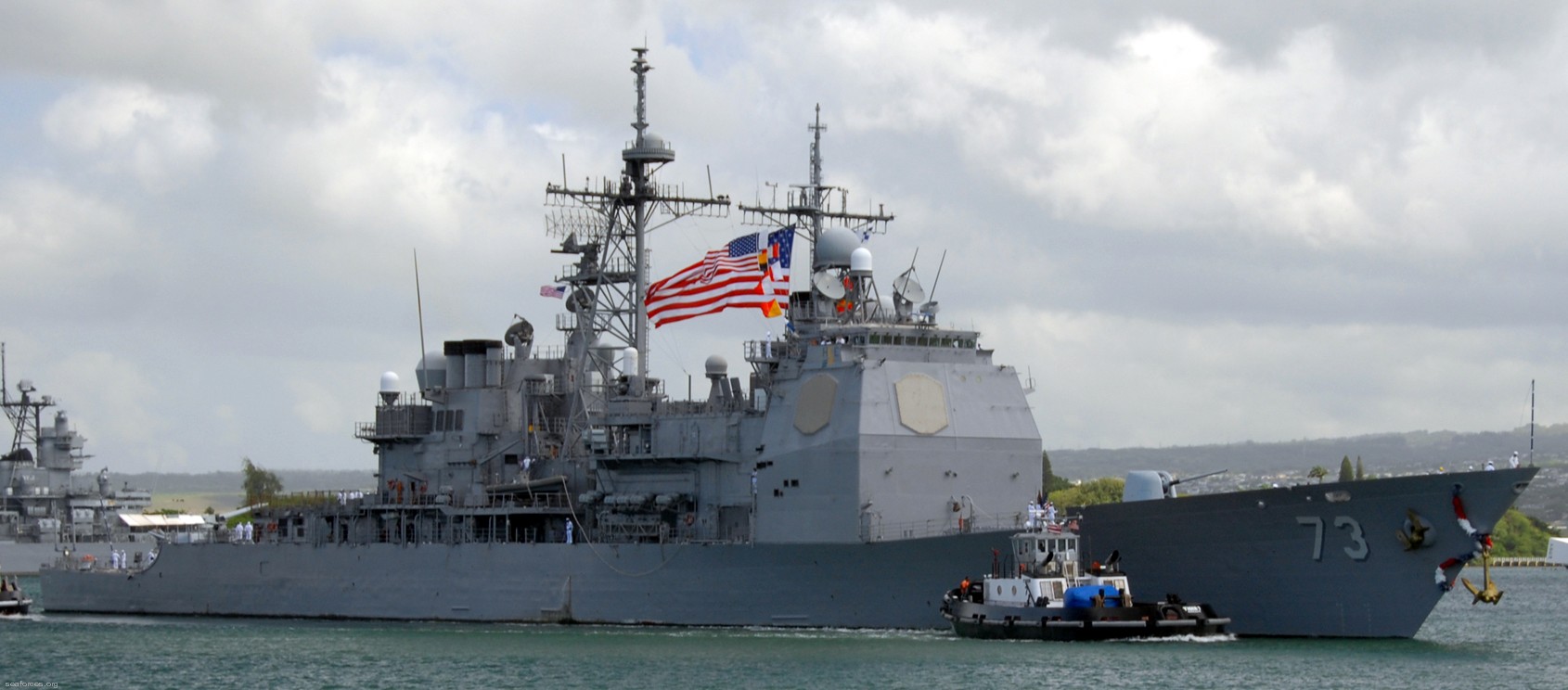 returning to Naval Station Pearl Harbor, Hawaii - May 2008  Pacific Ocean - January 2006  Pacific Ocean - January 2006 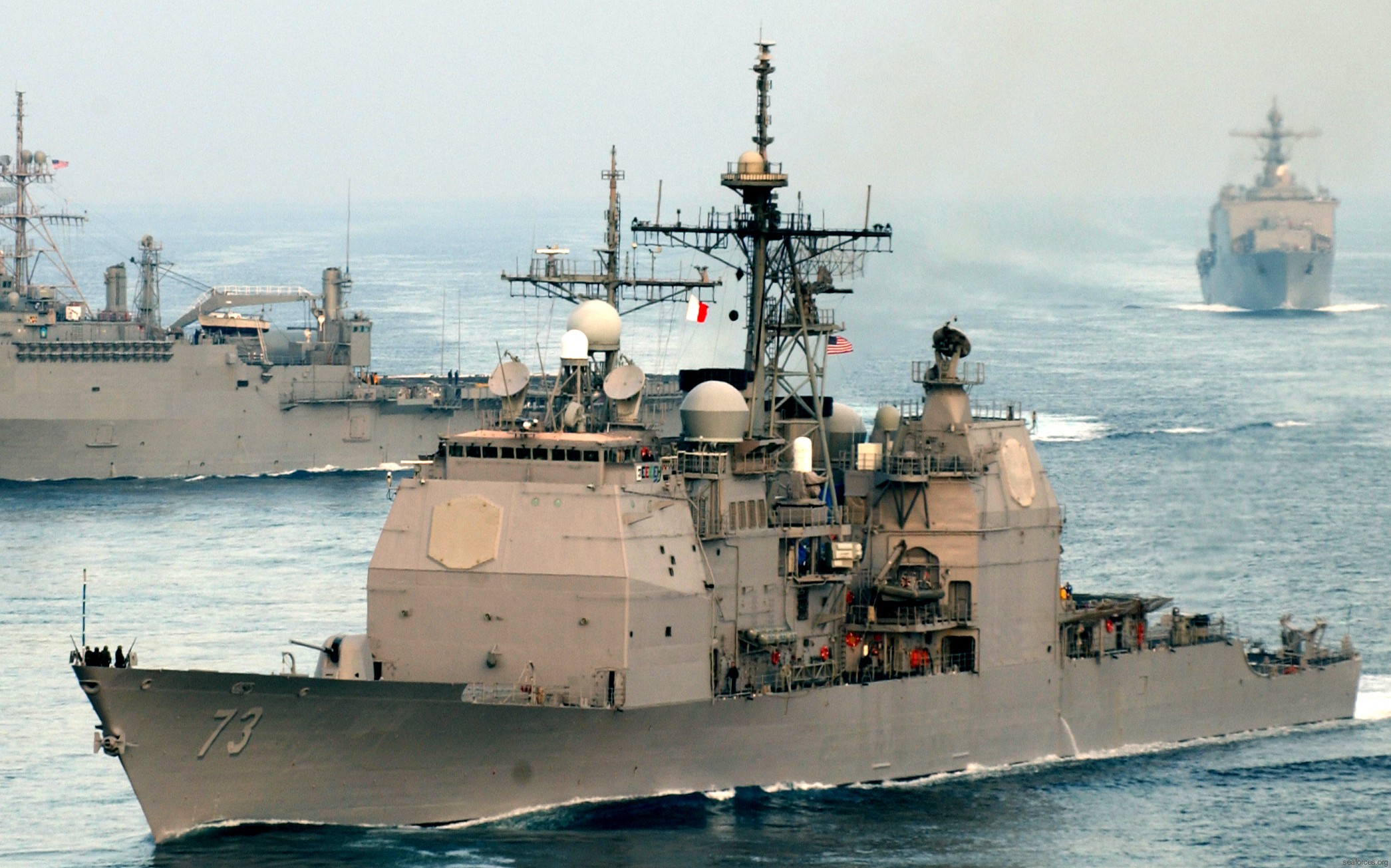 Pacific Ocean - December 2005 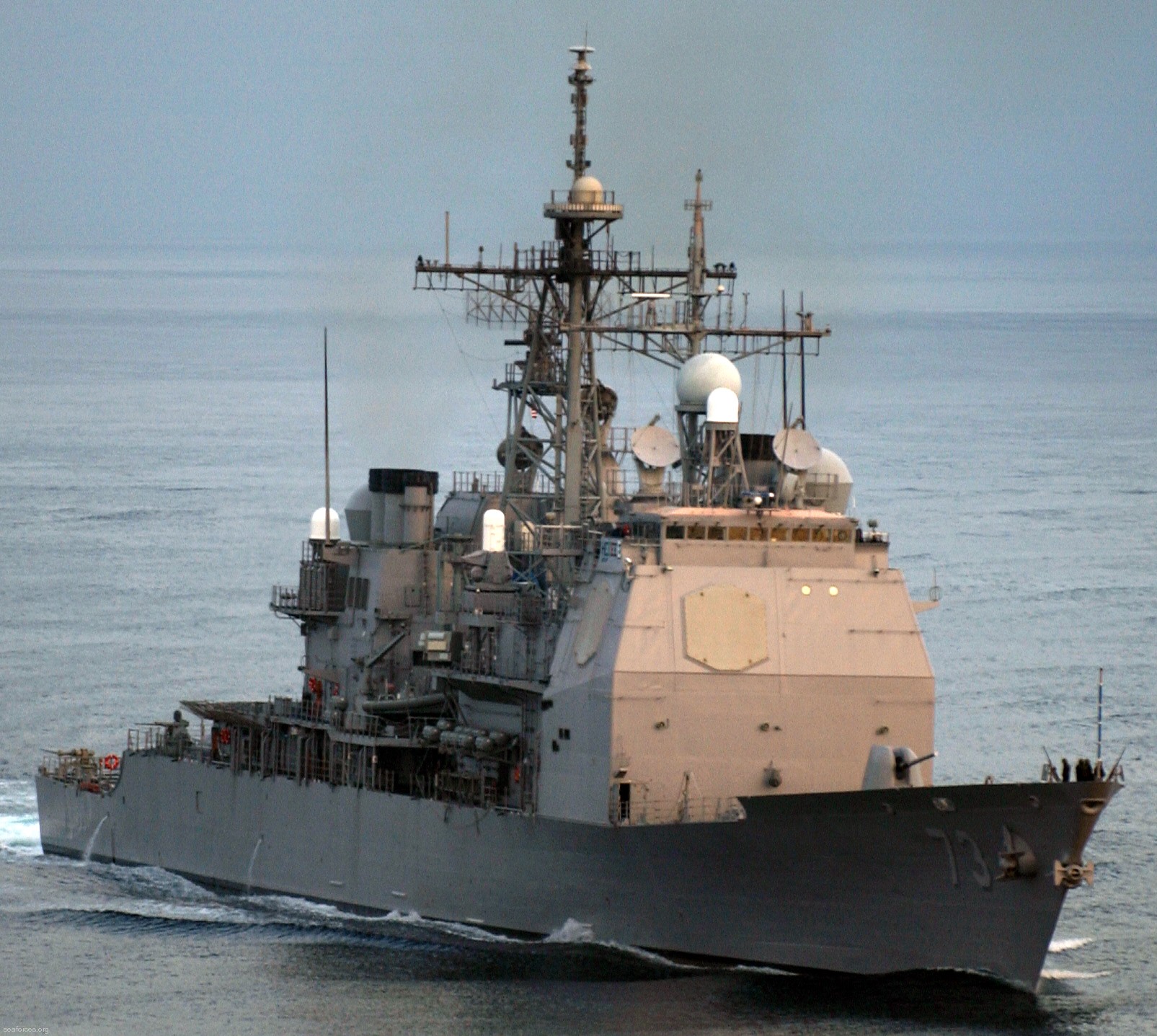 Pacific Ocean - December 2005 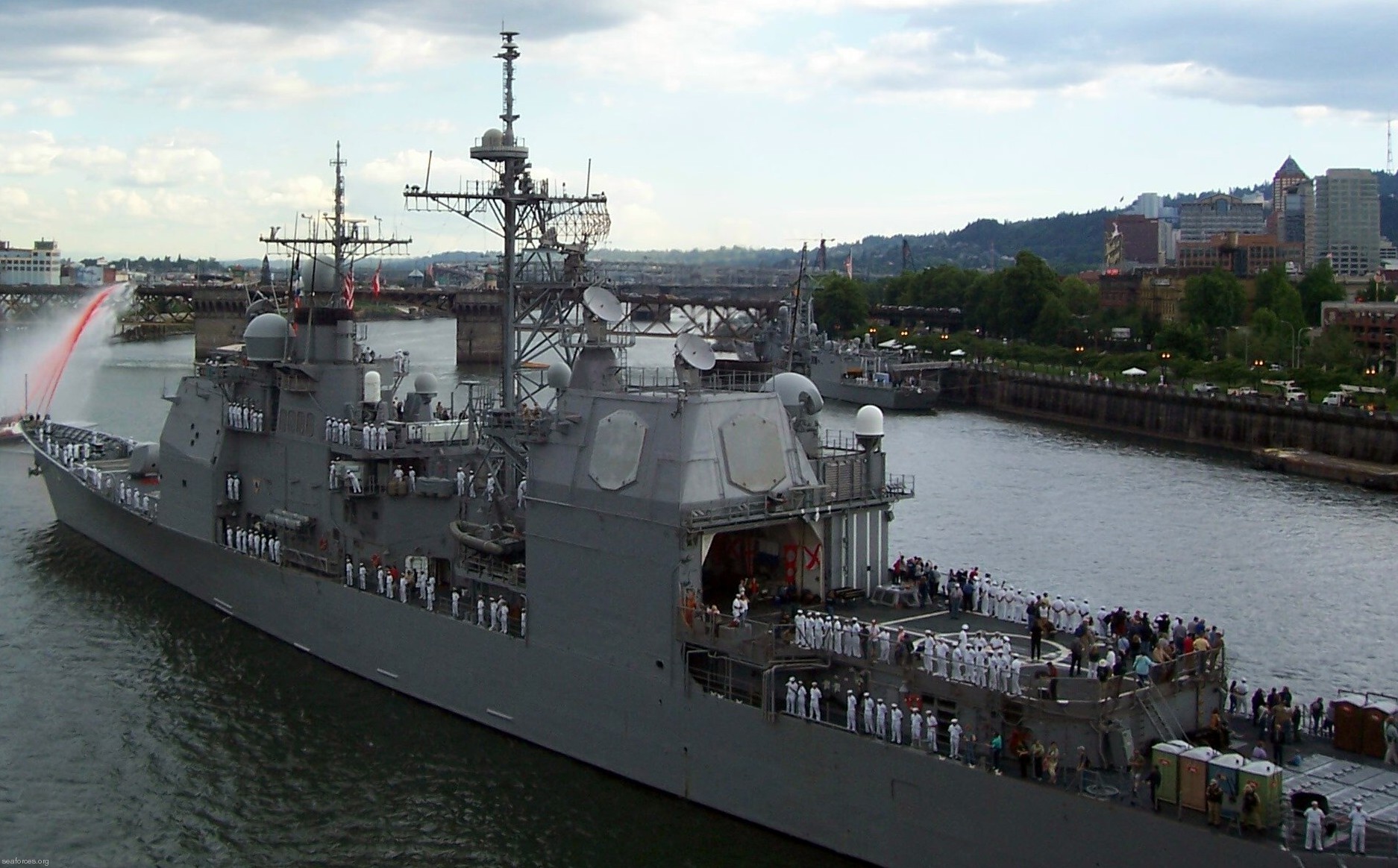 Portland, Oregon - June 2005 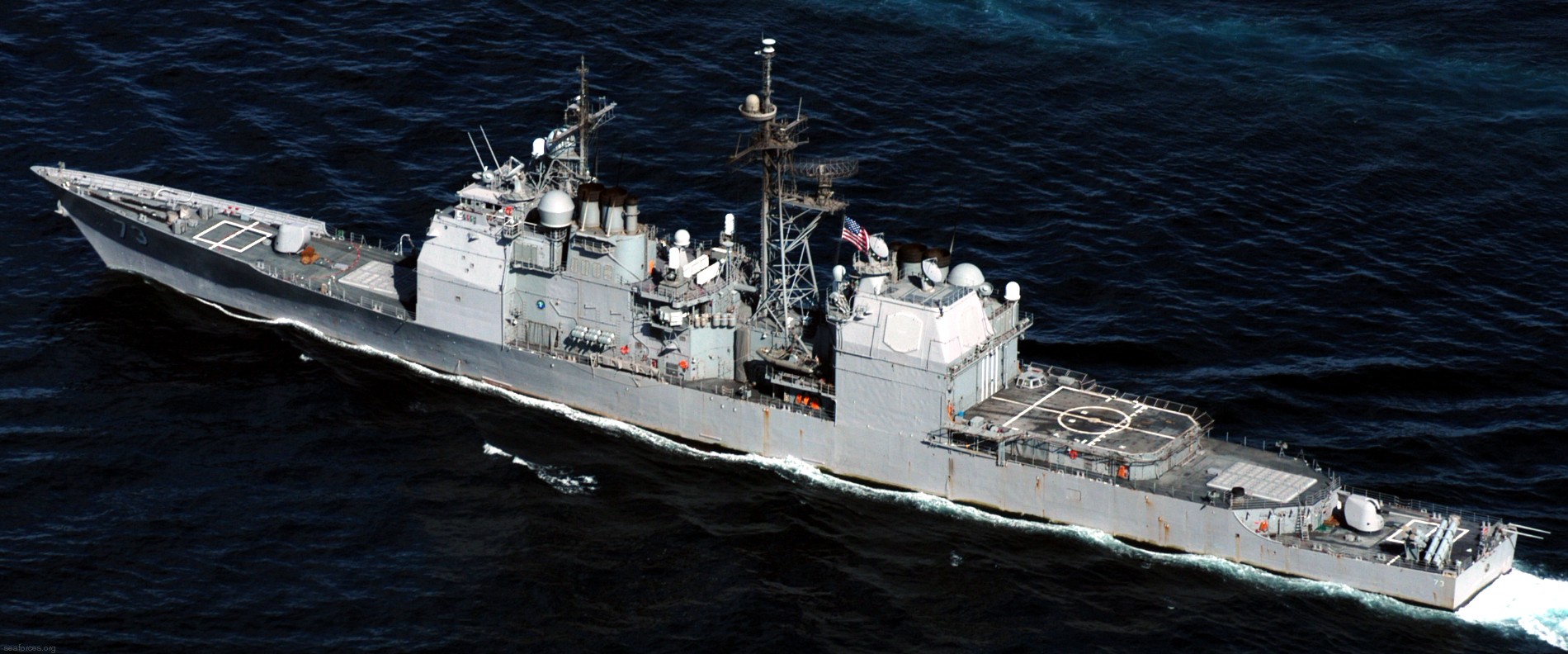 Northern Arabian Sea - December 2003 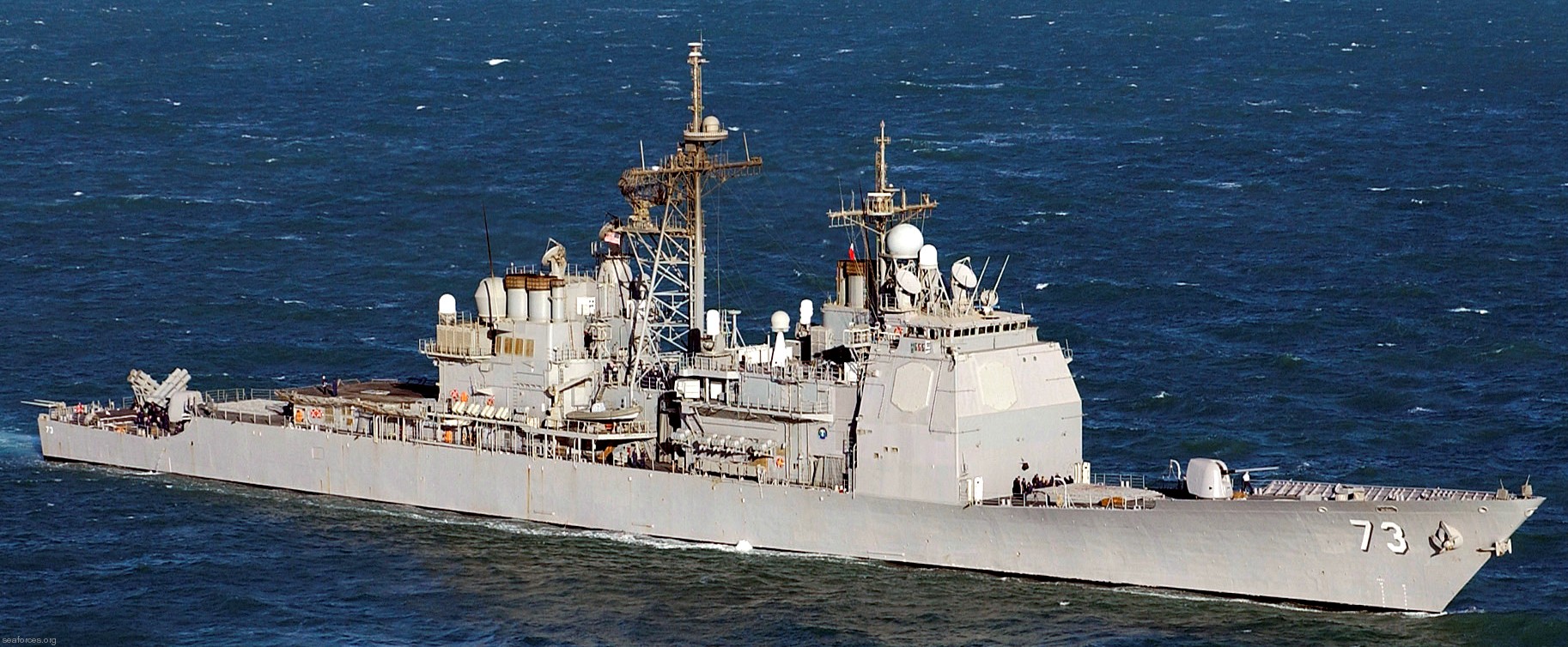 Arabian Gulf - November 2003 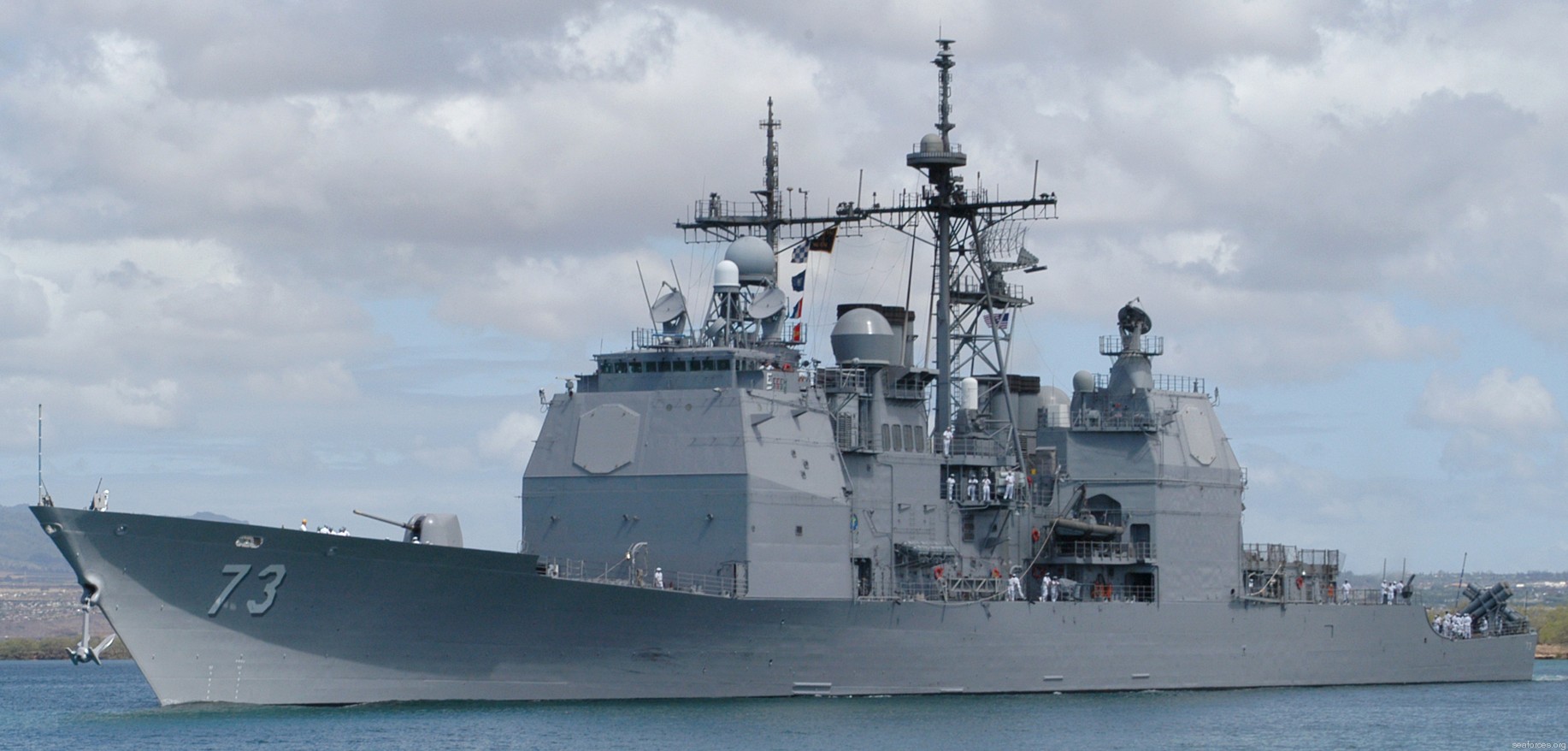 departing Naval Station Pearl Harbor, Hawaii - September 2003 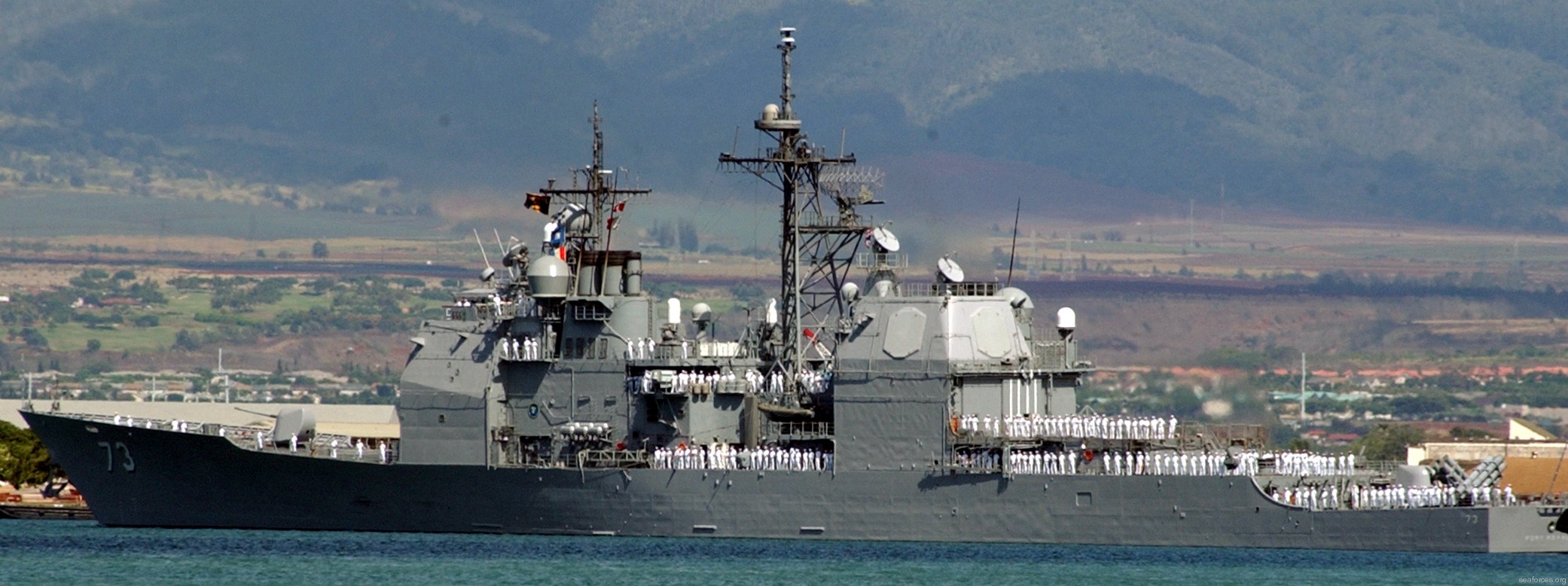 departing Naval Station Pearl Harbor, Hawaii - September 2003 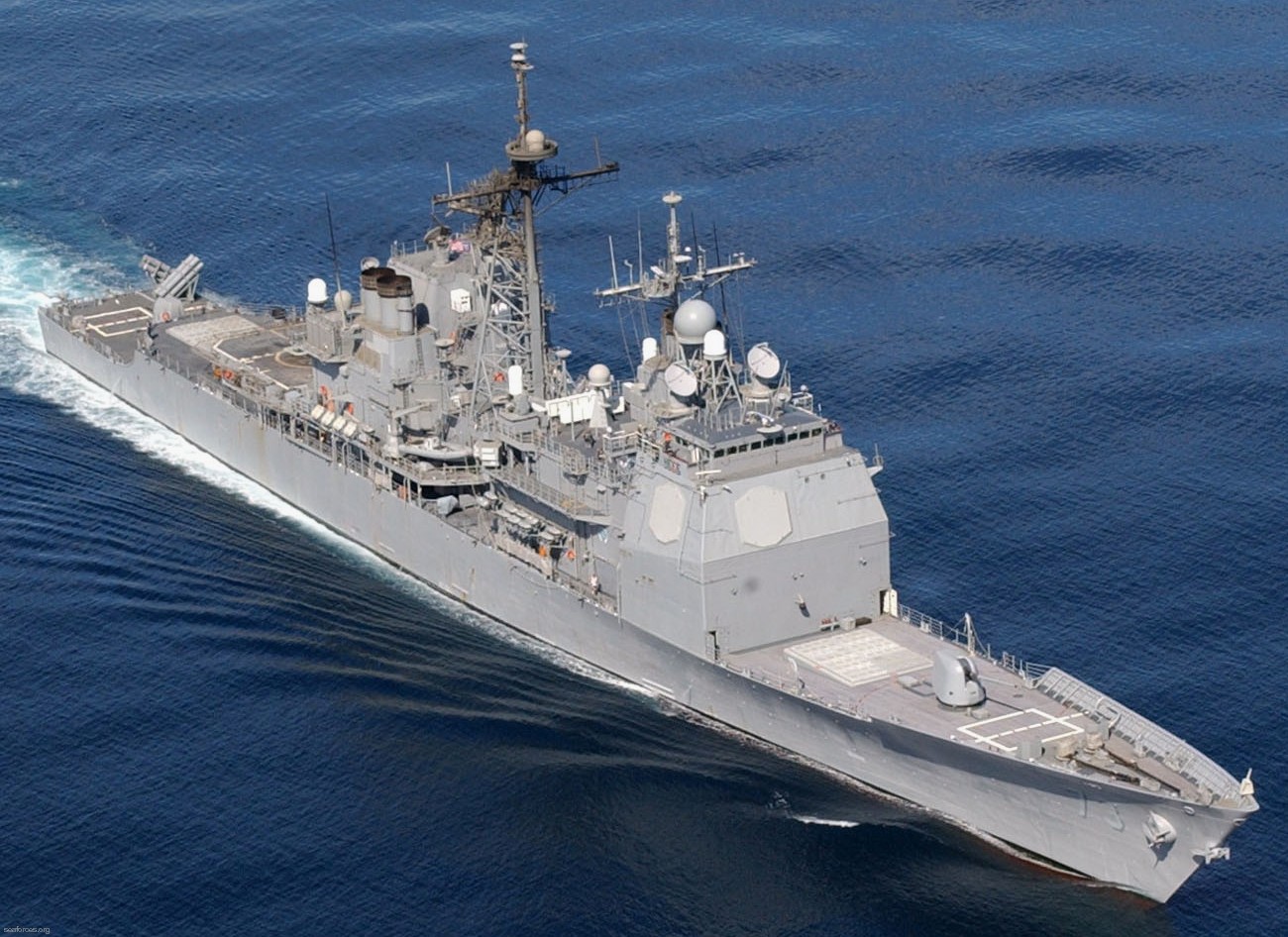 Operation Enduring Freedom - January 2002 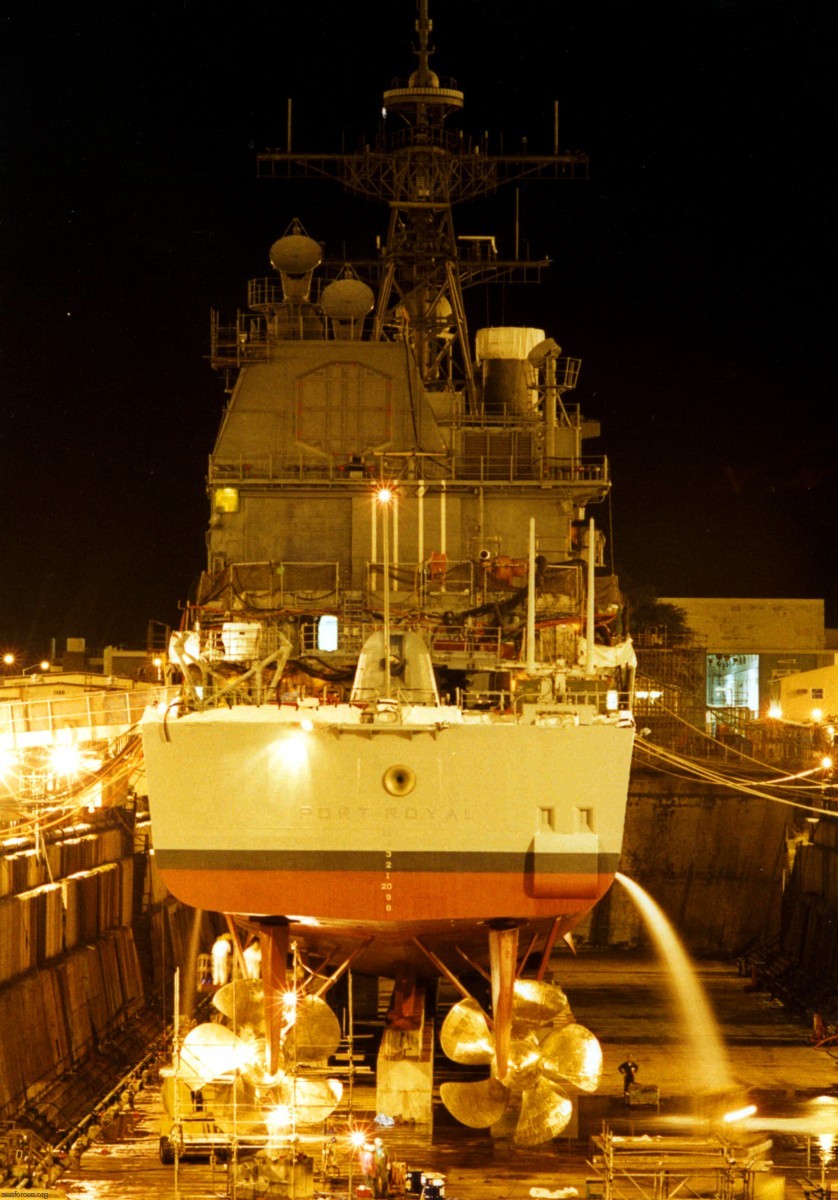 in dry dock at Pearl Harbor Naval Shipyard, Hawaii - undated 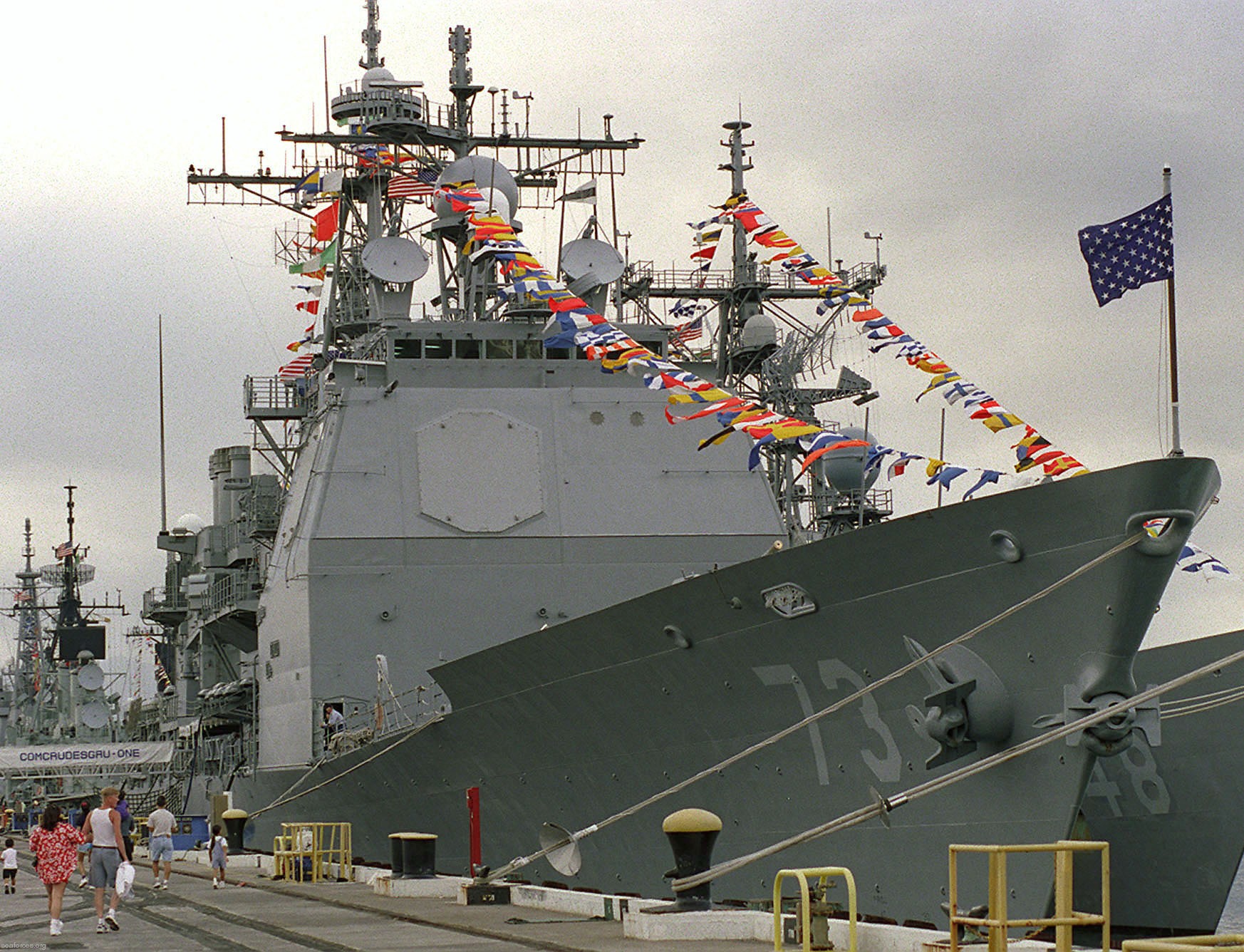 Naval Station Pearl Harbor, Hawaii - July 1998 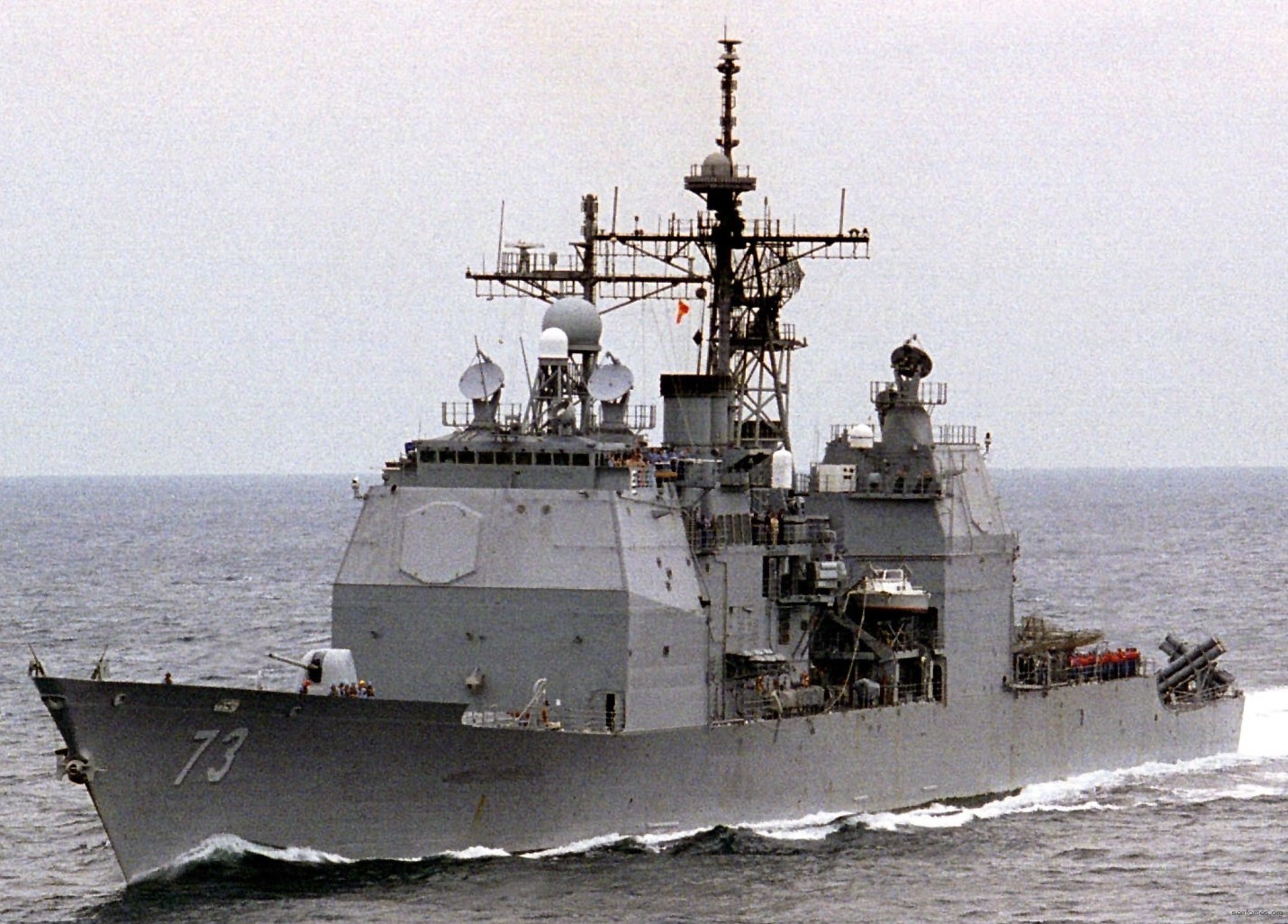 Persian Gulf - November 1997 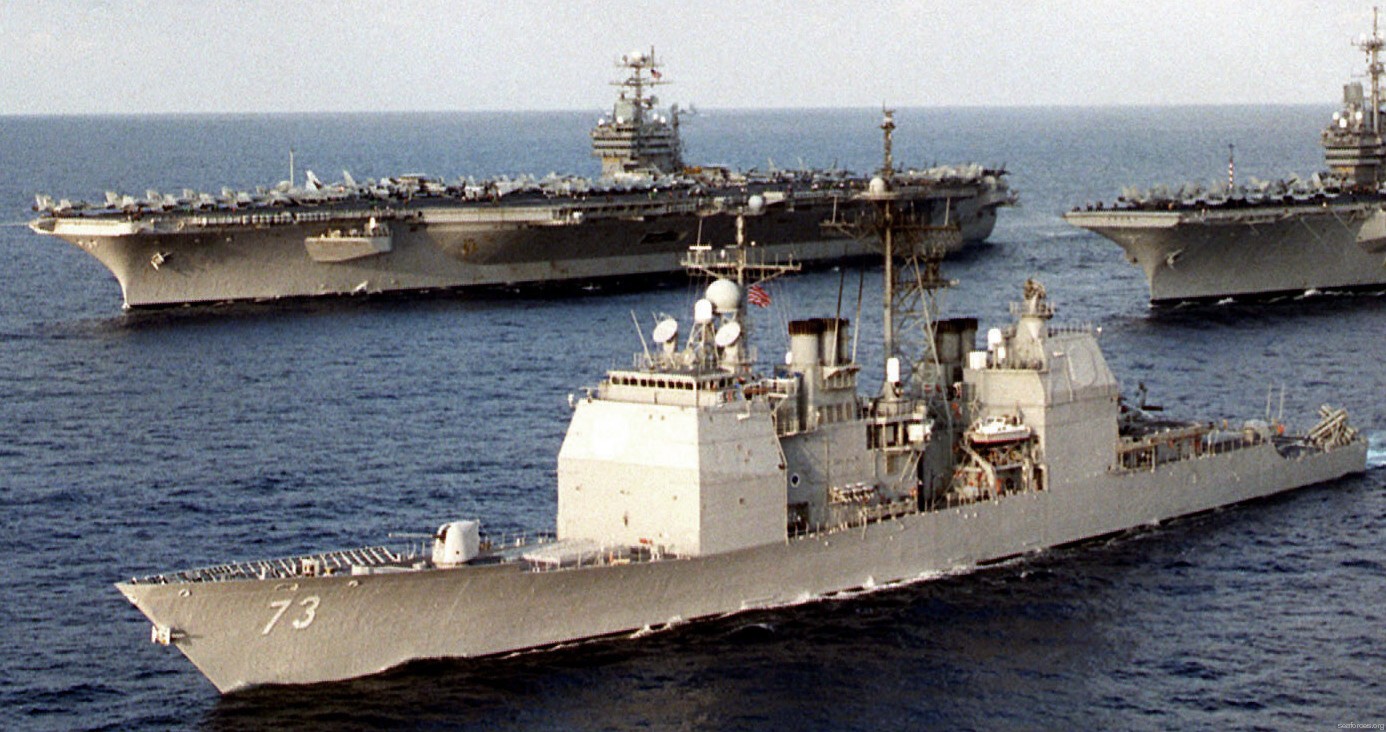 during exercise Valiant Blitz 97 - off Japan - September 1997 commissioning ceremony - Savannah, Georgia - July 4, 1994 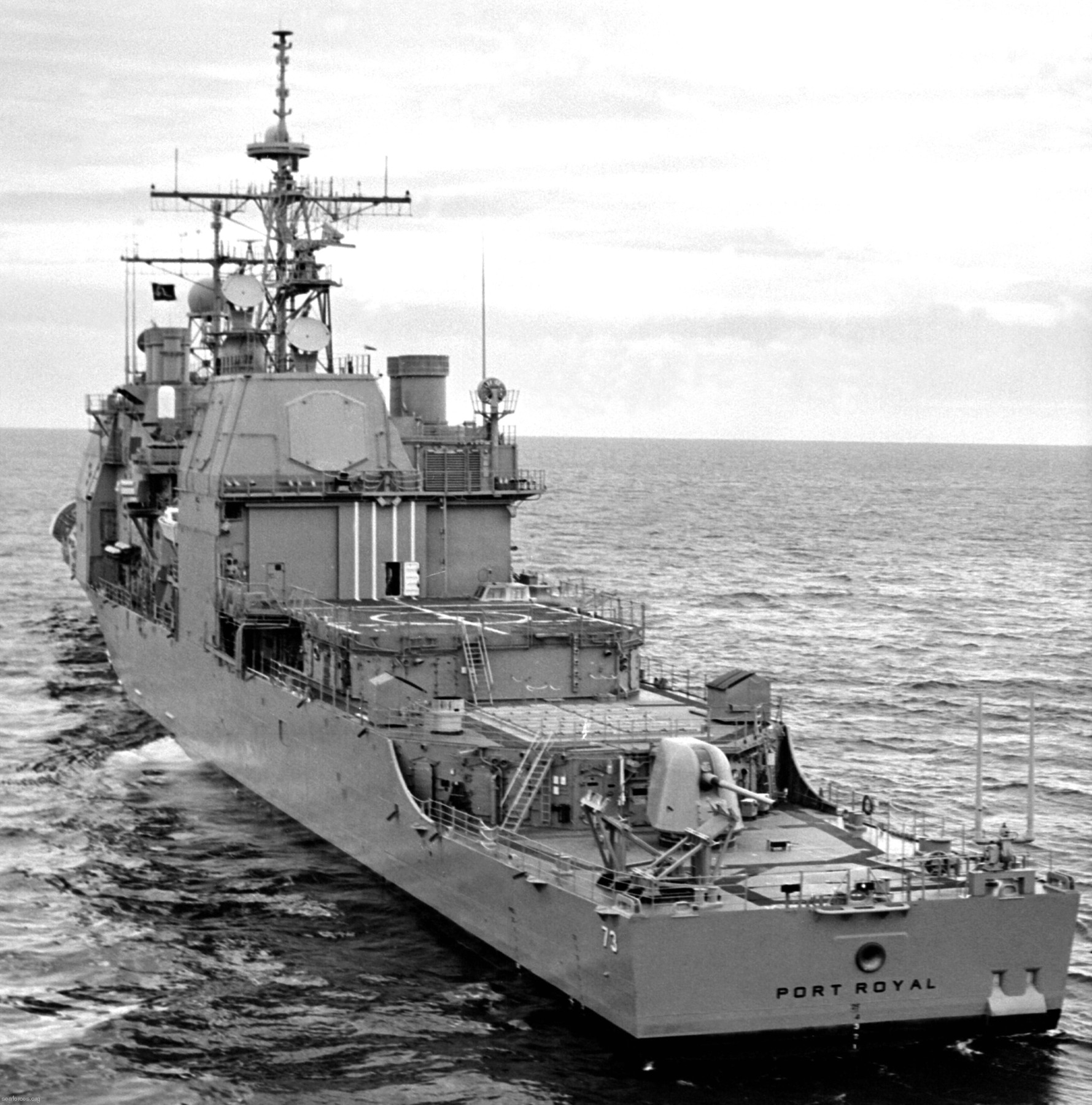 acceptance trials - February 1994 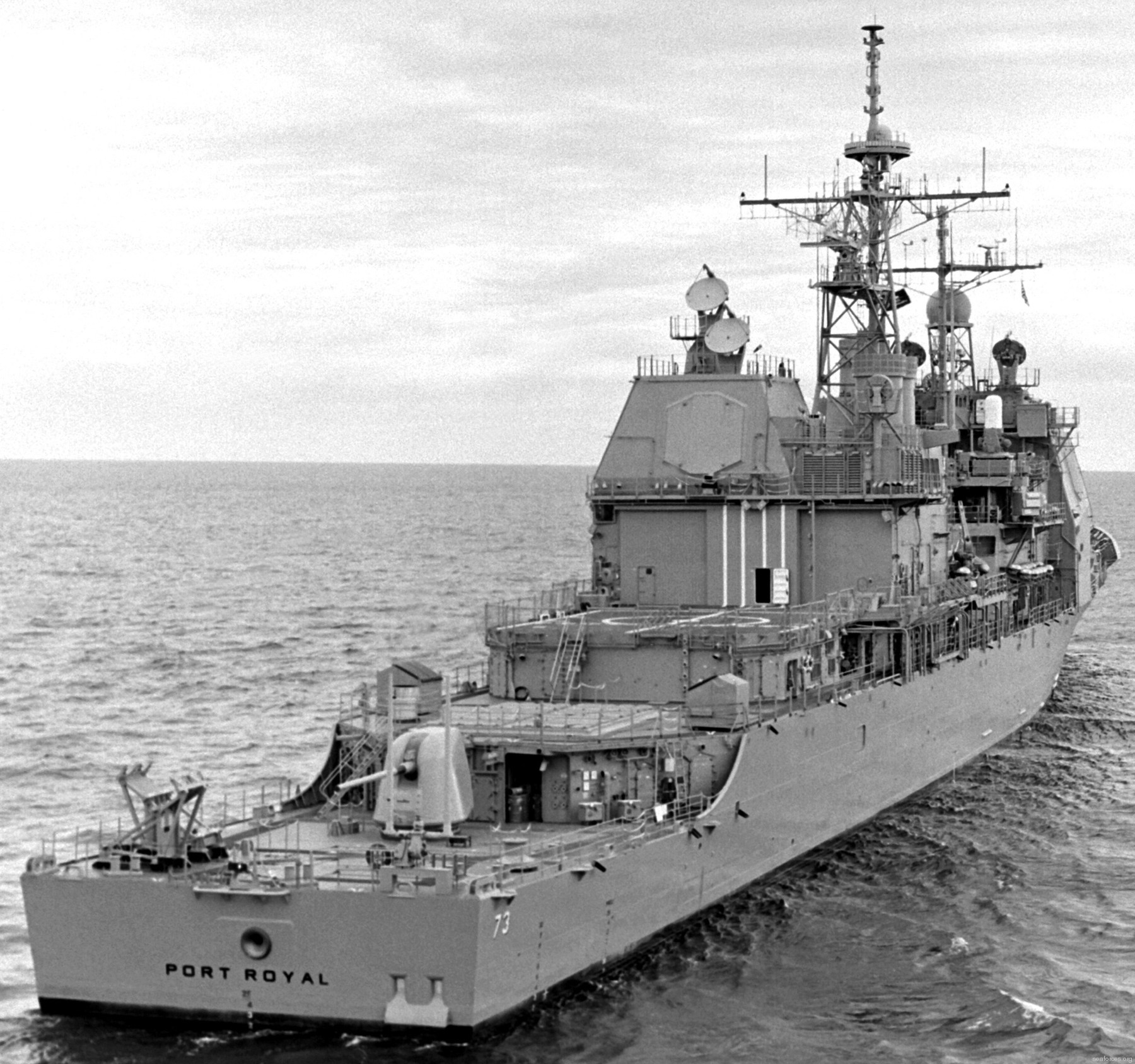 acceptance trials - February 1994  acceptance trials - February 1994 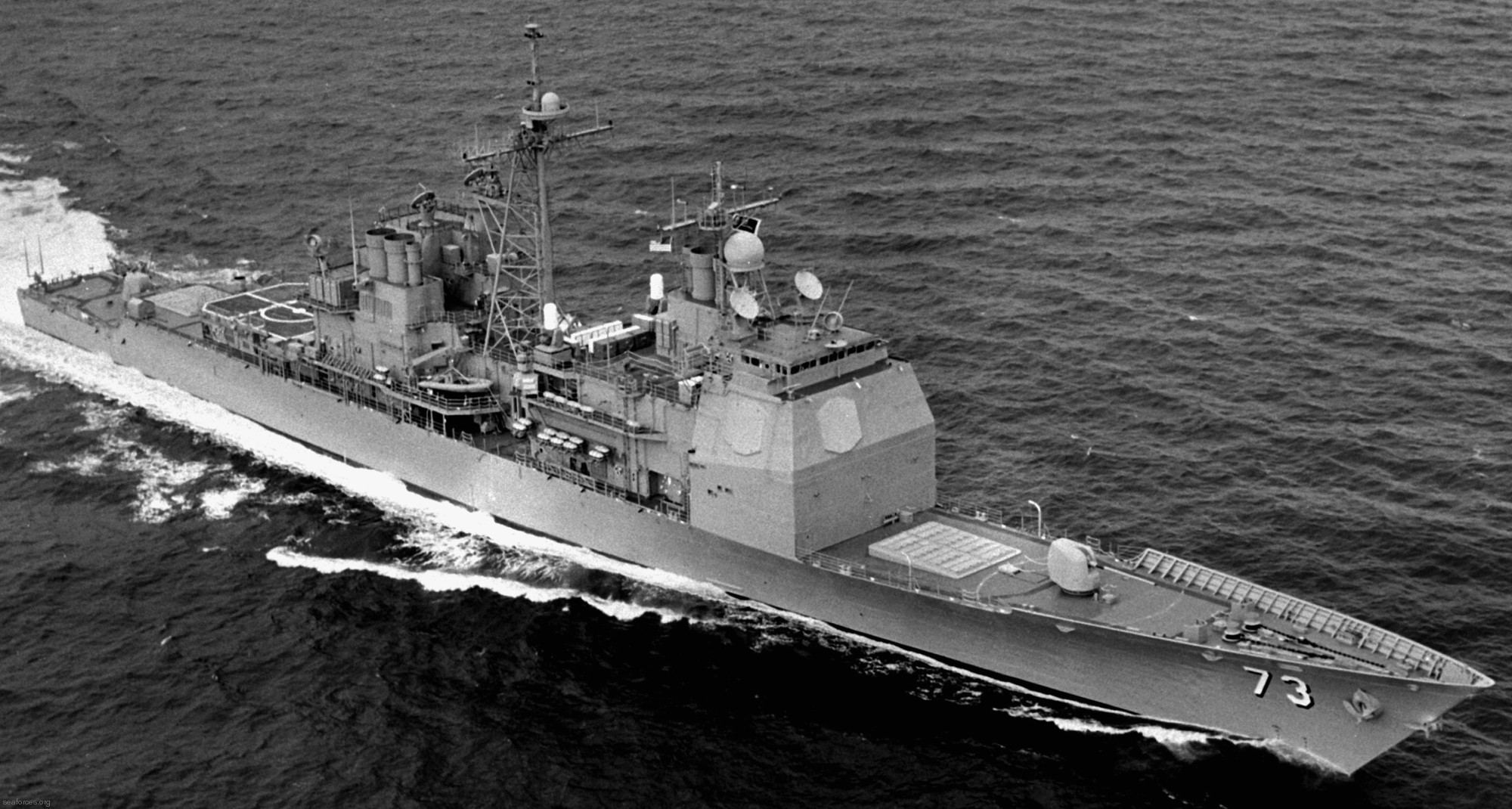 acceptance trials - February 1994 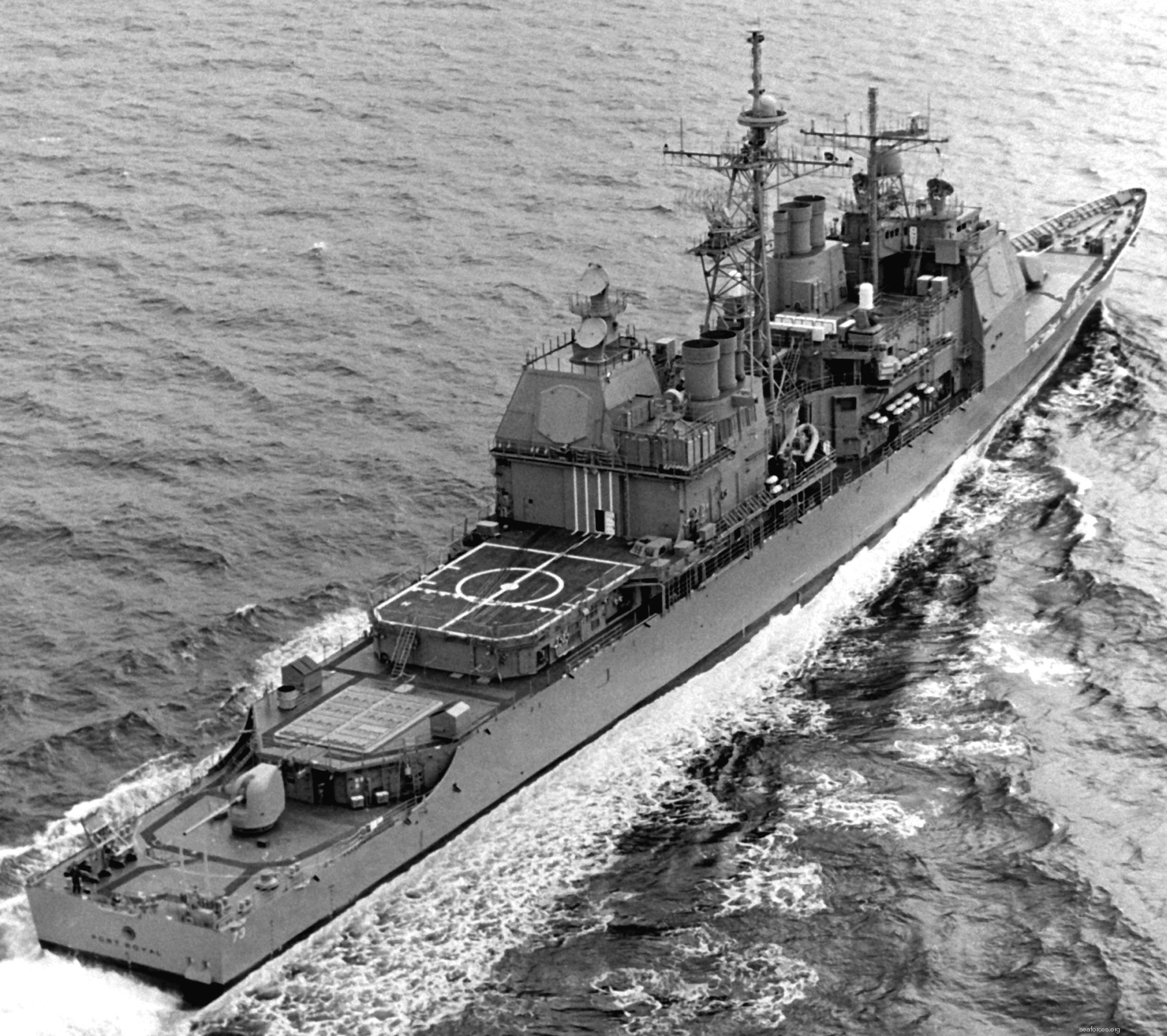 acceptance trials - February 1994 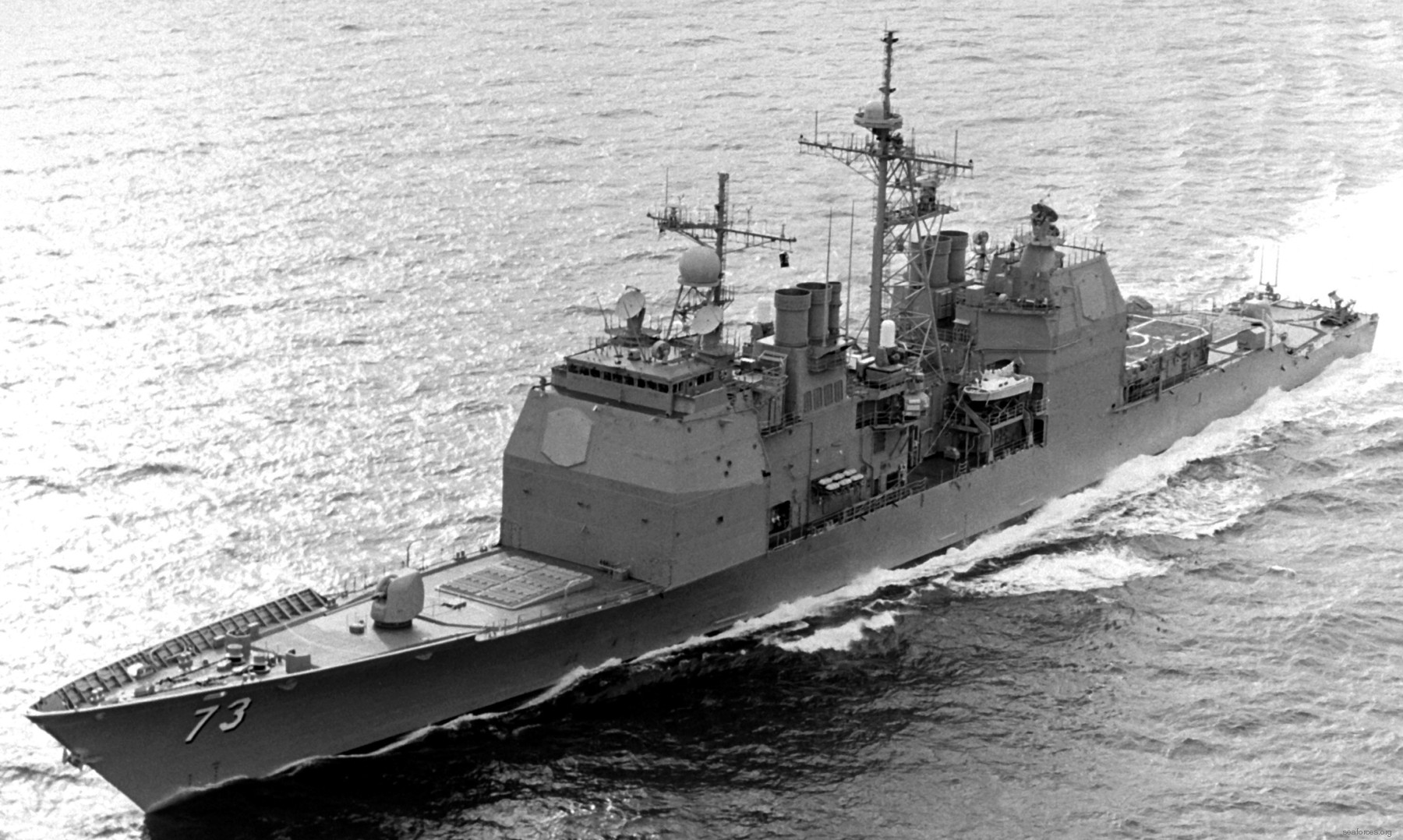 acceptance trials - February 1994 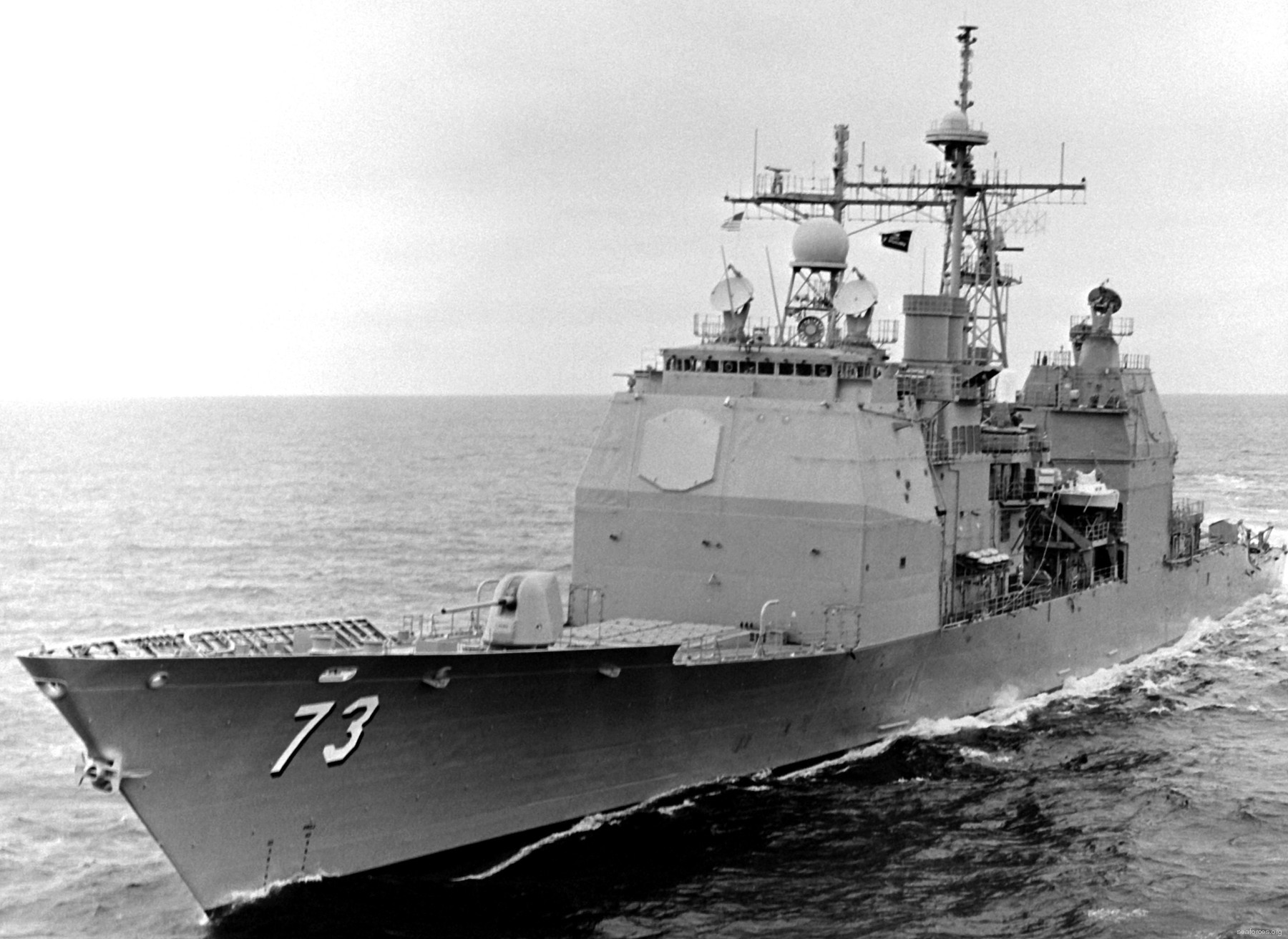 acceptance trials - February 1994 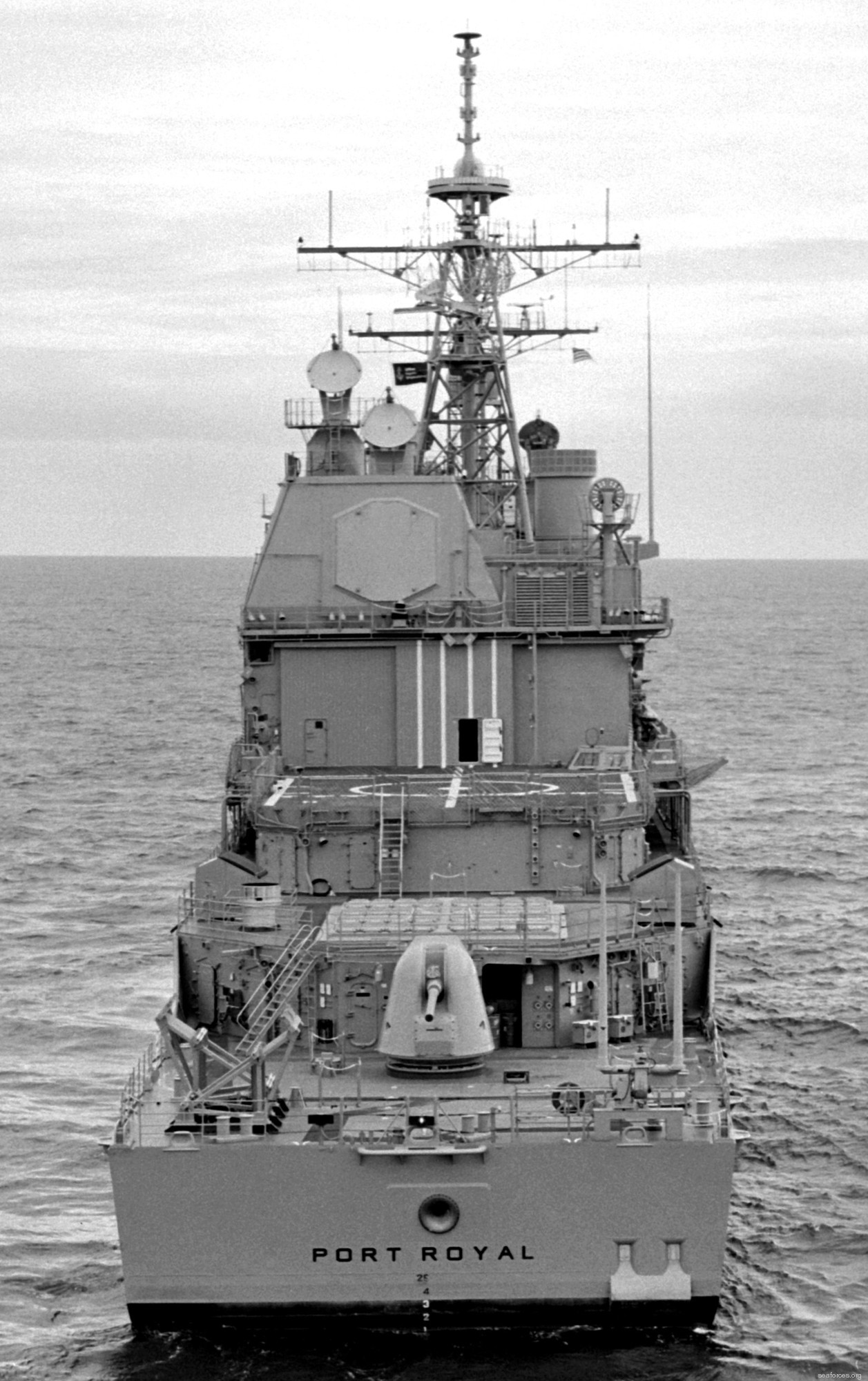 acceptance trials - February 1994 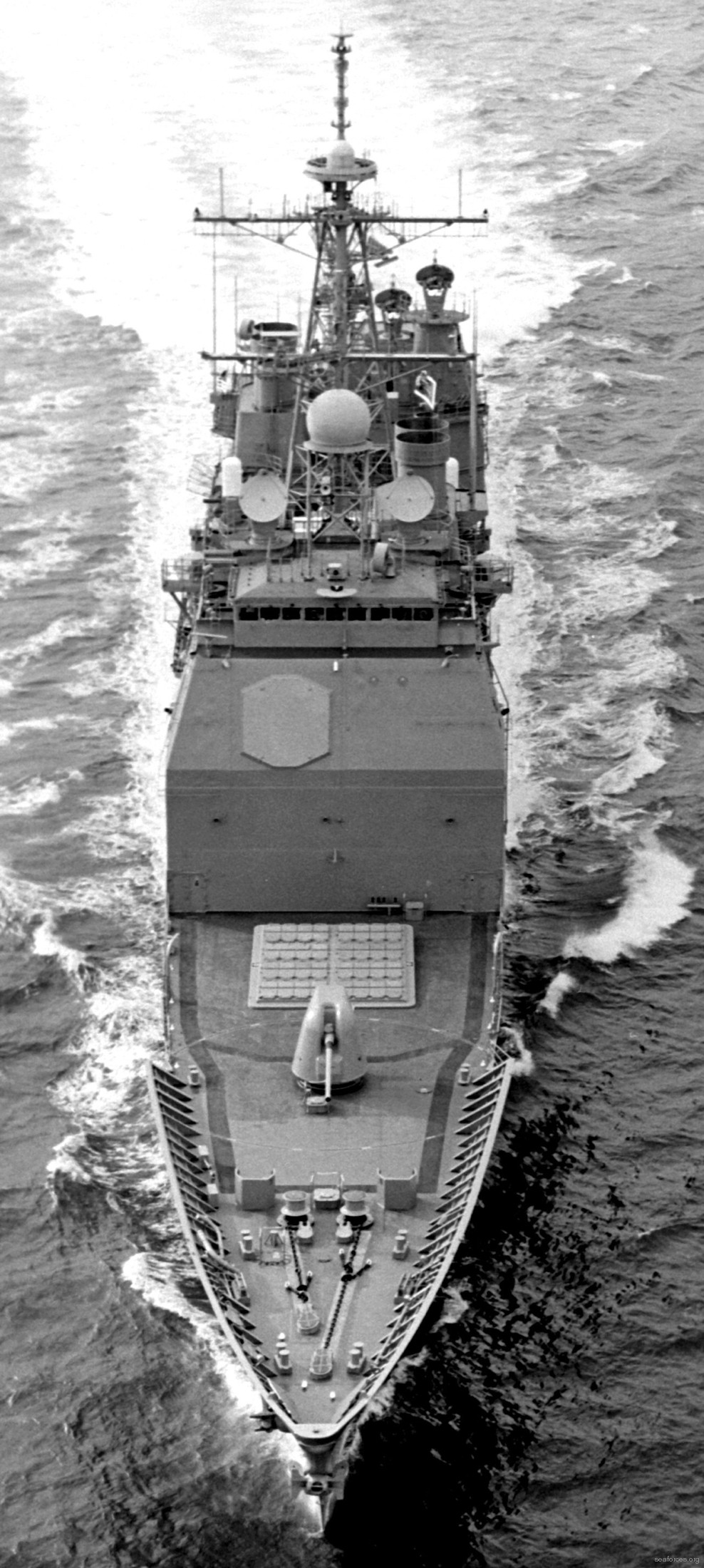
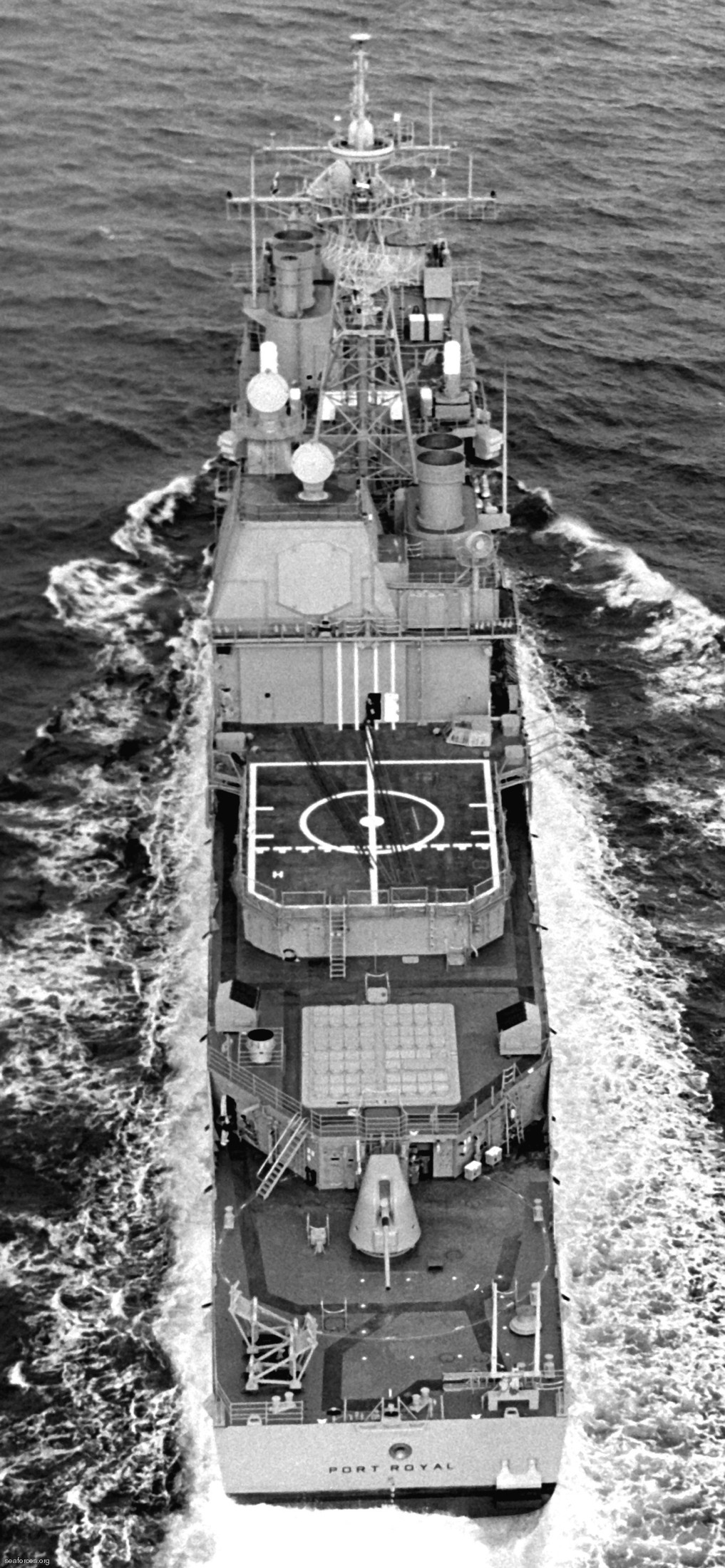 acceptance trials - February 1994 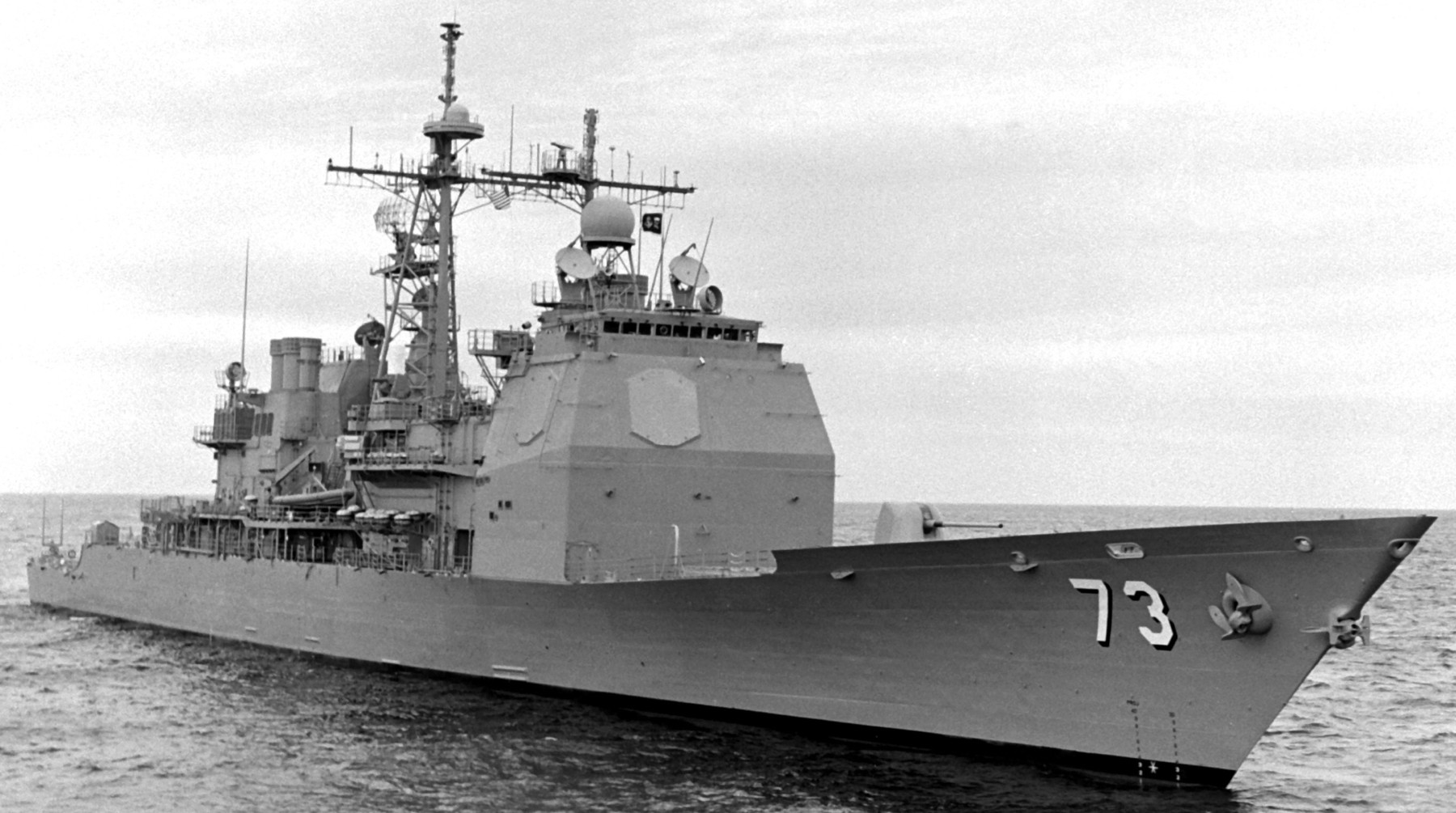 buider's sea trials - December 1993 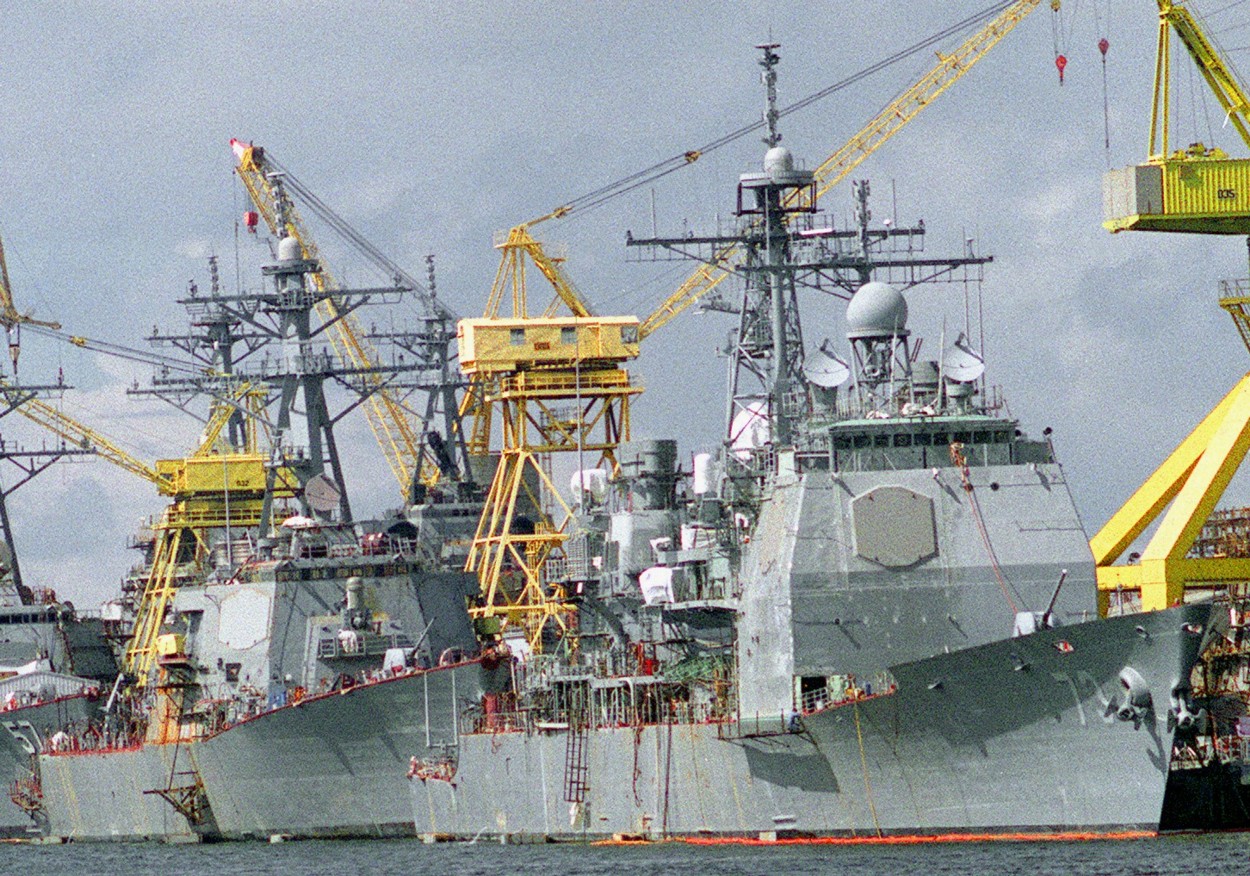 outfitting at Ingalls Shipbuilding, Pascagoula, Mississippi - October 1993 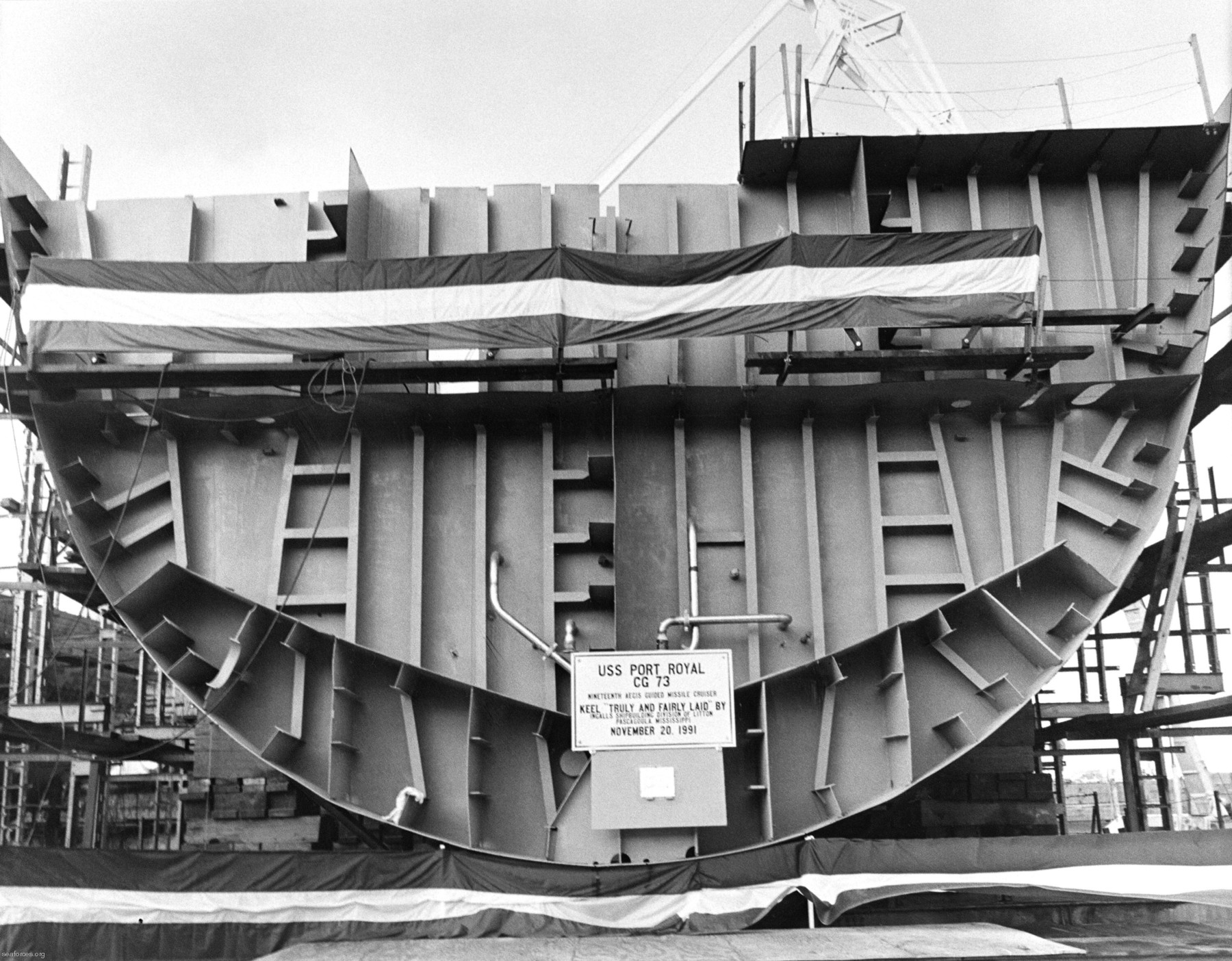 keel laying ceremony at Ingalls Shipbuilding, Pascagoula, Mississippi - November 20, 1991 |
||
|
USS Port Royal (CG 73): The life of USS PORT ROYAL as an AEGIS cruiser began at Ingalls Shipbuilding division of Litton Industries in Pascagoula, MS, with the start of fabrication work on November 9, 1990. CG 73's keel was laid on October 18, 1991. CG 73 was launched on November 20, 1992, and was christened on December 5, 1992, by Mrs. Susan G. Baker, wife of then Chief of Staff and Senior Counselor to the President, James A. Baker III. On December 6, 1993, PORT ROYAL sailed into the Gulf of Mexico for her first predelivery sea trials. The ship was delivered to the U.S. Navy by Ingalls on April 25, 1994, in preparation for formal commissioning ceremonies on July 9, 1994, in Savannah, GA. USS PORT ROYAL was one of the two US Navy ships to first receive TBMD system modifications and SM2 Block IV-A missiles, as part of the US Navy Theater Ballistic Missile Defense (TBMD). It was scheduled to conduct at-sea testing, develop core doctrine and tactics, and serve as focal points for developing the very latest theater ballistic defense technology. USS PORT ROYAL, along with USS LAKE ERIE (CG 70), has served as an operational unit for the development of doctrine and training, in addition to performance validation of the Navy Area TBMD Program. PORT ROYAL deployed in March 1996 as part of a battle group centered on the aircraft carrier USS NIMITZ to the waters near Taiwan. The NIMITZ battle group was the second carrier task force deployed to the area where tension were building over Chinese military exercises and missile tests just off Taiwan. In 1997, PORT ROYAL departed on its second deployment. She conducted surface and air defense operations for the USS NIMITZ battle group as it was operating in the Persian Gulf in support of the U.S. and coalition enforcement of the no-fly-zone over Southern Iraq. USS PORT ROYAL completed this second deployment in 1998. She supported Operation Southern Watch in the Arabian Gulf and participated in United Nations Maritime Interception Operations. USS PORT ROYAL enjoyed an historic port visit to Durban, South Africa, the first U.S. Navy ship to visit in over 25 years. While in Durban, more than 10,000 visitors toured the ship. USS PORT ROYAL underwent successful LINEBACKER sea trials at the Pacific Missile Range, Kauai, Hawaii, in the fall of 1998. PORT ROYAL was next scheduled to participate in at-sea TBM target tracking events that same fall. USS PORT ROYAL took part in the Northern Edge '99 Exercise. During Northern Edge '99, the Navy's Modeling and Simulation Center and the Army's Space and Missile Defense Battle Lab ran simulations which assessed the effectiveness of planned defenses against the missile threat. USS PORT ROYAL was connected to the TMD cell and shared warning information. In January 2000, PORT ROYAL left Pearl Harbor, HI, on its third WESTPAC deployment. During the deployment, the cruiser was part of the JOHN C. STENNIS (CVN 74) Battle Group and again operated in support of Operation Southern Watch. PORT ROYAL returned to Pearl Harbor, HI, in late June 2000. Following her return, USS PORT ROYAL entered dry dock on August 18, 2000, marking PORT ROYAL's first dry-docking since new construction in 1994. Repair of voyage casualties to the port hub and sonar dome were the hottest items for the dry dock period. Also accomplished during the dry-docking were numerous combat systems and quality of life upgrades. USS PORT ROYAL undocked from Pearl Harbor Naval Shipyard Dry Dock One on the evening of October 24, 2000, before conducting sea trials during a two-day underway at the end of the month. PORT ROYAL was afterwards scheduled to make a shakedown cruise to Tahiti, French Polynesia in November. USS PORT ROYAL conducted a Naval Surface Fire Support (NSFS) FIREX I exercise off the southeast coast of San Clemente Island on the morning of May 9, 2001. The first series of missions were spotter service exercises which were primarily conducted to train new Marine Corps spotters. Upon completion of the spotter services, the FIREX I began. The ship's forward gun mount (MT51) fired 72 rounds before a gun-loading casualty rendered it inoperative. The following day, the aft gun mount (MT52) suffered a minor casualty to the lower hoist assembly. PORT ROYAL nevertheless executed the remaining five missions of the FIREX I which included a coordinated illumination mission. Following the terrorist attacks in New York City and Washington D.C., USS PORT ROYAL departed Pearl Harbor, HI, on its fourth WESTPAC deployment on November 17, 2001. The cruiser was again assigned to the JOHN C. STENNIS Battle Group which deployed two months earlier than previously scheduled to provide support of Operation Enduring Freedom. In September 2003 USS Port Royal departed Naval Station Pearl Harbor for a scheduled deployment with the USS Peleliu Expeditionary Strike Group One (ESG 1) in support of the Global War on Terrorism. In January 2004 Boarding teams from CG 73 and the 13th Marine Expeditionary Unit (Special Operations Capable) intercepted a dhow in the North Arabian Sea with the result that fifteen individuals were detained and an estimated 2,800 pounds of hashish, stored in 50 to 100 pound bags, (approximately $11 million street value) were seized. In March USS Port Royal returned to homeport following a six-and-a-half month deployment in support of Operation Iraqi Freedom and Maritime Interception Operations (MIO) in the Persian Gulf. During the deployment Port Royal Participated in Exercise Sea Saber, the fifth in a series of multi-national exercises based on the Proliferation Security Initiative (PSI). In June 2005 USS Port Royal participated in the Portland Rose Festival. On February 27, 2006 USS PORT ROYAL, commanded by Capt. David Matawitz, departed Pearl Harbor for a six-month western Pacific deployment with the USS PELELIU ESG-3 in support of the Global War on Terrorism. During this deployment the ship conducted maritime interdiction and security operations off the Horn of Africa and in the Northern Arabian Gulf. During this deployment PORT ROYAL had the distinction to be visited by then Secretary of State, the Honorable Condolezza Rice. On August 5, 2006 PORT ROYAL returned to Naval Station Pearl Harbor after completing the six-month deployment. Under the Command of Captain David Adler USS PORT ROYAL departed Pearl Harbor on November 12, 2007 for a six-month deployment in support of Operation Enduring Freedom and Operation Iraqi freedom. While in the fifth fleet area of operation, PORT ROYAL assisted Bahrain with repairs to the Royal Bahraini Naval ship SABHA. On May 2, 2008 USS PORT ROYAL returned to Naval Station Pearl Harbor after a scheduled deployment in the western Pacific and Persian Gulf, as part of USS Tarawa (LHA 1) ESG. October 23, 2008 Capt. John Carroll relieved Capt. David B. Adler as commanding officer of the PORT ROYAL. On February 5, 2009 while undergoing sea trials after a shipyard availability, USS PORT ROYAL ran aground about a mile and a half from the entrance to Pearl harbor at about 9 p.m. Hawaii time. On February 9, USS PORT ROYAL was pulled off the reef by the USNS SALVOR along with 8 other tugs and towed back to Pearl Harbor. February 10, 2009 Capt. John Lauer III relieved Captain Carroll as Commanding Officer of PORT ROYAL and immediately led in the repairs and a vigorous training the crew. On September 24, 2009 after seven months of repairs and training the ship departed the dry dock and moored in Naval Station Pearl Harbor in preparations for upcoming Dock trials and Sea trials. On November 2, 2009, PORT ROYAL successfully navigated and returned to sea for a series of sea trials. In August 2010 USS Port Royal arrived in Seattle to participate in the 61st annual Seattle Seafair Fleet. In June 2011 USS Port Royal departed homeport for a scheduled independent deployment in the U.S. 5th and 7th Fleet Areas of Responsibility (AoR). In February 2012 USS Port Royal returned to Joint Base Pearl Harbor-Hickam after nearly an eight-month deployment. During he deployment Port Royal assumed command of Commander, Task Group Iraqi Maritime (CTG-IM), responsible for providing protection for the Al Basrah (ABOT) and Khawr Al Amaya Oil Terminal (KAAOT). In March the guided-missile cruiser participated in the integrated training exercise "Koa Kai 12-2". In July Port Royal participated in the multi-national exercise Rim of the Pacific (RIMPAC) 2012. In August USS Port Royal participated in a trilateral exercise with ships from the Japan Maritime Self Defense Force (JMSDF) and the Republic of Korea (ROK) Navy, off the coast of Hawaii. In February 2013 USS Port Royal departed Pearl Harbor to participate in a theater anti-submarine warfare (TASW) phase of the Submarine Commander’s Course (SCC) and a task group exercise (TGEX). source: USNavy - - - - - another history: Port Royal deployed from December 1995 until June 1996, as part of the Nimitz battle group Carrier Group Seven. The CVBG was participating in Operation Southern Watch, but was deployed to the South China Sea in March 1996, to act as a stabilizing force the Third Taiwan Strait Crisis. During this deployment, Captain Richards transferred command to Captain Gary Roughead on 21 January 1996. Following her first deployment, Port Royal became the first US cruiser to integrate women into the crew. Port Royal deployed with the Nimitz battle group for participation in Operation Southern Watch from September 1997 until March 1998. Port Royal deployed with the John C. Stennis battle group, participating in Operation Southern Watch. Leaving in January 2000, she returned to Hawaii early after sustaining damage to her port shaft and Hub during pursuit of a vessel suspected of smuggling Iraqi oil in violation of U.N. sanctions. She returned in June and then in August went into drydock for repairs and upgrades. Port Royal deployed early Pearl Harbor on 17 November 2001, to join the John C. Stennis battle group on deployment in support of Operation Enduring Freedom. In March 2003, she was assigned to Carrier Group Seven. Port Royal deployed with Peleliu Expeditionary Strike Group-One (ESG-1) in support of the Global War on Terrorism (GWOT) from 3 September 2003 until 11 March 2004. This was the very first deployment of an Expeditionary Strike Group. Port Royal deployed with Peleliu Expeditionary Strike Group-Three (ESG-3) in support of the Global War on Terrorism (GWOT) from 27 February 2006 until 5 August 2006. On 6 January 2008, the destroyer Hopper, Port Royal and the frigate Ingraham were entering the Persian Gulf through the Strait of Hormuz when five Iranian boats approached them at high speed and in a threatening manner. The U.S. ships had been in the Arabian Sea searching for a sailor who had been missing from Hopper for one day. The US Navy says the Iranian boats made "threatening" moves toward the U.S. vessels, coming as close as 200 yards (180 m). The U.S. Navy allegedly received a radio transmission saying, "I am coming at you. You will explode in a couple of minutes." As the U.S. ships prepared to fire, the Iranians abruptly turned away, the U.S. officials said. Before leaving, the Iranians dropped white boxes into the water in front of the U.S. ships. The U.S. ships did not investigate the boxes. Officials from the two nations differed on the severity of the incident. The Iranians claimed they were conducting normal maneuvers while American officials claimed that an imminent danger to American naval vessels existed. On 5 February 2009, at 21:00, Port Royal ran aground about a half-mile south of the Honolulu International Airport's Reef Runway. The ship had just come out of a dry dock after undergoing maintenance and was undergoing her first sea trials. No one was injured in the incident and no fuel was spilled. On 9 February 2009, Port Royal was pulled off the rock and sand shoal at around 2:00. No one was injured during the recovery effort. Captain John Carroll was relieved of his duties and, along with the ship's executive officer, commander Steven Okun and three other sailors, subsequently disciplined for dereliction of duty and improperly hazarding a vessel. Carroll had been the commanding officer of Port Royal since 23 October 2008. Rear Admiral Dixon R. Smith, who was aboard the ship, assumed temporary command on that day, and on 9 February, Captain John Lauer III, an official in Smith's Naval Surface Group Middle Pacific, assumed command. The warship suffered heavy damage to the underwater bow sonar dome and to her propellers and propeller shafts and was drydocked for repairs. Captain Neil Parrott was assigned to preside over the investigation into the grounding. On 18 February, the ship entered Dry Dock Number 4 at Pearl Harbor. The navy estimated that repairs would cost between $25 and $40 million. The ship left dry dock on 24 September 2009 but needed several more weeks of repair and assessment before returning to duty. 24 June 2011 - 13 February 2012: West PAC - Indian Ocean-Persian Gulf After repairs were effected, the cruiser departed on an eight-month deployment to the Western Pacific and Middle East but was forced to stop in Bahrain to have structural cracks repaired. Navy command was said to have lost confidence that the vessel had been restored to seaworthiness and, because of that, the ship was included on a list of seven cruisers slated for early retirement. Decommissioning in anticipation of eventual dismantlement was set for 31 March 2013. In May 2013, to answer queries made by Congress, Naval Sea Systems Command (NAVSEA) reported that the condition of the ship was comparable to certain other cruisers in the same class and that the effects of the grounding might not have been as severe as had been previously thought. A full report on the ship and her condition was anticipated in early August 2013. An April 2014 report by the GAO found that Port Royal was no more expensive to repair than other cruisers slated for retention. 25 August 2016 - 24 March 2017: West Pac-Indian Ocean-Persian Gulf On 24 March 2017, Port Royal returned to Pearl Harbor after a 212-day independent deployment to the Arabian Sea, Persian Gulf, Gulf of Oman, Red Sea, Gulf of Aden, South China Sea, Western Pacific, and Indian Ocean. During this time the ship conducted joint maritime security exercises with South East Asia partners, theatre anti-submarine operations, joint counterterrorism/smuggling exercises, Pacific presence operations in the South China Sea, 5th Fleet sector air defense, and carrier strike group operations with USS Dwight D. Eisenhower and USS Carl Vinson. Port Royal also conducted straits transits, providing protection for U.S. and international commerce and projecting sea control in the vicinity of Yemen and Somalia. On 24 March 2017, Port Royal returned to Pearl Harbor after a 212-day independent deployment to the Arabian Sea, Persian Gulf, Gulf of Oman, Red Sea, Gulf of Aden, South China Sea, Western Pacific, and Indian Ocean. During this time the ship conducted joint maritime security exercises with South East Asia partners, theatre anti-submarine operations, joint counterterrorism/smuggling exercises, Pacific presence operations in the South China Sea, 5th Fleet sector air defense, and carrier strike group operations with USS Dwight D. Eisenhower and USS Carl Vinson. Port Royal also conducted straits transits, providing protection for U.S. and international commerce and projecting sea control in the vicinity of Yemen and Somalia. In 2020, a US Navy budget plan proposed putting Port Royal, as well as her sisters USS Monterey, USS Shiloh, and USS Vella Gulf, on a path to early decommissioning, as they had not been modernized. In December 2020 the U.S. Navy's Report to Congress on the Annual Long-Range Plan for Construction of Naval Vessels stated that the ship was planned to be placed Out of Commission in Reserve in 2022. source: wikipedia |
||
|
About the Battle of Port Royal,
South Carolina - American Civil War - November 1861: The Battle of Port Royal was one of the earliest amphibious operations of the American Civil War, in which a United States Navy fleet and United States Army expeditionary force captured Port Royal Sound, South Carolina, on November 7, 1861. Early in the war, the U.S. Navy had the responsibility of blockading the Southern coastline, but found this task difficult when forced to rely on fueling and resupply ports in the North for its coal-fired steamships. The Navy needed a deepwater harbor on the Southern coast if it was to be expected to maintain a year-round blockade of busy ports such as Wilmington, Charleston, and Savannah. Port Royal Sound was probably the finest natural harbor on the Southern coast and was ideally suited for the role. An expedition to capture Port Royal Sound was organized in great secrecy. Flag Officer Samuel F. du Pont led the expedition of 74 wooden vessels, including transports for a land force of 12,000 men in three brigades, the Port Royal Expeditionary Force, commanded by Brigadier General Thomas W. Sherman. It was the largest fleet the United States had amassed up to that time. The fleet sailed under sealed orders on October 29, 1861, from Hampton Roads, taking great pains to conceal its destination. However, Confederate intelligence somehow learned the secret. Three days later, on November 1, the defenders of Port Royal received a specific telegram: "The enemy's expedition is intended for Port Royal." On that same day the fleet ran into a gale off Cape Hatteras, approaching hurricane strength. Two ships went down and the crew of a third had to heave her guns into the sea to keep from foundering. By the next morning, the fleet had been completely scattered. Flag Officer du Pont noted from his flagship, USS Wabash, that almost no other masts of the fleet could be seen. The fleet began arriving off the entrance to the Sound on November 3. The battle commenced when they entered the Sound at 9:30 a.m., November 7. Brig. Gen. Thomas F. Drayton, the Confederate commander at Port Royal, wrote that there was "not a ripple upon the broad expanse of water to disturb the accuracy of fire from the decks of that magnificent armada." Port Royal Sound was defended by Fort Beauregard to the north, on Bay Point on Eddings Island, with 13 guns, and by Fort Walker on Hilton Head to the south, mounting 23 guns (although only 16 were operational in the battle). The forts were less than 3 miles apart across the Broad River, strongly built, and manned by gunners who had been alerted for over a week of the impending attack. The Confederates also had a flotilla under Commodore Josiah Tattnall of three tugboats, mounting one gun each, and a converted river steamer. Flag Officer du Pont divided his fleet into a main squadron of nine of the heaviest frigates and sloops in line, and a flanking squadron of five gunboats. The plan was to enter the Sound in parallel columns, the lighter squadron to starboard, and pass midway between the forts, receiving and returning the fire of both. Two miles beyond the entrance, the main force was to swing around to the south and come back west moving slowly past Fort Walker, maintaining the heaviest possible fire from their 123 guns, then around to the north and head back east, slowing again as they passed Fort Beauregard. The flanking squadron was to peel off and engage the Confederate flotilla or whatever targets of opportunity they came across while the main force had both forts under fire, widening the elliptical attack so is to bring its guns in closer on every turn. At the first turn of the Union fleet inside the Sound, Tattnall brought his four gunboats down the sound and let go several broadsides at the Wabash when she was within range. When fire was promptly returned, he retreated in the face of 14 gunboats to his immediate front and took up shelter in Skull Creek, 3 miles northwest of Fort Walker. As the fleet began its run to the east, it began to bombard the northern end of Fort Walker. The Confederate return fire was generally ineffective. The ships on their elliptical course were undergoing constant changes in speed, range, and deflection, making them hard to hit. Also, many of the shells would not fit the guns, the powder was inferior, and some of the guns were disabled by severe recoil. (Due to shortages of ammunition, the Confederate gunners had not had the luxury of target practice before the attack.) The fort had been designed to defend against an attack coming in from the ocean, not from inside the sound. Now it was receiving approximately 24 rounds per minute. The flanking squadron added its fire. On the second pass of the ellipse they came within 600 yards of Fort Beauregard, which by this time had only three guns left in working order. While rounding to the south to begin the third ellipse, du Pont received a message that Fort Walker had been abandoned. At 2:20 p.m. a naval landing party raised the Union flag over the ramparts and the Army transports delivered troops by nightfall to occupy the works. On Bay Point across the way, Fort Beauregard lowered its flag at sunset and the Army occupied it early the next morning. It had been a relatively easy victory. The Union casualties were 8 men killed and 23 wounded during the four hours of firing. The Confederates suffered 11 killed, 48 wounded, and 7 missing. Within the next three days the Union force moved up the rivers and inlets and occupied the colonial towns of both Beaufort and Port Royal. The day after the capture of Port Royal, General Robert E. Lee arrived in Savannah as the newly appointed commander of the South Atlantic coastal defenses. He regarded this assignment as "another forlorn hope expedition - worse than West Virginia" (where his Confederate military career had gotten off to a slow start with a lackluster campaign). The Union now had a defensible deepwater port some 50 miles from Charleston, the birthplace of secession. It would use the port for its intended purpose, resupplying the blockading fleet, but also as a jumping off point for land operations in South Carolina during the war. |
||
| patches + more | ||
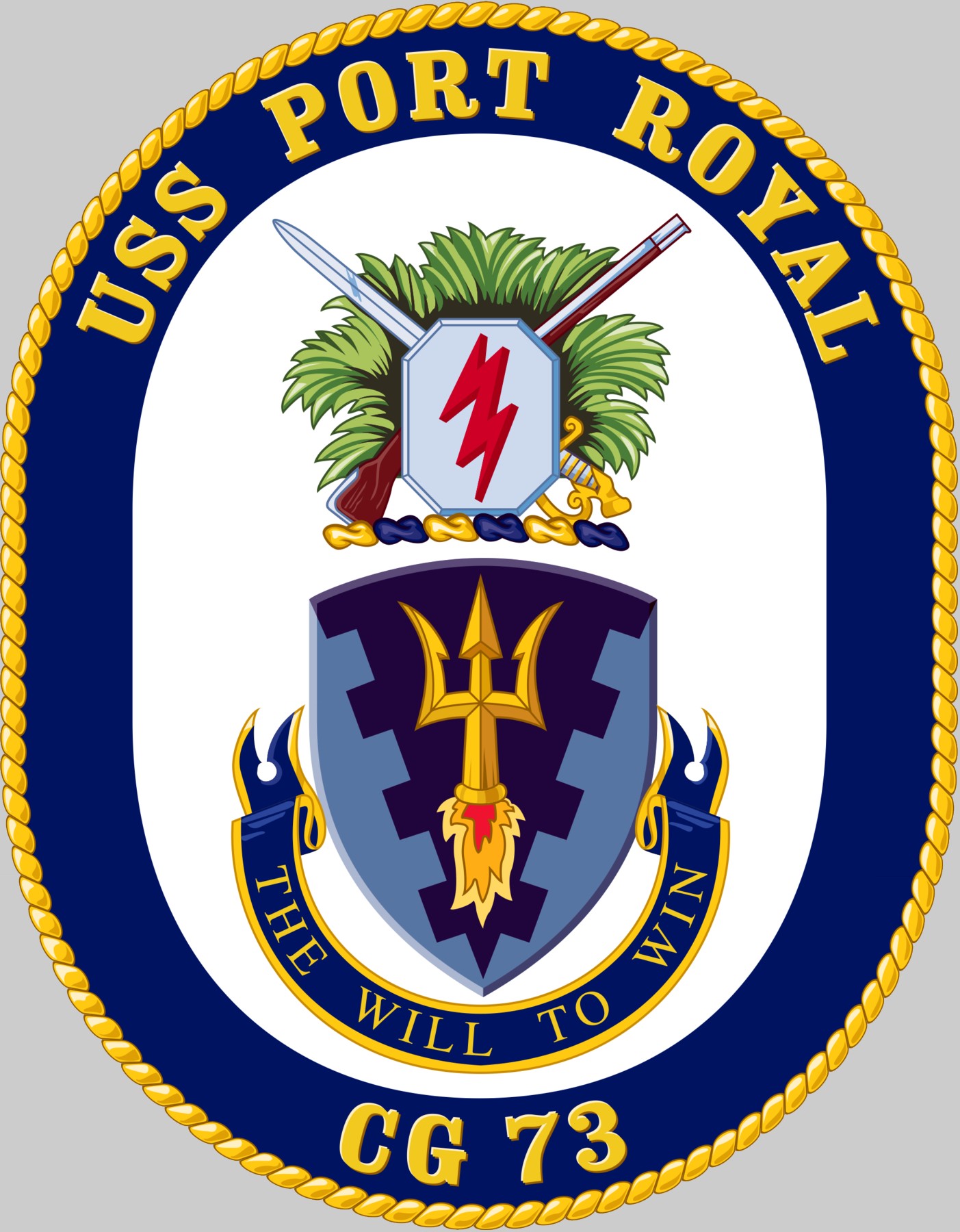 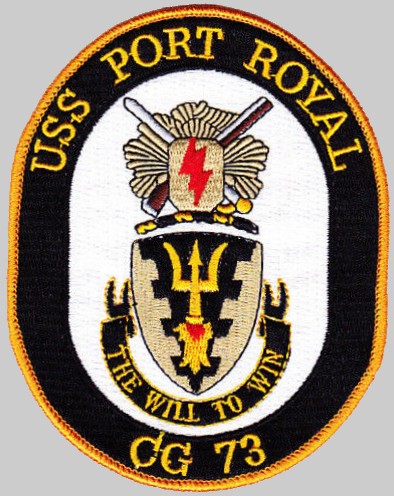 |
||
|
|
seaforces.org |
USN ships
start page | |